



Structured approach improves calf health




UK DAIRY DAY
What can visitors expect to see in Telford?
Pages 56-69

BREEDING
A look at the August bull proofs run


Pages 22-26

DAIRY SHOW
A 10-page sneak peek at this year’s show
Pages 70-79
MILK PRICES
Pages 84-86
–
TIP OF THE MONTH: Get the correct level of sodium chloride in cow diets
p46
Pages 18-19 Youngstock
September 2023 Volume 70 Issue 9









Take the next step with Mastitis Vaccination
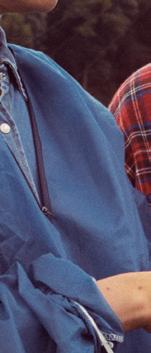


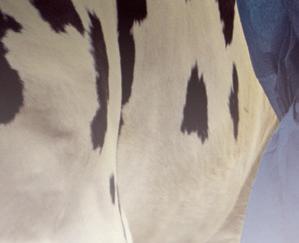
Ask your vet about your mastitis prevention plan






S. uberis






28,2% E. coli

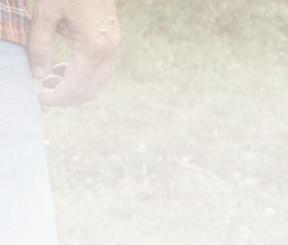


11% Staph. aureus
11% Non-aureus Staph
Andrew Biggs BVSc, FRCVS and Vale Veterinary Laboratory Data Primary pathogen identified in all high SCC and clinical mastitis milk samples from 2019-2021. STARTVAC® Inactivated vaccine, Bovine mastitis, in injectable emulsion. COMPOSITION PER DOSE (2 ML): Inactivated Escherichia coli (J5) 50 RED60*; Inactivated Staphylococcus aureus (CP8) SP 140strain expressing SAAC** 50 RED80***. Adjuvant. * RED60: Rabbit effective dose in 60% of the animals (serology). **SAAC: Slime Associated Antigenic Complex. ***RED80: Rabbit effective dose in 80% of the animals (serology). INDICATIONS: Cows and Heifers: To prevent Mastitis For herd immunisation of healthy cows and heifers, in dairy cattle herds with recurring mastitis problems, to reduce the incidence of sub-clinical mastitis and the incidence and the severity of the clinical signs of clinical mastitis caused by Staphylococcus aureus, coliforms and coagulasenegative staphylococci.The full immunisation scheme induces immunity from aproximately day 13 after the first injection until approximately day 78 after the third injection (equivalent to 130 days postparturition). Further information available from the SPC or on www.hipra.com. For more information about side-effects, precautions, warnings and contraindications please refer to the SPC, the packaging or product leaflet. LEGAL CATEGORY: POM-V- Veterinary medicinal product under veterinary prescription.
MARKETING AUTHORISATION HOLDER: Laboratorios Hipra, S.A. la Selva, 135, 17170-AMER (Girona) SPAIN. MARKETING AUTHORISATION NUMBERS: UK(GB): Vm17533/5010, UK(NI): EU/2/08/092/003-6. Use Medicines Responsibly. UBAC®, emulsion for injection for cattle. COMPOSITION PER DOSE: Lipoteichoic acid (LTA) from Biofilm Adhesion Component (BAC) of Streptococcus uberis, strain 5616 ≥ 1 RPU. Montanide ISA 907.1 mg. Monophosphoryl Lipid A (MPLA). INDICATIONS: For active immunisation of healthy cows and heifers to reduce the incidence of clinical intramammary infections caused by Streptococcus uberis, to reduce the somatic cell count in Streptococcus uberis positive quarter milk samples and to reduce milk production losses caused by Streptococcus uberis intramammary infections. Further information available from the SPC or on www.hipra.com. For more information about side-effects, precautions, warnings and contra-indications please refer to the SPC, the packaging or product leaflet. LEGAL CATEGORY: POMV- Veterinary medicinal product under veterinary prescription. MARKETING AUTHORISATION HOLDER: LABORATORIOS HIPRA S.A. Avda. la Selva 135. 17170 Amer (Girona) Spain. MARKETING AUTHORISATION NUMBERS: UK(GB): Vm17533/5011, UK(NI): EU/2/18/227/001-004. Use Medicines Responsibly. These products are not licensed for concurrent use. A decision to use either of these vaccines before or after any other veterinary medicinal product therefore needs to be made on a case-by-case basis.
HIPRA UK and IRELAND Foxhall Business Centre, Foxhall Lodge, Foxhall Road, Nottingham, NG7 6LH. United Kingdom Tel.: (+44) 0115 845 6486 · ukandireland@hipra.com · www.hipra.com
35,9%
4,4%
2,5%
2,7%
0,9%
3,6%
Strep. dysgalactiae
Bacillus
Coryne. bovis
Klebsiella spp
Others
Contacts



a word from the editor
As we approach the end of another season, it always seems like a good time to look back and re ect before turning our a ention to what lies ahead in the coming months.
ere’s no doubt the summer of 2023 has been a challenging one; the weather has been unpredictable to say the least. We’ve gone from one extreme to the other in terms of rainfall, making silaging and managing grazing particularly di cult.
No season is without its challenges though, and as we move towards the end of summer, thoughts will soon turn to autumn and winter jobs, and let’s hope we get some decent weather to get the maize crops o .
Once again, I was excited to be involved in the #FARM24 campaign, which saw farmers from
all over the country take to social media to showcase the wonderful industry we are involved in (for more on this, see pages 32-33).
As well as involvement from some high pro le celebrities, MPs and farming in uencers, the day also garnered incredible a ention from the public, and we hope campaigns like this go some way to connecting the consumer with how food is produced on-farm. ank you to everyone who showed their support and got involved.
Events
And as we approach the end of summer, we say goodbye to the summer shows, but also look forward to some more industry-focused events. In this edition of Dairy Farmer, we take a look at what’s in store at UK Dairy Day and e Dairy Show. I hope to see some of you at these events.
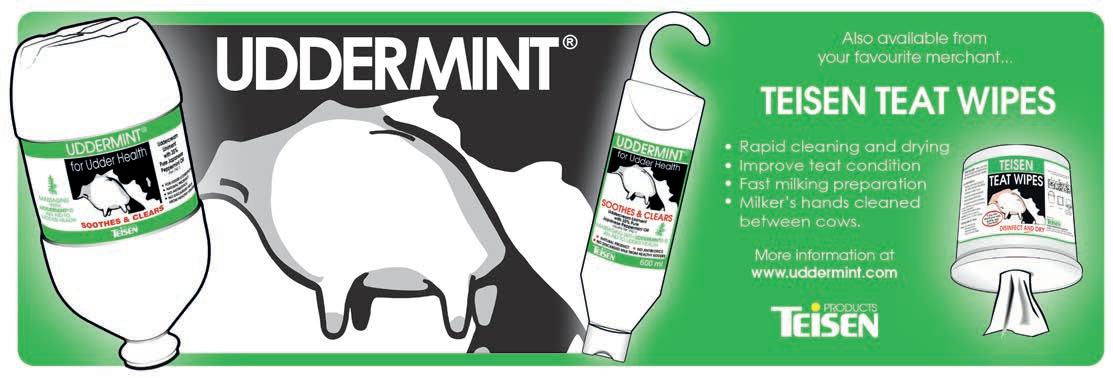
3
Dairy Farmer, Unit 4, Fulwood Business Park, Caxton Road, Preston, Lancashire PR2 9NZ Origination by Farmers Guardian, Unit 4, Fulwood Business Park, Caxton Road, Preston, Lancashire PR2 9NZ. Printed by Precision Colour Printing, Halesfield 1, Stirchley, Telford TF7 4QQ. No responsibility can be accepted by Dairy Farmer for the opinions expressed by contributors. Editor Katie Jones 07786 856 439 katie.jones@agriconnect.com Content Editor/Designer Mike Begley 01772 799 405 mike.begley@agriconnect.com Picture Editor Marcello Garbagnoli 01772 799 445 marcello.garbagnoli@agriconnect.com Sales Director Stephanie Ryder 07917 271 987 stephanie.ryder@agriconnect.com Account Manager Mark Jackson 01322 449 624, mark.jackson@agriconnect.com Classified Advertisements 01772 799 400 fgclassified@agriconnect.com Advertising Production Justine Sumner 01772 799 437 Fax: 01772 796 747 justine.sumner@agriconnect.com Circulation and subscriptions 0330 333 0056 help@subscribe.farmers-guardian.com Subscription rates: UK £65 a year Europe: £85 World: £95 ISSN 1475-6994 © Farmers Guardian 2023 All rights reserved. No part of this publication may be reproduced or transmitted in any form or by any means, electronic or mechanical including photocopying, recording, or any information storage or retrieval system without the express prior written consent of the publisher. The contents of Dairy Farmer are subject to reproduction in information storage and retrieval systems.
SEPTEMBER 2023
What’s inside?
Farmers feel ‘social fabric’
Farmers feel a ‘hidden agenda’ in Welsh Government to reduce livestock numbers threatens the social fabric and culture of Welsh-speaking rural communities.
Recently, Dairy Farmer’s sister title Farmers Guardian reported on a Wales civil service document, which claimed ‘big emissions numbers in the Welsh agricultural inventory will always come from ruminants’ and that ‘the elephant in the room is always livestock numbers’. e document looking at how agriculture and land use change and forestry can support the Welsh Government’s climate and greenhouse gas targets stated the ‘onus’ will be on developing agricultural and land use policies to meet targets, as these areas are devolved. e source of the document, a farmer who asked to remain anonymous, said ‘it seems agriculture is the so target’ and labelled the wording ‘in ammatory’.
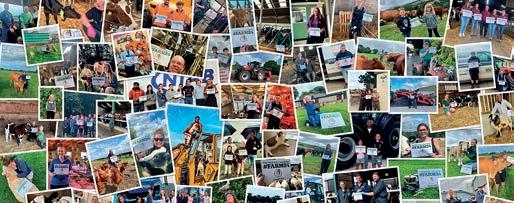

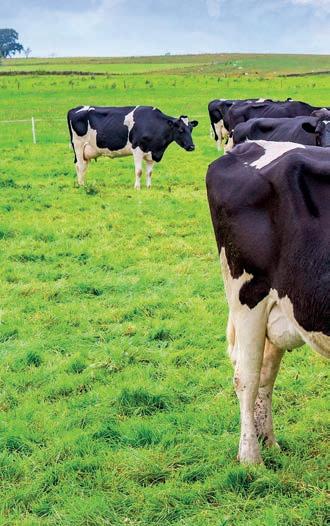
e farmer said: “ at is the only way to put it. e Welsh Government goes a er trees and livestock, which means everything else we might be doing to be more
‘Costly investment’ on livestock housing grant
JFunding for investment in livestock housing has been welcomed by the sector, but farmers have raised concerns about the logistics of obtaining planning permission and barriers to new entrants. A further £10 million has been made available by Defra to support the cattle sector to revamp or replace ageing housing infrastructure on-farm.
Paul Tomkins, a dairy farmer in the Vale of York, said the grant should be applauded, but questioned its longevity.
He said: “I hope that the budget grows and the o ering stays on the table for some time, as in my experi-
ence, even with the grant, investment decisions of this size are not taken overnight and farmers need time to t it into existing investment cycles.”
Issues around planning and landlord consent, as well as blocking out new entrants, have also been raised by farmers. Defra con rmed the grant was only available to existing ca le farmers with 11 or more ca le. It said application timelines have been ‘developed with consideration of the permissions and approvals required to upgrade or build new calf housing’ and more information will available on their website later this summer.
NEWS 4
SEPTEMBER 2023 VOLUME 70 ISSUE 9 SEPTEMBER 2023 8 DAIRY TALK Updates from Dan Burdett and Becky Fenton 10 ON FARM New entrants embrace a simple farm system 14 DAIRY MATTERS ‘What has happened to the proven bull?’ 16 VET’S VIEW Is ketosis a problem on your farm? 18 YOUNGSTOCK Structured approach helps improve health 20 WORLD DAIRYING Mobile robotics on a Dutch family farm 22 BREEDING Highlights from the latest run of bull proofs 28 HERD IMPROVEMENTS 30 MAIZE 32 #FARM24 34 FAMILY FARMING 38 BRITISH FARMING AWARDS 40 MANAGEMENT 44 MOVING FROM BEEF 46 NUTRITION 50 FUTURE-PROOFING 54 MILK FROM FORAGE 56 UK DAIRY DAY PREVIEW What to expect in Telford 70 DAIRY SHOW PREVIEW Upcoming event sneak peek 80 MACHINERY 84 MILK PRICES 88 MILK ANALYSIS Prices weakening 90 NEW PRODUCTS Round-up of products and updates hitting the market 94 GOOD EVANS ‘We still have the ‘right to roam’ to come’ 96 BUSINESS CLINIC 98 RESEARCH 32-33 #FARM24 highlights 38-39 BFAs shortlist revealed Welsh Government has denied there are plans to reduce livestock numbers.
destocking threatens in devolved nations
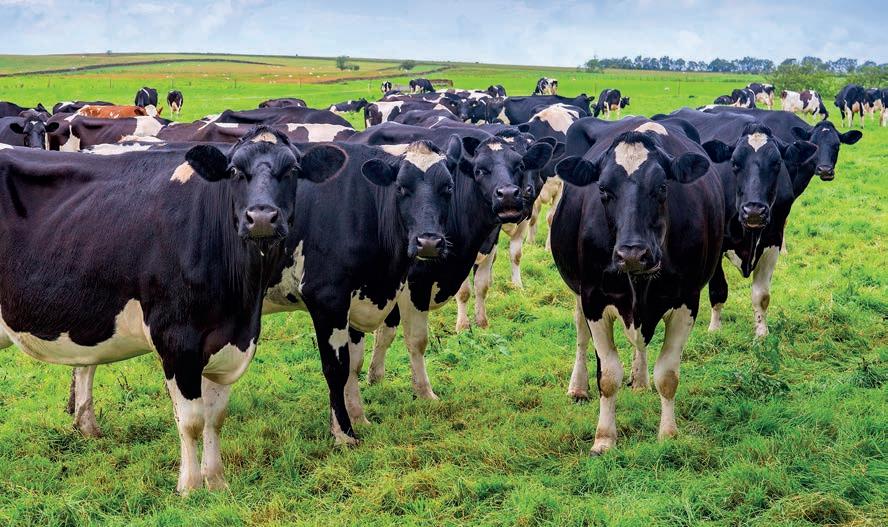
e cient as producers on-farm, such as investing in natural capital, is all irrelevant.”
ey added the target on livestock was unwarranted and there should be some focus on fossil fuels.
Agriculture makes up about 80% of land use in Wales and is the country’s largest employer.
Farmers said there would be a knock-on e ect on other major employers and any destocking could ‘reshape the entire fabric of Wales’.
Rural A airs Minister Lesley
Gri ths denied there was any agenda to reduce livestock numbers and claimed she had never seen the document.
Direction of travel
Meanwhile, unions in Northern Ireland and Scotland have also raised concerns about the direction of travel.
Ulster Farmers’ Union policy manager James McCluggage said:
“ ere is a lack of recognition of the di erence between short-lived greenhouse gases, such as methane, and how they impact warming and the impact of carbon dioxide.”
In Scotland, NFU Scotland director of policy Jonnie Hall said it was clear Sco ish farmers and cro ers would have to do the required heavy li ing and they could deliver on the triple challenge of ‘food, climate and biodiversity –but only if enabled to do so’.

RAKE, SEED AND ROLL

Applications for dairy course
JBusiness training course, Entrepreneurs in Dairying, run by the Royal Association of British Dairy Farmers, has opened to applicants ahead of its start in October. The course is open to anyone involved in, or looking to be involved in, the dairy industry.
Seven sessions
Held across four months, there are a total of seven sessions, covering a variety of topics such as understanding the milk market, business and succession planning and people management.
rForms are available to download at rabdf.co.uk, and the course costs £490 plus VAT.
Investment in fight against endemic livestock disease
JThe Biotechnology and Biological Sciences Research Council Defra has announced £9 million funding for phase two of the endemic livestock disease initiative. The goal of the initiative is to deliver innovative on-farm solutions which will effectively mitigate the impact of endemic diseases on the UK livestock sector.









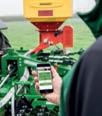









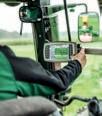


















ENGINEERING
DÜVELSDORF GRASSLAND MAINTENANCE EQUIPMENT FROM LYNX Rake out weeds and mosses with GREEN.RAKE Fully adjustable levelling rail and rake angle Optional seeder with SEED.CON smartphone control interface TERRA.ROLLER with Cambridge or toothed rings Even weight distribution - uniform ground pressure Use rake and roller independently or coupled together MORE WAYS TO ADD MORE PRODUCTIVITY FRONT LOADERS • FRONT LINKAGES & PTOs • PICK-UP HITCHES • WEIGHTS • REVERSING FANS • FRONT PRESSES For further details about any products in the Lynx Engineering range call us today on 01327 843215 or visit www.lynx-engineering.co.uk NEW
NEWS 5
SEPTEMBER 2023
Farm vets fear for UK dairy without Gov intervention
Farm vets are concerned more dairy farmers will continue to leave the industry if the Government does not step up and start supporting them properly.
VetPartners, which looks a er a number of the UK’s dairy herds, has lobbied MPs to ask the Government to urgently address the volatility of the milk market, at a time when farmers are not only faced with a low milk price, but also burdened with increased costs.
e reaction from farm vets followed an initial le er which was dra ed and sent to MPs by Jack Balkham, a clinical director at Westpoint Farm Vets in Ashford, Kent.
Milk prices have fallen in recent months, although they steadied for
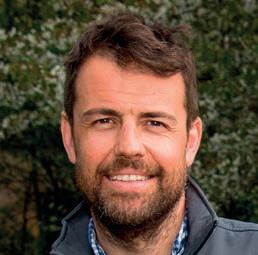

August and September, with reports of a rise in dairy dispersal sales in di erent areas of the country, particularly in the South West.
Farm vets have called for a minimum farmgate price to be introduced to ensure a ‘fair deal’ for primary milk producers, other dairy products and meat.
VetPartners farm director Ian Cure is among the farm vets who have raised concerns about the future of UK dairy farming.
He said farmers he works with will ‘always prioritise health and welfare for the cows and produce
fantastic local food’, but said the Government’s position to reduce in ation should not be ‘at the expense of farmers’.
He said: “We have already seen many farmers leave the sector for economic reasons. Food security for this island nation is paramount and I believe we must take action now to prevent more farmers leaving the industry.”
Mr Cure, alongside other farm vets, support the implementation of a minimum farmgate price to ensure a ‘fair deal’ for farmers. e vets recognised that it would

There have been reports of a rise in dairy dispersal sales in different areas of the country, particularly in the South West.
increase costs, but said supermarkets should burden some of that cost and ‘critical primary producers’ should not always bear the brunt of market uctuations.
Fair price
Farming Minister Mark Spencer said: “Farmers must be paid a fair price for their produce and that is why I am introducing regulations this autumn to make sure supply contracts in the dairy sector are fair and transparent, meaning farmers can challenge prices or raise concerns with contracts more easily.”
Frustration over ‘damaging messaging’
JA children’s book has sparked frustration among farmers online for its ‘misinformed and over simplified’ portrayal of livestock farming and its contribution to climate change.
The book, ‘Can we really help polar bears? Yes we can’, contained messages including ‘most cows are only here because humans want them for their meat and milk’ and its reference to forests being cut down to ‘make
space to grow and feed farm animals’, adding ‘you need 10 times more land to farm beef than you do to farm plants’.
Farmer Matthew Blair responded online, saying: “What hope is there? There is one thing writing it, there is another thing plying children of today with utter rubbish.”
Farmer and conservationist
Joe Stanley said: “I would love to sit down with you to explain why inaccurate messaging like this is
part of the cause – not solution –to climate change.”
Clinician-scientist and professor of cardiovascular pharmacology at the Royal College of Surgeons in Ireland, Prof Alice Stanton, criticised the book for appearing to encourage children to limit their intakes of dairy and red meat and to replace whole foods with ultra-processed plant alternatives, such as veggie burgers.
Prof Jude Capper, who is a
livestock sustainability consultant, said the messaging was ‘oversimplified’ and sends out a ‘damaging message’.
“Yes, it takes more land to produce a beef burger than a veggie burger, but most of that land cannot be used for anything but grazing. In the UK, more than 60% of agricultural land is unsuitable to grow anything but grass.”
Usborne Publishing was contacted for comment.
NEWS 6
SEPTEMBER 2023
VetPartners farm director Ian Cure.

A recent economic analysis1 suggests that giving Bovikalc® to all cows* around calving can almost always deliver a positive financial return. So the hurdle of identifying cows at risk of subclinical hypocalcaemia, can effectively be removed.
THE WHOLE HERD APPROACH FOR HYPOCALCAEMIA
Two
Reference
stochastic estimate of the economic impact of oral calcium supplementation in postparturient dairy cows. J Dairy Sci. 2015 Oct;98:7408-18. Bovikalc® contains calcium chloride and calcium sulphate. Further information available from Boehringer Ingelheim Animal Health UK Ltd RG12 8YS, UK. UK Tel: 01344 746960 (sales) or 01344 746957 (technical), IE Tel: 01 291 3985 (all queries). Email: vetenquiries@ boehringer-ingelheim.com. Bovikalc® is a registered trademark of the Boehringer Ingelheim Group. ©2019 Boehringer Ingelheim Animal Health UK Ltd. Date of preparation: Sept 2019. AHD 12773. All rights reserved. Use Medicines Responsibly.
The whole herd approach for managing “milk fever” *
lactations or greater.
1. McArt and Oetzel. A
DAIRYTalk
Dan Burdett
Dan and his family own and run the 300-hectare (741-acre) Cockhaise Farm, near Haywards Heath, West Sussex. The farm is home to an organic autumn-calving herd of 240 Holstein and Friesian crosses. He also contract farms another organic autumn-calving herd of 220 cows at Bore Place, near Edenbridge, Kent.
“ We are now left with the diehard organic producers
We have now dried all the cows o , switched o the water heater and ice bank, ready for some much-needed downtime away from the farm.
In many ways our calving date is dictated by school summer holiday dates, allowing us to spend a couple of weeks with the kids away from the farm before calving madness sets in in the middle of August.
It also gives me a chance to look back on a reasonably successful lactation, with milk nally going past 6,000 litres per cow and conception rates remaining at about 70-75%.
We are still su ering the a er a ects of the wet spring, with some elds still baring the scars of enforced turnout when silage began to run short.
As I write this, our clamps look worryingly empty, with a very poor spring barley wholecrop last week.
e weather is currently on our side with plenty of moisture, so we hope two more good cuts of grass might just see us over the line.
e very high milk price for much of the previous nancial year meant a reasonably successful year for both farms, but this year feels very di erent.
Milk price is forecast to be down by one-third, but feed price is only down about 20%, so the ratio feels unnervingly fragile.
Organic dairies
Many organic dairy farmers up and down the country will have been scratching their heads and redoing budgets over the past few months, trying to gure out whether the gamble has been worth it.
On the whole, we are now le with the diehard organic producers, many of whom have been in since the late 1990s when Government support rst arrived. is is therefore not just a nancial decision, but also a philosophical one, with organic being at the heart of everything they do and everything they believe in.
Many have already handed in their notice, and it will be interesting to see where the supply is by next spring.
For us, we hope to ride out the storm this winter, keep spending to a minimum and wait to see what changes the drop in supply might make next year.
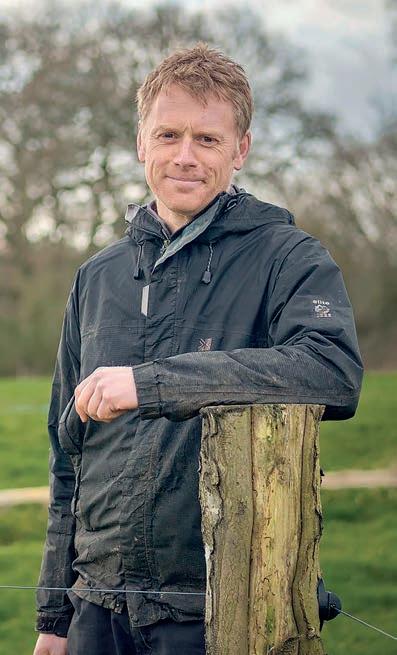
From experience of previous organic downturns, we know there will be an upside, it is just a question of when.
e past three months have opened my eyes to the challenges of the job market in our industry. Having to replace our previous herd manager in May, it took until late July to bring the right candidate on to the farm.
Ghosting
I had never heard of the term ‘ghosting’ before, whereby a candidate leads you to believe they are keen on a job, up until the point where they simply cease communication, o en overnight, leading to huge frustration on my behalf and lots of wasted time.
ankfully it all led to nding a very enthusiastic candidate who we will be able to mould to our own requirements, so at least there was a happy ending.
8
SEPTEMBER 2023
Becky Fenton
Becky Fenton and husband Paul milk 200 pedigree Holsteins under the Springlebee prefix at Centenary Farm, a Cheshire county council farm. In 2021, they bought a farm in Staffordshire and they plan to farm there once the new dairy set-up has been built.
“ It is always an eye-opener visiting other farms and I came home with several ideas
As I write this, we have just had our rst dry day in what seems like weeks. e elds are saturated, the tracks are muddy and the gateways even worse. Hopefully summer will resume henceforth.
Recently we a ended Oswestry Show where we were showing some calves. Sadly it was a complete washout. Such a shame for a small agricultural show. No doubt a endance was diminished, but credit to the show for its ‘the show must go on’ a itude. Regardless of the weather it was nice to get out and see people.
We currently seem to have a hundred jobs going on at once and it is di cult to see the wood for the trees.
With winter not that far away, our mission to get sheds erected is at the forefront of the list.
We are pu ing a new calf shed up. is will be for milk calves and weaned calves. We have always struggled with pneumonia at Centenary Farm and we hope a designated calf shed will improve calf health. at said, I am sure we will make some adaptions once in use.
In addition to the calf shed, we are building a youngstock/straw shed. We have always been overstocked during winter and we all know ca le never do as well when crowded, therefore we are hoping we get be er growth rates with more space.
I had the pleasure of stewarding a class for the Cheshire Farms Competition. It was a delight to see such good farms and I know the judge thoroughly enjoyed his day out.
It is always an eye-opener visiting other farms and I came home with several ideas.
What struck me was that all the farms we visited kept youngstock in, only turning out in-calf heifers. is is not something we have considered, but perhaps there are bene ts to explore.
ere are so many di erent ways of farming, but not one system suits all. It is always good to remain open-minded and learn from others.
Congratulations to the Garne family on achieving supreme champion farm.
We have two cuts of silage le to do in Cheshire and one cut le at our Sta ordshire farm. We are then reseeding about 121 hectares with a perennial blend
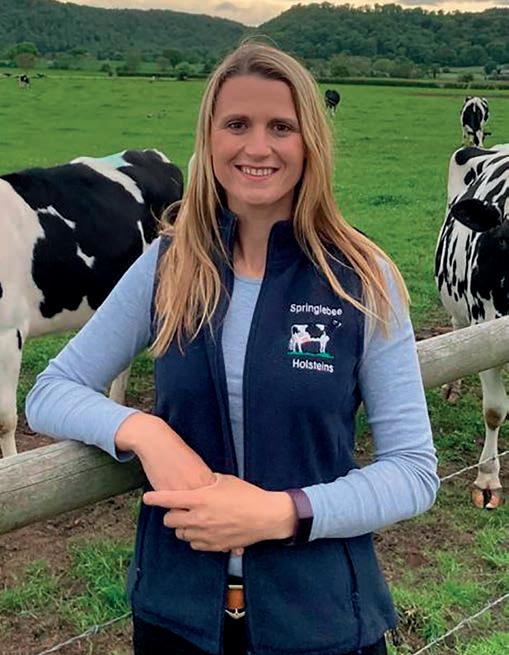
of ryegrasses and white clover. is will also meet the requirements for the Sustainable Farming Incentive improved grassland grant.
e lagoon and tower will be emptied prior to ploughing. e lagoon will need to be dug out due to the build-up of sand, one disadvantage of bedding on sand I suppose.
Finally, we have our dry cows grazing in a eld next to our drive. e eld also backs on to our non-farming neighbours’ gardens.
e neighbours really enjoy the maternity ward being on their doorstep and we welcome any questions they have.
Some of recent the phone calls, however have become too frequent. One being: “I hate seeing dead calves.” Our reply: “It’s not dead, it’s just sleeping.”
And another phone call: “You be er come quick as there is blood on the cow’s udder and tail.” Our reply: “It’s red spray.”
9 DAIRY TALK
SEPTEMBER 2023
A focus on grazing and reducing cost have been a winning combination for an organic farm run by Dai and Sophie Wilson. Tom Woolman reports.
New entrants embrace a simple farm system
In just 10 years, Dai and Sophie Wilson have progressed from new entrants to stakeholders in a substantial business at Starveall Farm in Bishopstone, Wiltshire. rough milking cows once a day, their system revolves around simplicity and cost management. ey are running the farm for pro tability but also for resilience; nancially and productively.
In 2012, Dai, who was a herd manager for a local farm, and Sophie, who was an aspiring vet student, approached Sophie’s tenant farmer parents with a view of running an enterprise in their own right.
While they thought about ca le, the challenges of bovine TB in the area made them take a di erent path.
Purchasing some New Zealand Romneys in 2013 with no prior experience, they initially rented 62 hectares (153 acres) from Sophie’s parents. Building the ock over time, they got to 1,200 ewes in 2019.
ey had always planned to grow sheep numbers to later nance a move into dairy, but Dai says they enjoyed running the sheep ock.
“In terms of growing grass and converting it into money, sheep are great. You do not need to spend much capital. We had a dog, a Land Rover and a Pra ley, and we only got the Pra ley in our second year.”
However, they then saw an opportunity at Sophie’s parents’ farm to make a switch to dairy. ere were some old buildings

surrounded by a large accessible acreage which was being used for a rotation of outdoor pigs, arable and beef.
In 2019, they entered into a structured formal agreement with Sophie’s parents, with the new entrants providing labour, management and machinery while the established farmers provided infrastructure and cows.
ey sold most of the sheep to buy the cows and, as pro t was generated, they bought more of the herd from the other partners. Now, all of the cows are owned by the Wilsons, and they employ one member of sta , Danny Smith, who the Wilsons credit with much of the success of their unique dairy system.
e farm began running
with an ultra-low input/output model, which it uses today. More land has now been added to the block and 370 cows are milked once a day over a 280ha (692 acre) platform.
e Wilsons had started o milking twice a day, but they tried milking once a day in September 2020 as yields dropped.
Beneficial
ey experimented again in July 2021 when the drought meant that forage was in short supply. Both times there was a bene cial e ect which gave the Wilsons the con dence to milk entirely once-a-day from the start of the 2022 season.
“
e only reason you would choose to milk twice a day is yield,” says Sophie. “Every

other metric improves with milking once a day”.
But when plans for further investment fell through, the Wilsons were forced to contemplate how to milk their cows without the additional housing infrastructure that they had been anticipating. While there was a barn suitable for housing already on-farm, it was only enough for 90 cows.
e farm sits between 600 and 800 above sea level on the North Wiltshire Downs; with chalk loam providing good drainage, the couple a empted to overwinter the majority of the herd.
Looking back, this was one of the best things that could have happened, says Dai. “You can graze a eld in
SEPTEMBER 2023 10 ON FARM
PICTURES : Nigel Goldsmith
Sophie and Dai Wilson with their son, Bob, 20 months old.
The only reason you would choose to milk twice a day is yield. Every other metric improves with milking once a day
SOPHIE WILSON
January and be back on it in late April with no reseeding cost.”
He adds that during the winter months it only takes about an hour to check and move the cows.
“It is reasonably physical work but I would rather do that any day of the year than brush cubicles.”
Cows are put in sections of 0.25ha (0.6 acre) with six to
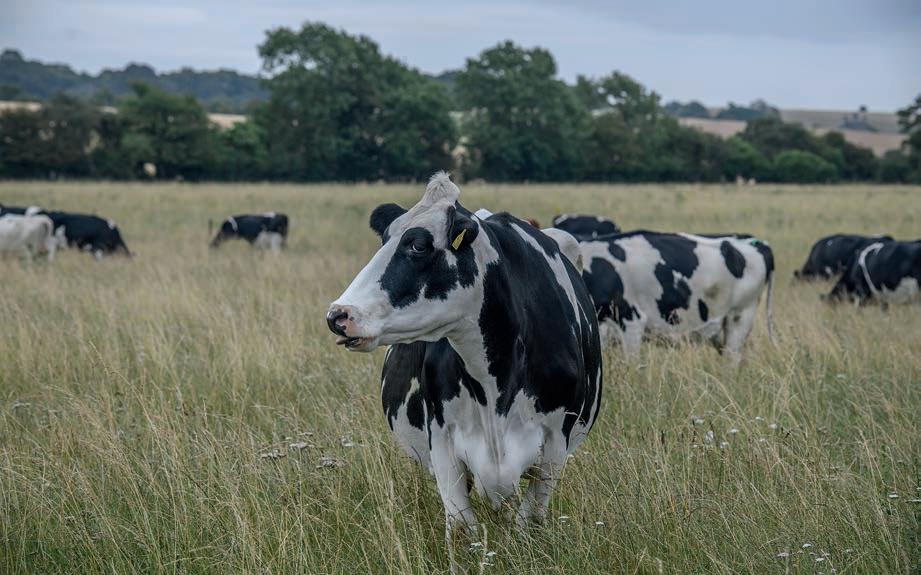

eight round bales per day, which are unrolled when they are fed. e farm does not make much hay, choosing to mostly purchase the minimum they need for the winter. e time saved is stark, but so is the cost di erence, says Dai.
“ ere is no tractor involved, no mucking out, no bedding, no reseeding – it is just so cheap.”
cows, with outwintered cows dra ed o once a week to house them before calving.
Mr Wilson estimates that the farm only uses about 300 tractor hours a year, discounting any bought-in hay.
Grass



e barn houses the calving

SAFEGUARDING YOURCALVING





Ge ing milk from grass is extremely important, with rotational and mob grazing being utilised
at di erent times of the year. Covers are kept longer and herbal leys have been introduced, which are more resilient in mob grazing systems. is allows long-term soil health to improve and makes the sward far more resilient to drought by creating a forage bu er in front of the cows.

Rotations can be between 30 and 60 days depending on the






















11
RUMENADE RAPIDSCOURRECOVERY 2FOR1 OFFER ThefollowingtermsandconditionsapplyinadditiontothePromotersstandardtermsand www.calvingfirstdefence.com Termsandconditionsapplyseebelowfordetails. Applycodeatcheckout 8YKY3XR74MCX
BUY ONLINE
Cows are milked once a day at Starveall Farm.
ON FARM
time of year and grass growth.
Sophie says: “ is management suits our free draining soil. With heavy clay soil you might take a di erent approach, and certainly could not outwinter in the same way.
“But all farms have di erent opportunities, and we had the opportunity to lose some cost out of the system, simplify things, and put the cows under less pressure. In many ways, it makes it easier and more enjoyable to run.”
Only 400kg of cake is used per cow per year, predominantly targeted at freshly calved cows which receive 2kg per day. Last year, the economics of this approach were vindicated, with the cost of feeding additional organic cake di cult to justify.
Yields
Yields are not anything special, admit the Wilsons, and with the drought impacting grazing last year, cows were averaging 3,200 litres per cow. On a manufacturing contract with Arla, the farm is targeting 380kg of milk solids per cow for the current season.
Dai says: “We are only striving to do the basics well.
We are not trying to smash records. If we can get the cows in-calf, calve well, turn some grass into milk and earn some money, then we are pre y happy with what we are doing.”
A large bene t of the oncea-day milking system is the positive impact on fertility management, says Dai. e herd calves over 10 weeks at the end of February. Last year, only 8% of cows failed to hit this target.
“In 2020, we were milking twice a day in the heat of June and our empty rate was 20%. Now, they do all their walking in the morning for the milking, then they are not stressing in the heat.”
e genetics of the herd are currently made up of British Friesian, Montebeliarde and Norweigan Red crosses. e couple are keen to replace the Montbeliarde with Jersey to reduce the size of cow and increase milk solids further; they are currently favouring Viking Jersey for robustness.
Heifers have a larger yield reduction with once-a-day, normally more than 30%, but Dai says reduction in pressure has a big positive impact on fertility, with 98% last year
making it to second lactation. Once the number of cows incalf is known, then provisional plans are made for drying o .
“ e most important thing about the autumn management is that the focus is on se ing ourselves up for success the following spring. Rather than maximising production in the current lactation, we are leaving enough grass cover and managing cow condition,” says Sophie.
Organic
As commi ed organic farmers, the Wilsons are not shy about discussing their di erent approach to more traditional organic systems. Despite being organic land since the early 1990s, a rotation of grass, pigs and arable has meant that while the nutrient values in their soil were good, the structure was
Farm facts
relatively poor due to regular ploughing and disturbance.
Sophie says: “We de nitely have a di erent view on ploughing and cultivating the soil. It is not about having no rotation necessarily, but not turning the soil over anywhere near as frequently. We see the soil as a living ecosystem which we want to protect and improve.”
Currently, the Wilsons are looking to replicate their system on another organic dairy and start to run two herds.
“We are terrible for taking on new projects,” says Sophie, who is also a partner at CW Farm Vets. e couple like a challenge, which can also be seen in Dai training to run an ultra-marathon.
“What does the future hold?” He says. “We want to make our farming easier, more enjoyable and more pro table.”
rThe farm comprises 280 hectares (692 acres) and milking cow numbers stand at 370-head rCows are milked once a day though a Waikato 24/48 swingover parlour built by New Zealand parlour specialist Chris Randrup
rSexed semen is used to breed all replacements, with the remainder of the herd put to Aberdeen-Angus
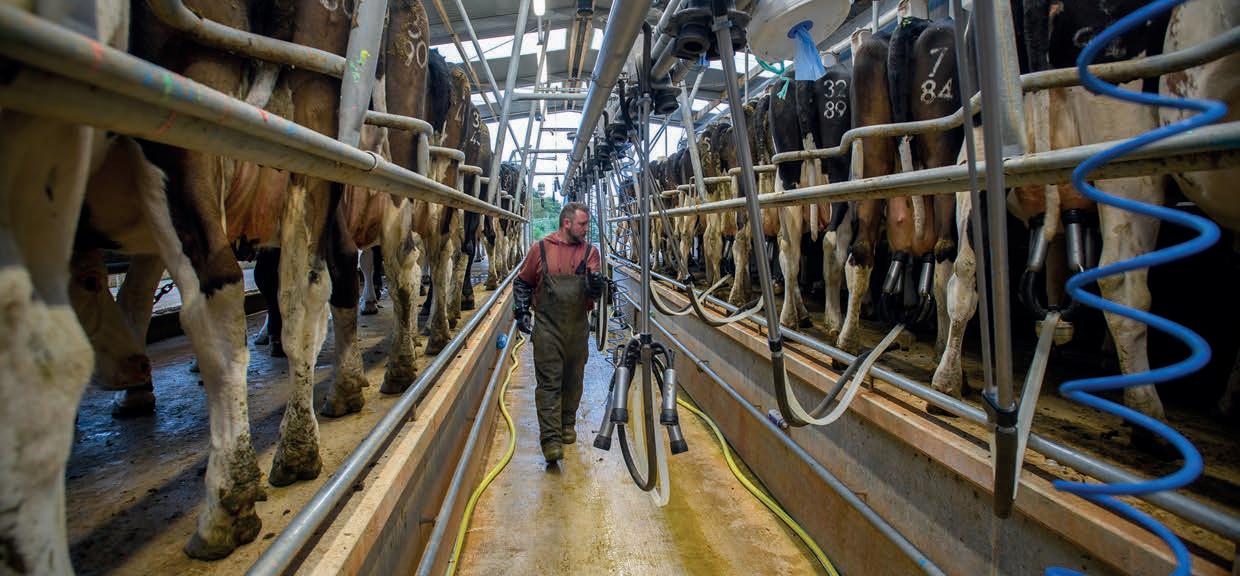

SEPTEMBER 2023 12
The Wilsons credit Danny Smith with much of the success of their unique dairy system.
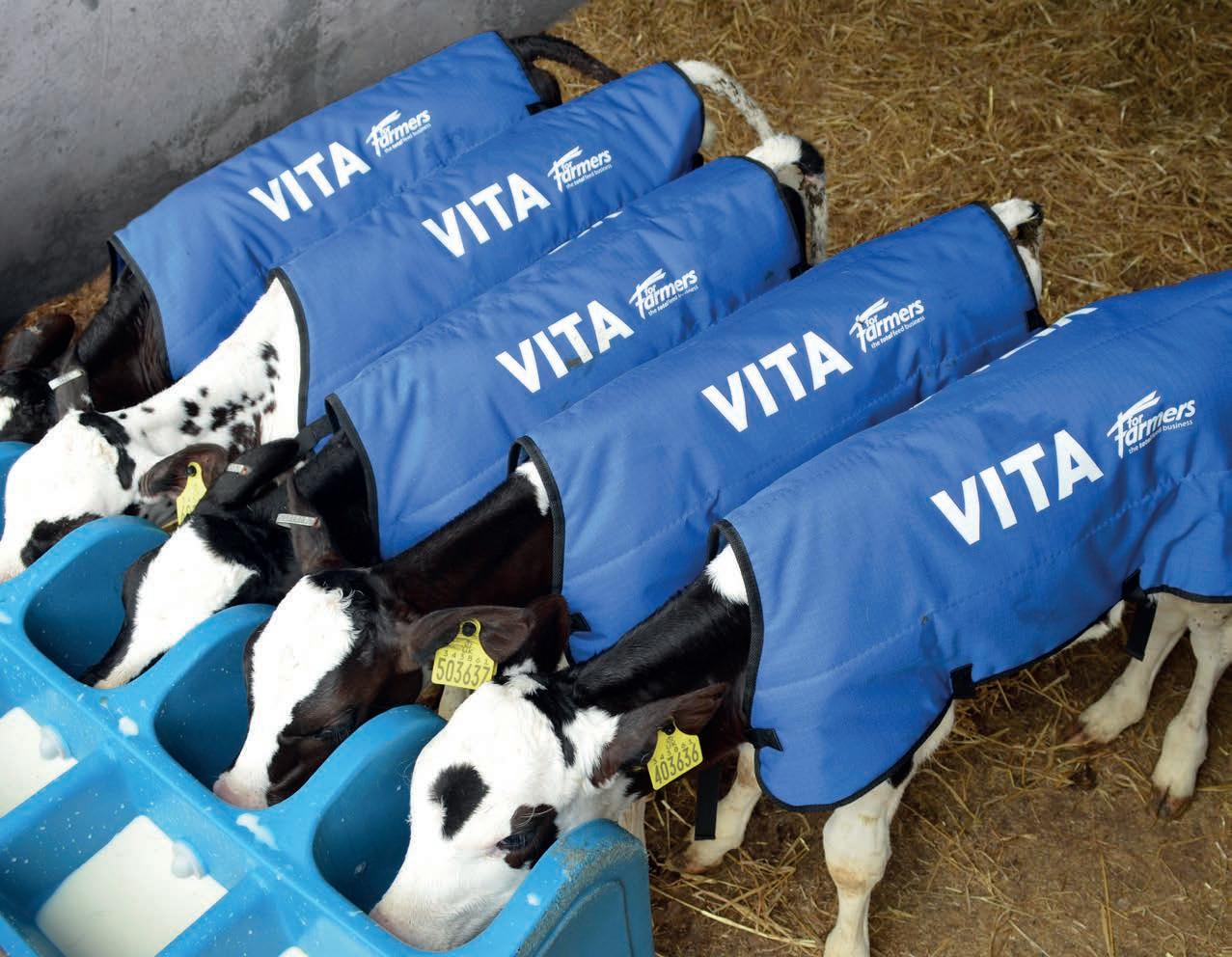
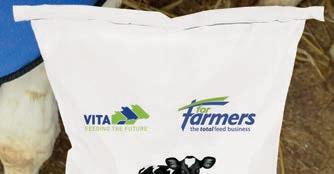
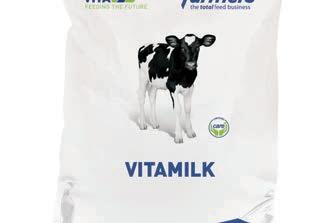

Get your calves off to the best start with VITAMILK 3 Accelerated Growth Rates 3 Increased DLWG 3 Added Health Packages 3 Superior Bloom and condition 3 Profitable Calf rearing For more information speak to your local ForFarmers Account Manager or visit >
DAIRYMatters
‘What has happened to the proven bull?’
Rosemary Collingborn farms a closed herd of 100 pedigree cows with her husband Joe in Wiltshire. She has served on the Milk Development Council, Veterinary Products Committee, the RSPCA Council and was Women’s Food and Farming Union dairy chair.
Over recent years, there has been a massive change in ca le breeding. Selection by genomics has taken over compared to the previous use of proven bulls. In genomics, semen is taken from bulls at about eight to 12 months. Once genomic testing is completed, semen is ready for sale.
Like most other dairy farmers, I have been mainly using genomic bulls, with mixed results. It was disappointing when the rst genomic bull I used, TW Goodwhone, dropped from a good plus on milk to a considerable minus, though otherwise he remained a good all-rounder.
When a bull which has been used to produce a number of genomic sons drops in milk yield, the gures decline on every bull stacked in the line. is change recently a ected the many sons of Renegade when his predicted gures for speed of milking declined.
I had thought that the use of genomics would have a bene cial e ect in creating be er proven bulls, as the best genomic bulls would come through the system as proven. Generally, this has not been the case. is got me wondering if this was because the genomic bulls have not proved to have the

promised bene ts when their daughters complete their rst lactations.
On investigation, I started realising that the lack of proven bulls in the UK was because the bulls themselves had been killed before they could be proven in the eld.
Apparently now, most farmers want sexed semen and sexed semen has to be taken from a live bull. Arti cial insemination (AI) companies nd it too expensive to keep the bulls alive for the years needed for them to become proven from their daughters’ lactations. is means that when a genomic bull produces good results, there isn’t any semen le . UK Sires told me that irritatingly this had happened with their genomic bull Nacash, who came in with a good proof, but with no semen le .
Proven bulls
Some of the big AI companies tell me that farmers are no longer looking for proven bulls. In the States, I am told that bulls and their semen are not kept on a er the rst ush of sales.
ere is considerable expense involved in proving a bull and storing sexed semen for future use. Genomics are far more pro table. Ge ing a new genomic proof is much cheaper for the companies involved.
Every year, most of the bulls on o er in the catalogues are fresh o erings. According to the printed gures, we should be seeing eye-wateringly massive improvements in milk and components. Yields have increased greatly, but I feel this is possibly more due to improved knowledge of how to treat Holstein cows and also improvements in feeding.
Our industry is being ruled by nance, rather than farmers. We are not speeding up natural selection, but moving away from it to selection by technology.
We don’t know what impact selecting for speci cs has on taking out other characteristics which are seen as less desirable. It may be that the characteristics taken out will prove to have been an important part of the mix, in disease control for example. Inbreeding is also worrying, now at 10% and rising.
14 SEPTEMBER 2023
Rosemary Collingborn


“ Some of the big AI companies tell me that farmers are no longer looking for proven bulls
e other problem is that the e ect of these genomic bulls has not been tested in practice, only on paper. A big gap could easily occur between the use of genomic semen and what is happening on the ground a er the selected semen has been used.
In the Netherlands, the stud K.I. Samen guards against this by keeping all its bulls until the daughters are in-milk. is seems a very healthy approach. It also focuses on cows, while genomics is all about bulls.
Farmers who have closed herds know that longevity runs in families. I have been breeding bulls for our own use and sale for many years now, choosing sixth to eighth lactation dams, classi ed Excellent, which have proved themselves to be consistently above average and with ancestry that has been tested for generations through the female line. I think this could be called the opposite of genomics.
When Holstein semen was rst used in the UK, it was evaluated against British Friesian semen with a base line favouring high milk production and li le else. Suddenly all the Holsteins were plus on milk
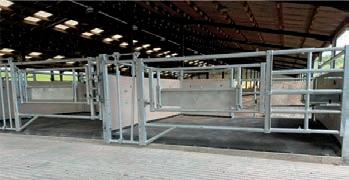



and the Friesians minus. What farmer doesn’t want more milk? Friesians fell by the wayside, semen companies stopped testing the bulls and lots of genetics were lost. Too late farmers found that these early Holsteins were plus on milk, but also weak on feet and legs and needing tip top management if they were to survive beyond their rst lactation.
Friesian genetics
ere was a great loss to Friesian genetics and it has been very hard to catch up. Fortunately, evaluation has now changed to take account of health, milk quality, temperament, fertility, etc. So it is now easier to nd a good all-round bull. But not a proven one. ere are a few out there, but genomics are very much in the majority, with proven bulls becoming exceedingly rare.
At the recent Holstein Celebration and AGM, every breeder I asked valued proven bulls. If we can see the sense in using some proven bulls, we need to create a demand. Farmers need to ask AI companies for proven bulls.
FARMING EQUIPMENT & TECHNOLOGY FUND 2023
Eligible items in our ranges:





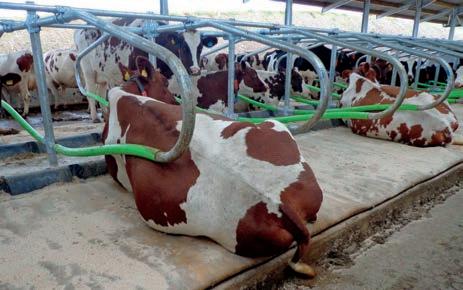
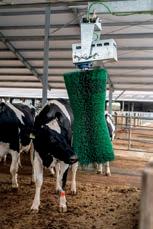








15 SEPTEMBER 2023 Official Distrib f View our cow comfort range: www.wilsonagri.co.uk Contact us at HQ: 028 7086 8430 Mattress Dairy Grip rubber AgriCow Pendulum Cow Brush Calf De-horning crate Calving Gates Cattle Crushes Slat Rubber
Matthew Evans 07922 422556 Charlie Sutcliffe 07703 679023 Midlands & Wales Scotland & Northern England
Livestock Equipment www agrikit co uk A COMPLETE RANGE OF COW COMFORT PRODUCTS Pasture Mat the premium cow mattress
Rosemary Collingborn says the industry is not speeding up natural selection, but moving away from it to selection by technology.
Ketosis is caused by negative energy balance in the cow and can lead to a wide range of issues, including poor fertility and a decline in milk production, says Will Gratwick.
He says: “Cows at greatest risk will be carrying too much fat around calving time, which leads to a sudden spike in energy requirements due to the onset of milk production.
“At the same time, feed intake decreases. In response, an excessive amount of fat is broken down and released into the bloodstream. is is converted by the liver into ketones, which can be a useful energy source, but are toxic at high levels.” e disease, which is also known as acetonaemia, or slow fever, only causes visible symptoms in about 20% of cases. is is known as clinical ketosis, with the remainder falling into the sub-clinical category. e main risk period is the rst fortnight post-calving.
Mr Gratwick says: “ e clinical signs of a severe case can be alarming. e a ected cow can become excitable and even aggressive. One classic sign is the frequent licking and chewing of objects. We will usually see only a small number of these cases of ‘nervous’ ketosis.”
Some cases may also have fa y liver, which can be part of the syndrome.
Mr Gratwick says: “This condition is part of the ketosis syndrome. It can be confirmed by blood testing and occurs when the liver becomes overwhelmed with the amount of fat being processed, reducing its ability to produce glucose. Fatty liver can quickly become a downward spiral and affected cows often fail to recover.
Over-fat
“Cows can become over-fat in late lactation, sometimes as a result of poor fertility, as extended lactation can lead to excess fat being laid down, once the energy used for milk production has fallen below the energy level in the diet. Ketosis itself reduces subsequent fertility, making it a challenge to break the cycle.”
Cows with sub-clinical ketosis


Most producers will have experienced cases of ketosis in their herds, so this symptoms of the metabolic disorder, as well as outlining measures for
Is ketosis a problem on your farm?
do not show any visible signs and the condition is con rmed via blood testing.
Mr Gratwick says: “Indicators include general poor performance and a high incidence of transition diseases, such as le displacement of the abomasum and metritis.
“Its prevalence will vary between farms and within individual farms over time. It can occur at any time of the year and it does not discriminate when it comes to feeding systems.
“High-yielding cows may be at greater risk, but it can also a ect lowinput herds if their energy demand
is not met around calving time.”
Maintaining a body condition score (BCS) of 2.5-3 and ensuring cows do not lose more than 0.5 BCS in early lactation will go a long way towards disease prevention, he says.
“It is inadvisable to try and alter body condition a er drying o , as by then it will be too late. Grouping milking cows and feeding according to lactation stage/production is a be er way of managing body condition, but that is not always easy in a smaller herd.”
Correct feeding and management in the transition period (three weeks
either side of calving) is also an important aspect of ketosis prevention.
Dietary energy must be su cient, but maximising dry ma er intake is equally critical, he says.
“In some cases, energy levels may be su cient in the diet, but intake is naturally reduced around calving time. erefore it is essential to promote appetite.
“ ere are various ways of maximising intake, including the provision of a fresh ration through frequent feeding and clearing up wastage.
“Individuals should have access to a minimum feed space of 750mm and neck rail height should be optimised for feeding comfort. Where possible, the feeding area should be slightly raised above the oor level.
“Su cient water intake is another essential for maximum feed ingestion and water must be clean and fresh, with each cow allocated a trough space of at least 100mm.”
Mr Gratwick says there are a number of main treatment options. He says: “Studies have shown that an oral drench of 300ml of
SEPTEMBER 2023 16 VET’S VIEW
Ketosis can occur at any time of the year and does not discriminate when it comes to feeding systems.
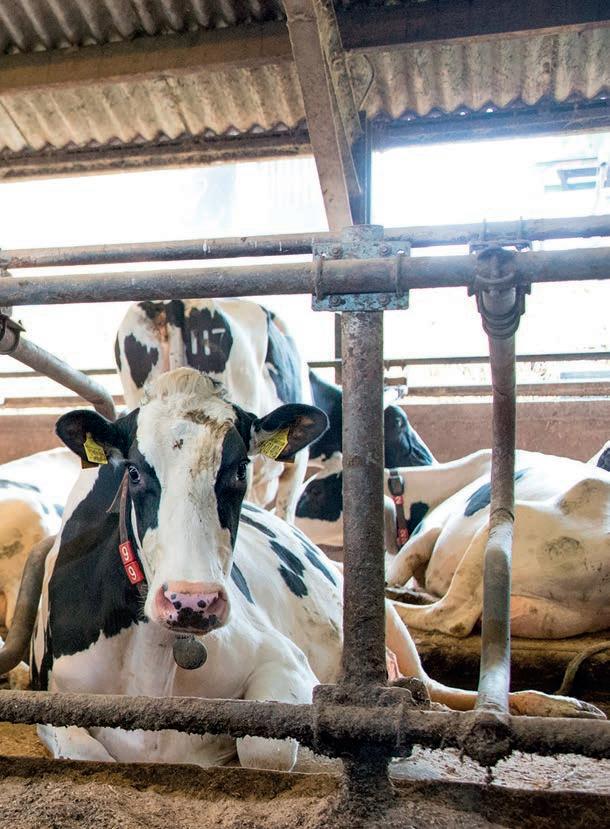
month, Will Gratwick, of LLM Vets, describes the prevention and treatment. Wendy Short reports.
propylene glycol for ve consecutive days will be e ective for sub-clinical disease. e scienti c evidence is not as robust when it comes to clinical cases, where additional treatments may also be required.
“A steroid injection can help boost blood glucose levels, while vitamin B12 can support energy metabolisation in the liver.
“As with many diseases, a uid drench containing electrolytes and water should be considered standard practice. Cows should continue to be milked as usual.”
Preventative
If ketosis cannot be avoided through management and nutritional strategies alone, the slow-release bolus Kexxtone can be given to high-risk cows three weeks pre-calving as a preventative treatment, he adds.
Mr Gratwick says: “ e bolus alters the bacterial population in the rumen to boost the level of propionic acid, which is converted to glucose in the liver.
“ e product is not licensed
for blanket use in the UK, so administration should be targeted according to veterinary protocol.”
e monitoring of cows for ketosis will vary from farm to farm, he says.
“Some producers do not routinely blood-test cows, while others will sample a dozen or so on a monthly basis, or test every cow on day three post-calving.
“Testing gives an instant result and it can be carried out by the vet or using the farm’s own handheld ketone meter. If transition nutrition is well managed and ketosis remains at a low level, there is probably no need for routine testing.
“I would suggest se ing an annual target of below 10% of cows positive on the test, with any gure above 20% worthy of investigation.
“If ketosis cases exceed the threshold number, producers should consult their vet and their nutritionist.
“ ere are many options for prevention and treatment and tackling the disease will require guidance speci c to an individual farm situation.”

SenseHub GO is a simple and cost-effective subscription model which future-proofs any dairy farm’s investment in herd monitoring and gives farmers full access to the latest generation of heat detection and health monitoring technologies at an affordable monthly price and with no upfront costs.

AGO subscription provides full access to all of the SenseHub hardware needed to monitor the rumination and fertility of individual animals or groups of cows, heifers and youngstock, including a choice of MSD Animal Health’s eartags and/or neck collars, as well as a SenseHub antenna and base station.
The single all-inclusive monthly fee is calculated according to the number of tags or collars being used and the application plan on which they are registered (Starter, Advanced or Premium) and covers all installation and maintenance costs.
GO customers can increase the number of tagged animals or upgrade
their application plan at any time and have access to priority-level service support, including a full programme of on-farm and online training to ensure they can get the most from their system.
All equipment covered via a GO subscription is protected by a warranty which lasts for the duration of the subscription, which means customers can enjoy the peace of mind of knowing their herd is being monitored by the very best technology with none of the financial risks or capital depreciation losses. For farmers who prefer to own their herd monitoring equipment, SenseHub can also be purchased on a traditional upfront basis via MSD Animal Health’s ‘UP’ purchase scheme.
Ready, set, GO: To find out how more about how to get SenseHub without any upfront costs, please call the SenseHub team on 01207 529 000. Alternatively, to send us an email, please contact us at allflexuk@msd.com
For more information, visit www.msd-animalhealth-hub.co.uk/farmers/livestock-monitoring
SEPTEMBER 2023 17
CONTENT
AN AFFORDABLE ROUTE TO HERD MONITORING SPONSORED
to diagnose, treat, cure or prevent any disease in animals. For the
treatment, cure or prevention of disease in animals, you should consult your veterinarian. The accuracy of the data collected and presented through this product is not intended to match that of medical devices or scientific measurement devices.
SenseHub is not intended
diagnosis,
A structured approach is helping dairy farming members with LLM Farm Vets in Whitchurch, part of the VetPartners network, to combat common causes of calf respiratory disease. Hannah Morgan reports.
Respiratory disease is o en one of the main problems seen in calf sheds, and Laura Chesters, of LLM Farm Vets in Whitchurch, says almost every farm has issues with pneumonia at some stage.
She says: “We do see sick calves, but most of what we do is working with farmers who want to help prevent pneumonia – once pneumonia is present, it becomes more challenging to deal with and therefore preventative work helps to keep farms on the front foot.”
Structured approach helping farmers improve youngstock health
Vaccination protocols are a common area the practice will work closely with farmers on, with the team routinely visiting farms to administer pneumonia vaccines – an intranasal vaccine and one which goes under the skin.

Ms Chesters says: “ e intranasal vaccine lasts up until weaning and the second continues the immunity past that point.
“We have a good uptake among farming clients for this service who see a bene t from either one or the other vaccine or the two combined, depending in their own situations on-farm.”
Small changes could help to make a big difference to overall animal health in the long-term LAURA CHESTERS

In the case of an outbreak on-farm, the practice is able to carry out nasal swabs, a service subsidised by Virbac, which can help to determine which pathogens are present and causing a calf respiratory disease spike.
It also o ers blood testing to test antibody levels.
“ e [blood testing] would be done a er the event of disease being identi ed, but it can be a way to determine what bugs an animal is being exposed to which could potentially be helpful to devise a treatment and future preventative plan going forwards.”
Another bene cial way to engage farmers with calf respiratory protocol and preventative plans in particular for the practice has been monthly or bi-monthly farmer meetings, Ms Chesters says.
Topics covered have included a calf pneumonia focus and advice on what to look for in milk powders.
“Around calf pneumonia,
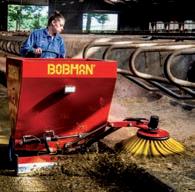
speakers focused on building design, vaccination, maintaining good hygiene when feeding calves and achieving high levels of passive transfer of antibodies by feeding colostrum appropriately.
Condition
“Nutrition in the pre-weaning period is also critical so feeding six to eight litres of a good quality milk powder or pasteurised whole milk alongside o ering a calf starter and straw from birth is recommended to ensure calves are in good condition should they encounter a disease challenge.
“We are also looking to run a meeting on calf starter concentrates in the near future.”
Routine fortnightly vet visits to focus on youngstock health are also carried out by the practice, with funding available via Farming Connect for these visits in Wales and the Animal Health and Welfare Review for farms in England.
“On these visits we will start

SEPTEMBER 2023 18 YOUNGSTOCK AGRICULTURAL & INDUSTRIAL STEEL FRAMED BUILDINGS Livestock Housing, Crop Storage, Industrial & Commercial, Tip Troughs Schurr Cow Brushes BEDDING MACHINES Telephone: 01524 792247 e-mail: sales@rebuildings.co.uk www.rebuildings.co.uk Scrape, Sweep and Spread in one pass. Bedding Material and Labour saving. Reduce cell count and increase production. Prevent disease and maintain good animal Health. Self-loading models available. Simple to drive and manoeuvre. 1 or 3 wheel drive. ELECTRIC ASK FOR DETAILS NOW AVAILABLE NEW
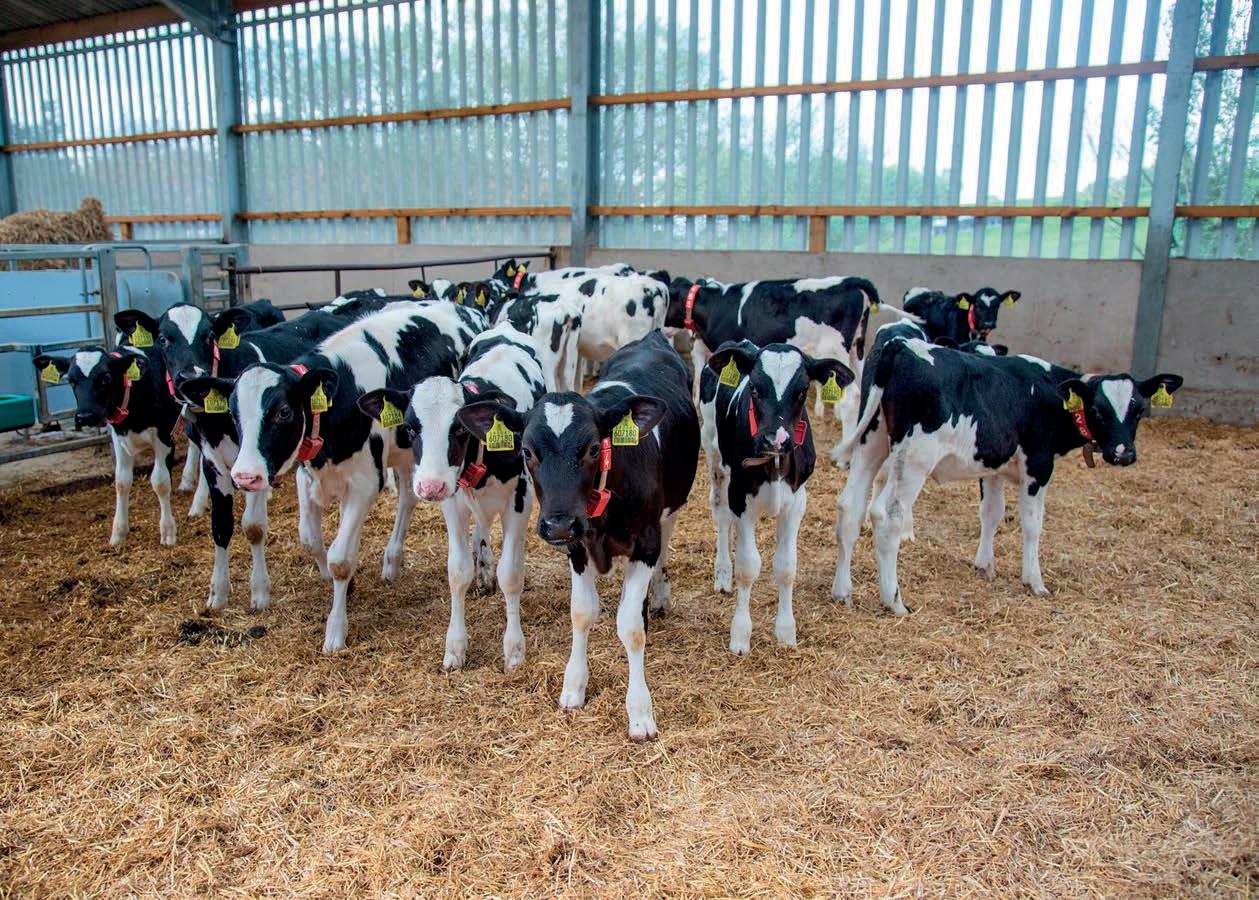
at the beginning of the calf rearing process and talk through on-farm protocols to pinpoint any bo lenecks which might be causing an issue.
“Common areas which could bene t from improvement include hygiene and making sure bedding and housing is kept dry and not dusty or damp. We sometimes see water troughs overspilling, which leads to increased dampness in the air which is the perfect conditions for pneumonia.
“We have also recommended some systems install ventilation tubes or fans o the back of visits with our calf housing adviser Rob Hall.
“Timely colostrum feeding is also hugely important, with there being a known link between how well calves absorb colostrum and pneumonia rates.
“We can monitor colostrum intakes and how well a calf has absorbed antibodies by taking bloods in the rst seven days of life on farms. We do carry
this out on a good number of our dairy client’s farms.
“Results can help to determine common trends and if there was an incidence of a lot of poor results, we can look further into colostrum protocols on that particular farm.
“Making sure calves are ge ing enough quality colostrum – at least four litres, although some farms may feed up to six, ideally in the rst six hours but de nitely the rst 24 hours of life is critical.
Absorption
“Ensuring colostrum is clean and fed using well maintained equipment and has not been sat for several hours before feeding is also important to get the best absorption.
“Although farmers are not always forthcoming in asking for help when it comes to youngstock rearing, small changes could help to make a big di erence to overall animal health in the long-term.”


















SEPTEMBER 2023 19
Once pneumonia is present, it becomes more challenging to deal with and therefore preventative work helps to keep farms on the front foot, says vet Laura Chesters.
Many dairy farmers have the problem of roads going through their farms spli ing grazing blocks o and forcing them to walk their cows across busy thoroughfares.
Dutch dairy farmer Simon Samsom has faced exactly that issue, but with the help of some clever thinking and ingenuity, the 115 cows are now being milked on both sides of the busy road.
Simon runs a 50-hectare (124acre) farm in Wilnis, in the Dutch province of Utrecht, together with his father Joost and mother Liesbeth in a co-ownership arrangement started in 2015.
Simon explains that a busy road running through the farm splits the land into equal-sized blocks.
He says: “Trying to get cows across this road onto the summer grazing twice a day for milking was proving to be a real challenge and quite dangerous so we developed a new system of mobile robots.”
e farm uses two Lely Astronaut A5 robotic milking units which are permanently xed in the cubicle house during the winter. However, during the summer months they are moved across the road using a unique mobile transportation system.
Joost says: “Basically, the two robotic milkers are a ached together on a frame and chassis. A set of wheels can be hydraul-


A mobile robot unit means cows can be easily milked while out grazing during the summer months. Chris McCullough reports.
Mobile robotics on family farm
ically lowered to li the frame up, which is then a ached to the tractor for transport.
Installation
“ e robots are parked on hard standing beside another trailer that contains the cooling tank and concentrates bin. Electric power and a water supply have been installed at the site, so all we

have to do is connect these and the internet to the robots, and the units are ready for work.”
e milk collection tanker simply reverses onto the hard standing and collects the milk from the tank on the trailer, when required.
Joost says: “Of course, initially we had some teething problems, but once these were overcome and the rst cow went through, everything went pre y smoothly.”
e cows, which compromise a mixture of Fleckvieh, Holstein Friesian and Brown Swiss genetics visit the robot an average
Farm facts
rHerd of 115 cows plus 70 followers, farmed organically
rRun by the Samson family for four generations
of three times a day during the winter, and 2.3 times during the summer grazing months.
e herd produces an average of 7,000 litres per cow per year at 4.05% bu erfat and 3.31% protein.
Grazing season
e grazing season on this farm starts at the beginning of April and usually runs through to mid- October. e cows receive concentrate via the robot at grazing, and silage with concentrates during the winter period.
Simon says: “During the winter, we cut silage blocks twice a
rMilk is sold to Eko-Holland at 62 euro cents per litre (53ppl)
rHornless, A2A2 protein bulls used to breed replacements
SEPTEMBER 2023 20 WORLD DAIRYING THE NETHERLANDS
Cows visit the mobile robot unit an average of 2.3 times a day during the grazing months.
Simon Samsom (left) and his father Joost.

Trying to get cows across this road onto the summer grazing twice a day for milking was proving to be a real challenge
SIMON SAMSOM
week and feed with a hydraulic feed gate system.
“In the grazing season, we use the ABC system so we only have to set up three fencing lines: two in the morning and one at the end of the a ernoon.”
As well as investment in automation, the family have also invested in a wind turbine to generate power and have plans to add solar panels to their system.
“In the future, our rst priority is diversifying, and if possible, we
would like to grow our farm a li le. However, our main goal at the moment is to put up a bigger building for the cows,” says Simon.
“By investing in a new building, we can ensure our cows have more space. is allows them to maintain more of the natural behaviour they exhibit in the grazing period.
Challenges
“Our biggest challenges include the summer drought, and the subsidence of our peat soil. We believe there are solutions to solve these problems without reducing the number of cows.
“My father is now developing a plastic-free irrigation system for the peat soil. We are also really interested in the cow toilet system from Hanskamp, which reduces nitrogen.
“ is innovation ensures the cow manure and urine do not end up in the same place, similar to when they are grazing in the elds.
“I am also really interested in the robot tractors and grass drying systems more o en seen in Austria.”




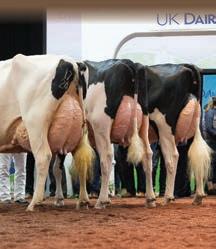








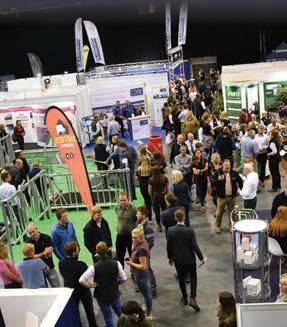







SEPTEMBER 2023 21 WORLD DAIRYING THE INTERNATIONAL CENTRE, TELFORD, SHROPSHIRE, TF3 4JH www.ukdairyday.co.uk Principal Sponsors Media Partners: • TRADE STANDS • CATTLE SHOW • INDUSTRY PANELS & SEMINARS • PRACTICAL DEMONSTRATIONS The UK’s leading free-to-attend dairy trade event WEDNESDAY 13TH SEPT FREE ENTRY, PARKING & WI-FI UKDD-89x254.indd 1 31/07/2023 15:02
Collecting the milk is very simple for the driver.
The two Lely Astronaut 5 robot milkers are transported across the road to the summer grazing.
Genomic number one leads £PLI ranking of high health young sires
Denovo 2776
Leeds is the new number one young sire in the genomic index rankings for Holstein bulls, published in August by AHDB. is Sandy-Valley Laker son increases his Pro table Lifetime Index (PLI) to £914, thanks to a massive Predicted Transmitting Ability for milk of 1,307kg, which he combines with high weights of fat and protein at 52.1kg and 40.6kg, respectively.
Leeds also scores well for Feed Advantage (215), which can be a ributed to his e ective transmission of feed conversion eciency and a favourable reduced Maintenance feed index (-10).
With the additional help of his good daughter Lifespan (LS) index, he earns impressive green credentials and an EnviroCow index of 4.7.
Second position sees the arrival of new entrant, Denovo 80044 Highview (PLI £902), a transmi er of high milk components at +0.3% fat and +0.15% protein.
is Winstar Elver son also transmits excellent mastitis resistance (Mast -3), long LS (+186 days) and outstanding daughter fertility (FI +14), a combination which earns him
the highest HealthyCow index in the top 20 (HC 313).
Former number one sire, Wilra SSI Faneca Ebersol, now ranks third (PLI £896) and has earned the best overall udder health credentials in the top 20. Ebersol combines -28 SCC with -3 Mastitis, as well as a high udder composite score of 1.5.
Moving up to fourth from seventh position is Peak Powerhouse, now with a PLI of £893. e highest protein improver in the top 20, he transmits an impressive 42.9kg.
DG Peace edges down into h place, with a great daughter Maintenance index (-21) and a high Feed Advantage (254), demonstrating all-round feed e ciency.
Sixth place
Sharing sixth place are stablemates, Peak AltaSeverus and Peak AltaKalon, with PLIs of £884. AltaSeverus has the best daughter Fertility Index in the top 20 at 15.4, while AltaKalon excels in protein percentage (+0.15%) and has a HealthyCow index of 255.
In eighth place, with a PLI of £878, is Winstar Maserati P. One of the strongest fat transmi ers among the leading sires (54.9kg and +0.33% fat), he is followed closely by his paternal
Top 10 Holstein bulls with genomic indexes ranked on £PLI

half-brother, Denovo 17835 Lennon-P (both by Mendel P) in ninth place (PLI £875).
Lennon transmits good LS (159) and is the highest udder conformation transmi er in the top 20 at 2.58.
New entrant Pine-Tree Peak AltaHaji rounds o the top 10, transmi ing a solid weight of fat (50.8kg) and low cell counts (SCC -22).
Marco Winters, head of animal genetics for AHDB, says: “ e new generation of young sires o ers so many of the traits required for commercial milk producers to edge down both costs of production and their environmental impact,
Continues over the page...
while cost-e ectively producing milk.
“High fat is a recurring theme, as are long daughter lifespans, good daughter fertility and feed e ciency, all of which are important contributors to economic milk production.
“Many of these traits contribute to both HealthyCow and EnviroCow, which we would recommend are considerations in every breeding strategy.
“Each of these indexes gives an at-a-glance gure of the bull’s likelihood of breeding healthy daughters with the least environmental impact – factors which are growing priorities of both milk buyers and dairy producers.”
SEPTEMBER 2023 22 BREEDING BULL PROOFS
The grandam of Denovo 2776 Leeds, the new leading young genomic sire, ranked on £PLI.
£PLI Bull name Milk Fat Ptn Fat Ptn SCC LS FI Feed TM Sire Supplier kg kg kg % % Adv GB/NI 1 914 Denovo 2776 Leeds 1,307 52.1 40.6 0 -0.03 -19 137 4.6 215 0.6 Laker GEN 2 902 Denovo 80044 Highview 425 43.5 27.3 0.3 0.15 -23 186 14 133 0.45 Elver GEN 3 896 Wilra SSI Faneca Ebersol 669 48 28.3 0.24 0.07 -28 113 9.1 199 0.72 Faneca WWS 4 893 Peak Powerhouse 962 51.7 42.9 0.14 0.12 -12 122 0.5 114 1.23 Wheelhouse UKD 5 890 DG Peace 924 45.9 37.7 0.1 0.08 -18 101 5.4 254 0.58 Captain CBL 6 884 Peak AltaSeverus 812 42.4 35.6 0.11 0.1 -23 156 15.4 152 -0.31 AltaPlinko ALT 6 884 Peak AltaKalon 594 40.6 33.1 0.19 0.15 -21 153 10.2 161 0.56 AltaKevlow ALT 8 878 Winstar Maserati P 633 54.9 27.8 0.33 0.08 -19 140 9.5 146 1.07 Mendel P GEN 9 875 Denovo 17835 Lennon-P 564 45.9 27.4 0.26 0.1 -17 159 10.8 183 1.34 Mendel P GEN 10 872 Pine-Tree Peak AltaHaji 824 50.8 34.4 0.2 0.08 -22 107 5 216 0.39 Greycup ALT



Improving herd performance and fertility can often feel like an uphill battle –BUT YOU DON’T HAVE TO TACKLE IT ALONE.
Our industry-leading sexed semen, extensive range of trait-topping genetics, innovative herd management solutions, and the unparalleled knowledge of our Genetic Consultants are your perfect partners to accomplishing the peaks you never thought you would reach.
WE HAVE THE MEANS, WHATEVER THE CHALLENGE…’
FREEPHONE: 0800 783 7258 | WWW.COGENTUK.COM
New number one proven sire transmits udder health and protein
Anew number one daughter-proven sire makes his debut in the August genetic evaluations.
Graduating from the genomic rankings, Wilra Knowhow, a son of De-Su 14222 Kenobi, earns a Pro table Lifetime Index (£PLI) of £852, thanks to the contribution of his early milking daughters.
Outstanding features of Knowhow’s Predicted Transmi ing Ability (PTA) include protein of 37.5kg, the highest of the top 10 proven sires and good udder health (-23 SCC and -2 Mastitis).
Former number one, Genosource Captain, now ranks second (PLI £807) and continues to display high fat (45.3kg), with excellent Maintenance (-21) and Feed Advantage (235). Captain also transmits very good Calf Survival at 3.1.
Another new graduate is the third-ranking Bomaz Ke le,

also a son of Kenobi. Ke le adds a handful of UK daughters to those milking around the world and earns a high weight of fat at 45.4kg and a PLI of £775.
Milk quality
Exceptional milk quality transmi er, Progenesis Wimbledon, rises from seventh to fourth position, now with a PLI of
Top 10 daughter-proven Holstein bulls ranked on
£756. He combines 0.39% fat with 0.25% protein, as well as an excellent daughter Fertility Index of 13.6.
Climbing into the top 10 for the rst time, Denovo 15567 Kimmel is the third son of Kenobi to feature, now ranking h. With a PTA for milk of 963kg, he transmits the highest weight of milk in the top 10.
Continues over the page...
Bomaz Complex also sees improvements, to now rank in sixth position, with a PLI of £726 and high fat percentage (+0.36).
And with more than 1,000 UK daughters now milking, Denovo 7899 Archer holds rm with a PLI of £724 and has the best Lameness Advantage in the top 10 (+4).
e solid production gures of Peak AltaPlinko earn him his debut in eighth position, with a PLI of £721.
Moving up to ninth position is Hul-Stein Party Time with a PLI of £715 and an impressive 45.7kg fat, thanks in part to his 474 daughters milking in the UK.
Health improver
Rounding o the top 10 is Pine-Tree CW Legacy, the outstanding health improver of the group (HealthyCow 331), which features the best udder health (-30 SCC, -3 Mastitis), highest daughter fertility (FI +15.1) and longest lifespans (LS +189 days).
SEPTEMBER 2023 24 BREEDING BULL PROOFS
Wilra Knowhow, the new leading daughter-proven bull, ranked on £PLI (also equal first ranked on £ACI).
£PLI Bull name Milk Fat Ptn Fat Ptn SCC LS FI Feed TM Sire Supplier kg kg kg % % Adv GB/NI 1 852 Wilra Knowhow 835 40.9 37.5 0.08 0.11 -23 76 5.3 219 0.07 Kenobi GEN 2 807 Genosource Captain 893 45.3 30.5 0.1 0.01 -7 113 5 235 1.65 Charl CBL 3 775 Bomaz Kettle 722 45.4 33.8 0.18 0.11 -13 58 6.1 140 -0.35 Kenobi GEN 4 756 Prognesis Wimbledon 94 36.2 24.2 0.39 0.25 -25 119 13.6 -19 0.29 AltaRobson SMX 5 733 Denovo 15567 Kimmel 963 35.3 35.2 -0.04 0.04 -18 98 9.8 79 0.17 Kenobi GEN 6 726 Bomaz Complex 325 43.7 20.3 0.36 0.11 -19 98 3.6 164 0.58 Crimson GEN 7 724 Denovo 7899 Archer 815 44.7 36.9 0.13 0.11 -9 37 -1.5 94 1.6 Achiever GEN 8 721 Peak AltaPlinko 889 43.8 36.7 0.09 0.08 -11 61 5.1 128 -0.01 Marius ALT/AIS 9 715 Hul-Stein Party Time 631 45.7 28.7 0.23 0.09 -14 82 1.4 138 1.17 Imax GEN 10 708 Pine-Tree CW Legacy 412 26.6 16.3 0.12 0.03 -30 189 15.1 153 0.08 Frazzled WWS
£PLI
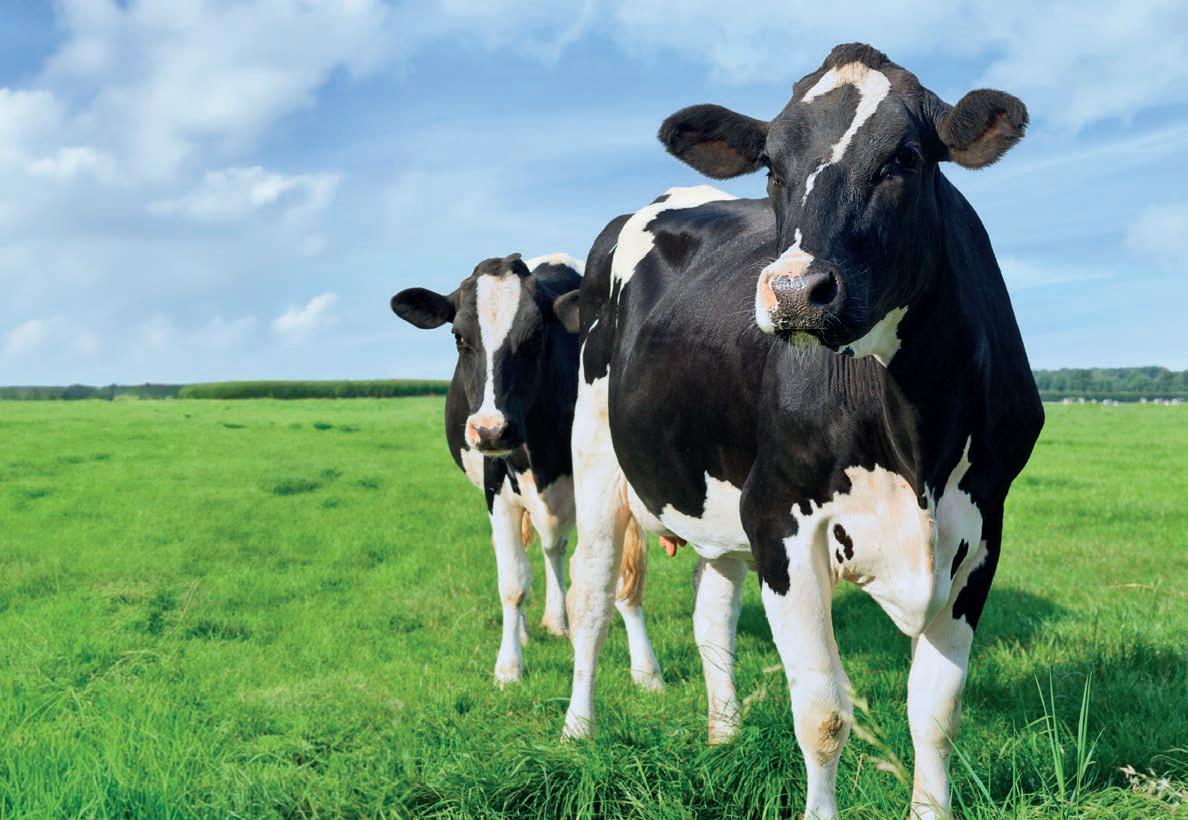
• Pre-milking and post-milking teat products
• Circulatory cleaners and disinfectants
• Create your own customised plan
• Visualise, sort and compare
• Results delivered in days
© Neogen Corporation, 2023. Neogen and Igenity are registered trademarks of Neogen Corporation, Lansing, MI 48912 U.S.
Ludlow |
Pioneers for the Future of the Dairy Industry Learn About Neogen’s Cutting-Edge Advancements in Genomics and Dairy Hygiene Scan to Learn More Come and Visit our Team of Experts at UK Dairy Day 2023
Stand No. L10 Animal Safety:
• Solutions for healthy hooves Igenity ® :
Stable frontrunners among the non-Holstein breeds
The dairy breeds other than Holstein see strong stability across the rankings in the genetic evaluations.
VR Venom retains his lead among the Ayrshires, improving on his already impressive Pro table Lifetime Index (£PLI).
Having added a few UK milking daughters to his proof, he now earns a PLI of £496 and rates highly for HealthyCow (195), in part due to
his outstanding daughter Fertility Index (+15.6).
Also unchanged in rank is second-placed VR Vilano (PLI £437).
is bull’s strong daughter Lifespan (LS) of 88 days longer than breed average contributes to the highest EnviroCow index of all available proven sires of the breed (2.8).
ere is li le change at the top of the Jersey rankings, which see JX River Valley Chief holding on to the top spot, with a
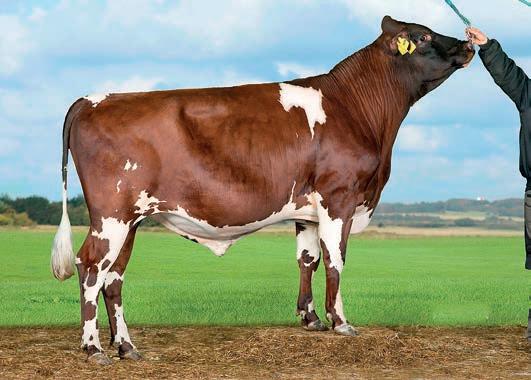
PLI of £446. He con rms his standing as an extreme production bull, but combines this with a lower-than-average daughter Fertility Index.
Daughter fertility
In contrast, VJ Hoeholt Jern James, who moves into second position, shows good daughter fertility (FI 9.1), but is no match for the production of the leading sire.
Within the British Friesian breed, Manorpark Google remains in rst place, his PLI of £349 re ecting his transmission of high production, including 475kg milk and an impressive 40.1kg fat and protein combined.
As of yet, no information is available on his daughter Fertility Index, so a breed average has been used for fertility within his £PLI calculation.
Inch Persistent remains in second place with a PLI of £311. His high HealthyCow index at 225 is a standout feature, which he combines with a Type Merit of 2.49.
Top five bulls for non-Holstein breeds ranked on £PLI
High fat and protein sire shares top spot with newcomer for £ACI
JDairy producers cranking up for autumn calving and turning their attention to genetic selection will find bulls to suit their needs in the Autumn Calving Index (£ACI) ranking.
Two of these bulls share pole position – the high fat and protein sire, Progenesis Wimbledon, and newcomer, Wilra Knowhow.
Wimbledon moves up one place to take this position, now with an ACI of £703. This reflects his outstanding
Predicted Transmitting Abilities for both fat and protein percentages, which he combines with a high daughter Fertility Index and good Lameness Advantage.
Production
Equal frontrunner, Wilra KnowHow, who also leads the Holstein Profitable Lifetime Index ranking, is noted for his high production transmission.
Another new entrant, in third position, comes in the
shape of Koepon Raptor (ACI £676). Raptor is another high milk components bull, with long daughter lifespans who also transmits shorterthan-average gestation length to the calves he sires.
Among the bulls ranked on Spring Calving Index (£SCI), formulated for its suitability for grazing-based herds calving in a tight spring block, Progenesis Wimbledon holds the lead, just as he does for £ACI.
His £SCI of £604 reflects his transmission of good milk quality and high daughter fertility, so important for this group.
Second place
In second place is new entrant, VJ Hoholt Gates Google, a Jersey bull which also transmits high fat and protein percentages, and very favourable maintenance feed ratings. His SCI is £586.
SEPTEMBER 2023 26 BREEDING BULL PROOFS
VR Venom, the number one Ayrshire sire, ranked on £PLI.
JERSEY 1 JX River Valley Chief £446 2 VJ Hoeholt Jern James DJHB £442 3 VJ Groenbjerg Lobo Lobster £435 4 River Valley Cece Chrome £425 5 VJ Hoholt Gates Google £413 FRIESIAN 1 Manorpark Google £349 2 Inch Persistent £311 3 Bloemplaat Hoeve Ewoud £268 4 Inch Hearty £259 5 Catlane Cromwell £256 AYRSHIRE 1 VR Venom £496 2 VR Vilano £437 3 VR Solvarp Hjuve Hosea £418 4 Troutbeck Progess £386 5 VR Viking Viljar Vario £380
RUMISTART GREEN
An energetic booster to support the milking ruminants

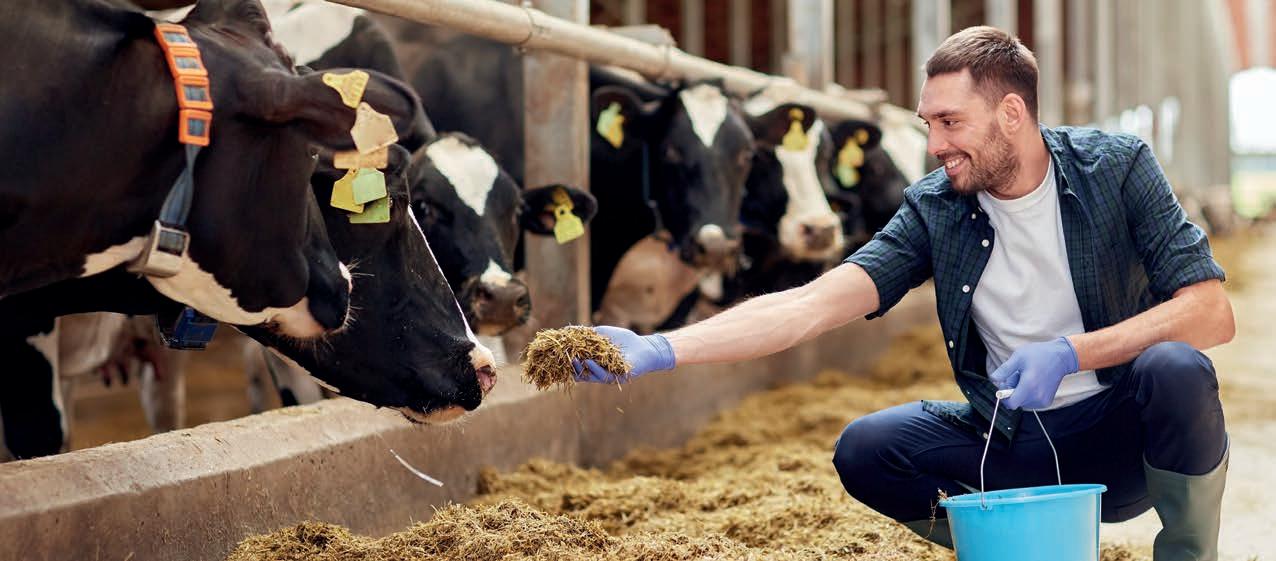



• Improves Feed E ciency
• Limits Ketone Production
• Reduce Risk of Energy Deficiency
• Lower Carbon Footprint
Propylene Glycol (vegetal origin) and Sorbitol
Energy intake
Volatile Fatty Acids and Sodium Propionate
Energy intake
Yeast extracts and Cobalt
Ruminal activity stimulation

To find out more open your camera and hover over the QR code or use your browser www.ruminantad.com
T: 01576 205 480 E: enquiries.uk@kersia-group.com
The use of an ear tag sensor system for cow data collection is helping with the management of Sandy Mitchell’s 1,400-cow herd. Wendy Short reports.
Sensor system allows for more accurate cow management
By using temperature and activity data collected by a cow ear sensor, Sandy Mitchell has been able to make improvements to cow management in terms of health, breeding and nutrition.
He has also been able to make earlier and more accurate interventions compared to when making decisions following a visual assessment or detecting milk production changes.
Mr Mitchell, who farms with his father, Jimmy, and herd manager, Bryn Moore, at Kennetsideheads Farm, near Kelso, says the average pregnancy rate has risen from 27-28% to 29.7% since the CowManager system was fully installed in November 2022 following a 50-cow trial.
“Several factors are involved in improving fertility, but CowManager alerts us to cows that have failed to hold a er the initial 30-day pregnancy diagnosis, for example,” says Mr Mitchell.
“It has replaced a routine where the vet made checks a er 60 days. It also helps with accuracy of service for sexed and conventional semen, which have slightly di erent
target service windows. It gives us the opportunity to ne-tune cow management to take some of our performance results from good to even be er.”
He describes a couple of incidents in which earlier intervention has been bene cial to cow health and performance.
“ ere was an alert for a downer cow with a rumen problem. She was treated immediately with uids and anti-in ammatory drugs, plus a yeast bolus to encourage rumination. No antibiotics were required due to the rapid response and she was back in the parlour very quickly. Without the alerts, her condition may not have been spo ed until the next milking.
Mastitis
“It has also helped to tackle e.coli mastitis, and again, uids, anti-in ammatory drugs and a yeast bolus administered at an early stage can make a big difference to the outcome. We are no longer seeing the extreme destructive nature of e.coli bugs. e cows can be back to full production within a short period of time, and the vet and medication bills have been reduced as a result.”
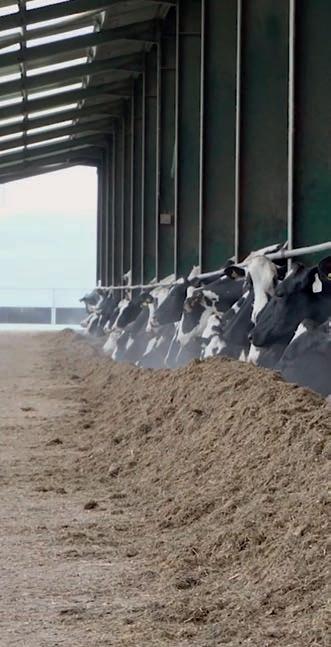
Meanwhile, the data showing rumination trends can be used to ag up potential calving difculties.
“Rumination drops o naturally around calving time, but the system will draw a ention to any abnormalities. One cow carrying twins looked healthy on visual appearance, but her chart showed a problem, and in fact the calves’ legs had become tangled. is prompted a swi and successful intervention, but if le untreated it could have become much more serious.”
e system was introduced because the previously used pedometer system had become due for replacement and the

As well as highlighting potential disease risk, sensors can also indicate trends and behaviourial changes in response to a feeding regime adjustment.
herd manager system had proven bene cial on a previous farm. It took a couple of months to adjust to using the system, which is utilised across the herd.
Response
Mr Mitchell says: “In the early days, it can be easy to react too quickly to the alerts, but over time we have learned to manage our responses.”
Dr John Cook of CowManager distributor, World Wide Sires, explains that the sensors measure skin temperature at the back of the ear and monitor cow behaviour/activity. e data is sent wirelessly and evaluated against individual cow and herd values in response to pa ern changes. e system can

It gives us the opportunity to fine-tune cow management
SANDY MITCHELL
SEPTEMBER 2023 28 HERD IMPROVEMENTS

be interfaced with an existing herd management programme to avoid duplication of data entry, with access given to vets if required.
He says: “A combination of pre-calving cow behaviours, including rumination and eating times, will highlight cows
With autumn approaching, it is time to gauge how forage crops are faring and how best to respond to identified shortfalls.
Changeable conditions across much of the UK means farmers are understandably nervous about forage stocks for the coming winter.
The challenging weather has limited plans for reseeding, according to John Spence, forage crops product manager with Limagrain UK.
He says: “Many spring re seeds did not happen because of the sudden change from wet and cold to dry and hot. Grass growth plummeted in June as the drought started to bite and, for some, this has left forage shortfalls for the second successive year.
“Most farmers will have yield data from each field but having silage analysed now will provide figures for quality, particularly metabolisable energy [ME] and digestibility.
“Where forage quality is declining, a reseed is the answer as newer grasses have significantly better feed value.
“Investing in mixtures with high quality Italian ryegrasses and hybrids to boost yields and quality is a great short-term fix.
Sponsored by
at potentially increased disease risk post-calving, for example if they fall below a threshold set using individual herd data.
“It can also indicate trends and behaviourial changes in response to a feeding regime adjustment.
“Research has already shown
Pre-calving cow behaviours [...] will highlight cows at potentially increased disease risk post-calving
DR JOHN COOK
that cows giving the best milk quality tend to ruminate for a greater length of time when they are lying down, rather than standing. e data will show this activity, which might also indicate the need for a change of cubicle design or other type of housing issue.”
Ongoing research may look at the potential for linking the
SPONSORED CONTENT

Forage for thought
“New Italian ryegrass varieties continue to increase in yield and quality as demonstrated in recommended list trials data. They yield almost as well as Westerwolds in their first year and can be left for another year if needed.
“Improved quality of Italian varieties means ME values can be up to 0.4MJ/kg more than Westerwolds over the year.”
It has been a mixed season for maize growing, says Peter Smith of Volac, with some stands affected by drought.

He says: “Varied performance of crops highlights the importance of good ground preparation to enable plants to develop a good root structure, which helps during periods of drought.
“When harvesting maize, avoid cutting too low as the base of the stem is of low nutritional value and may be contaminated with soil and undesirable microbes, which can cause losses at fermentation.
“Harvesting the crop when ready, even if it is still green, will maximise digestibility.



generated data with genomics.
“A cow’s genetic pro le could be aligned with her behaviour pa erns, and this may uncover an association between genetic pro le and a speci c behavioural characteristic. is could lead to the discovery of areas of the genome which are in uencing behaviour, and whether the data will have a positive or negative e ect on general performance,” says Dr Cook.

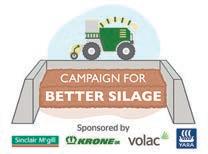
“It does not need to be dying back to be ripe. Chop the maize to about 15-20mm to aid compaction and fill the clamp at a 20-degree angle.
“Paying attention to detail during the harvest phase will pay dividends.
“Losses of 8% of the crop harvested in a good fermentation can be expected and this figure may double due to aerobic losses when the clamp is open.
“Using a double action additive, such as Ecocool, is proven to reduce both fermentation and aerobic losses, leaving more maize to feed to the cows.”

SEPTEMBER 2023 29
HERD IMPROVEMENTS
Find out more about Campaign for Better Silage at farmersguardian.com/ bettersilage, or scan the QR code
MAIZE
The licensed use of fungicide, insecticide and bird repellent dressings has come under threat due to a regulatory change following Brexit. Wendy Short reports.
The industry has been campaigning for the continued use of three maize seed dressings which can help to reduce losses from fungal infections, as well as insect and bird damage.
ese are the Redigo M, Korit 420 FS and Force 20 CS.
Applications have been made to the Chemicals Regulation Division of the Health and Safety Executive for emergency authorisation to allow their continued use.
Andrew Cook, of seed breeder KWS, says: “Post-Brexit regulations stipulate that all UK pesticides must be approved by the GB Pesticides Approval Register. However, the licences for the three treatments are due to run out on January 1, 2024, with no use-up date permi ed.
Extension
“ e emergency authorisation would give existing products an extension for use and/or allow more time for re-registrations to be completed.
“We have been involved in the industry lobbying action and we are con dent that our discussions with Farming Minister Mark Spencer will resolve the issue.
“If there are no permi ed re-registrations or new product


If there are no permitted re-registrations or new product registrations, producers are facing the prospect of sowing untreated seed for next year.
Lobbying underway to protect seed dressing use
registrations, producers are facing the prospect of sowing untreated seed for next year.” e sowing of untreated seed
Seasonal review of maize
JEarly-season droughts led to the delayed drilling of most maize seed, but the favourable weather following means most crops have caught up, says Mr Cook.
He says: “The correct seedbed temperature is essential for maize sowing and most seed was drilled into warm soils. They romped away in June and met the industry’s standard recommendation of ‘knee high by the fourth of July’.
“The only issue for a small number of farms was the lack of rain post-drilling, which has led
to split emergence in some cases. A percentage of seeds in the rows found moisture while others did not, leading to uneven crop patterns. This could reduce yields and starch levels at harvest in some cases and make it difficult to decide on optimum cutting dates.
Emergence
“Spilt emergence issues were compounded where seed was sowed at the standard depth. I would always advise a deep seed placement of about 75-80mm for late plantings.
could put maize plants at greater risk of a ack from soil-borne pathogens and bird damage, he says.
“ e options for management
“This will ensure seed has access to adequate moisture and encourage the anchorage of buttress roots, which in turn will limit the risk of lodging in high winds.”
A prolonged spell of wet summer weather elevates the risk of eyespot and the general advice is to use a fungicide programme which includes triazoles and/or strobilurins, if 30% of plants are affected and where crop height permits, he advises.
If the disease is a persistent problem, choose a variety less
techniques to combat the loss of seed treatments include sowing seed deeper for protection from birds. Nevertheless, temperatures tend to be lower at greater depth and this may have a negative e ect on plant emergence rates.
“Later sowing can also help to guard against bird predation and could increase the popularity of ultra-early varieties. ey have a shorter growing season of about 130 days, compared with 160 days for mainstream varieties, o ering a degree of ‘catch-up’ which can keep harvest dates on track.
“At KWS, we have ongoing trials for a new bird deterrent seed treatment, with the aim of bringing it to market as soon as possible.”
susceptible for the following year and make sure stubble is finely chopped and incorporated into the soil.
Yield threat
The other yield threat at this time of year is damage by the European corn borer, although the insect is thought to be confined largely to Dorset, Devon and parts of Kent.
First recorded in UK maize crops in 2010, there is no chemical control licensed for use against the insect, says Mr Cook.
SEPTEMBER 2023 30
Free next working day UK mainland & Ireland delivery ORDER BY 3PM when you spend £100 online excluding VAT
Make your life easier with our Electric Farmer Crush
Do ring us if you’d like more information!
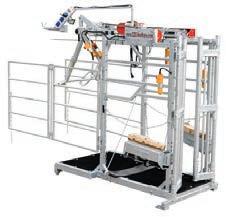
The UK's leading cattle foot care company TRIMMING • TRAINING • SUPPLIES

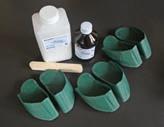
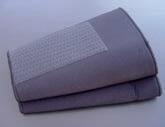

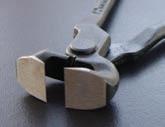




Prefer to speak to a human? Give us a call on 01963 824448

From farmer cattle crushes to wooden blocks, we have everything you need to keep your cows' feet healthy!

"Thank you to Steve and his team for an excellent and very quick service and very competitive prices every time, thanks!” JOHNNY MILLER, LANCASHIRE LAMENESS WORKSHOPS October 22 £125 per person Steve Paul Limited
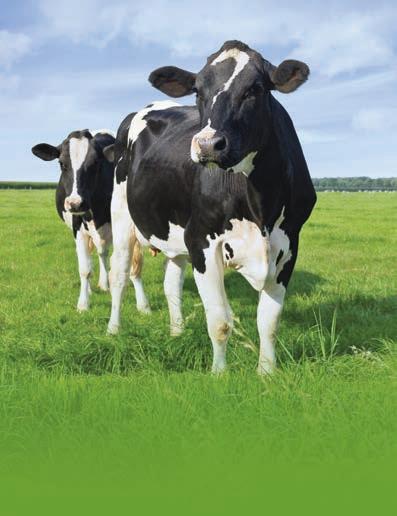


































































































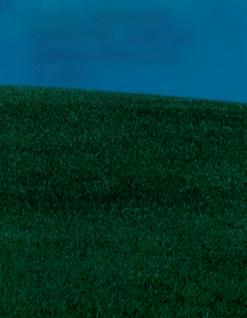


31
Cowsfeet advert Farmers Guardian 200x130mm March 2020.indd 1 14/02/2020 09:40 SEPTEMBER 2023





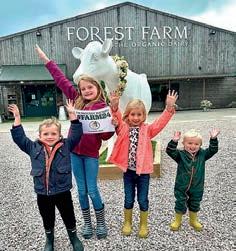
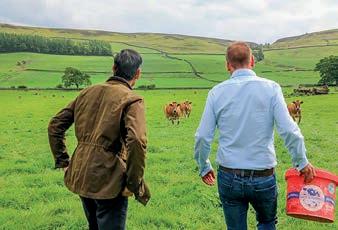



















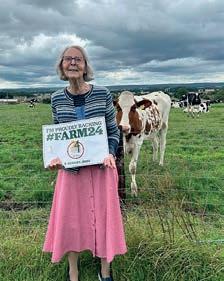









Agriculture’s much-loved campaign, 24 Hours in Farming, returned with epic momentum and involvement and culminated in a colossal show of support for our industry.
Sensational on socials: #FARM24 smashes records
Farmers from across the UK united to offer the general public a unique insight into what 24 hours in farming looks like.
The #FARM24 campaign kicked off in spectacular fashion at 5am on August 3, as thousands of farmers took to their digital channels to highlight their role as the nation’s trusted food producers and guardians of our countryside.
Instagram, Facebook, Twitter and TikTok were alight within
seconds of the annual event beginning and within two hours, #FARM24 was trending on Twitter, where it remained for most of the day, overtaking political and news activities.
The campaign was further boosted thanks to shout-outs during prime-
time broadcasting on BBC Radio 1 and Radio 2 from renowned DJs Greg James and Sara Cox.
A record number of leading public figures threw their support behind the epic event, including Prime Minister Rishi Sunak, Jamie Oliver, JB Gill, Kaleb Cooper and Kelvin Fletcher, along with the Royal Countryside Fund’s ambassadors. Farming Minister Mark Spencer, Secretary of State Therese Coffey and Defra showed their support throughout the day, highlighting various farming initiatives, as well as other politicians and high-profile
agricultural figures echoing the sentiment.
Olivia Midgley, editor of Dairy Farmer’s sister title Farmers Guardian, said: “This year’s #FARM24 was an explosion of positivity and a chance to hear from a whole host of farmers about what they do. Food and farming are on the national agenda like never before and there is a genuine inquisitiveness among the public to know more about how their food is produced and the people who make it possible.”
MORE INFORMATION
farmersguardian.com/farm24



Trending on Twitter Competitions Videos, and live interviews

Pledges of support

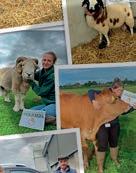



Visit farmersguardian.com/farm24 Search #FARM24 on social media SEPTEMBER 2023 32



FG joins forces with 24 ambassadors
THIS year, #FARM24 partnered up with 24 ambassadors who were reflective of the diversity and vibrancy within the industry.
From new entrants who have discovered their love of farming and those who are future-proofing their family businesses, to others coping with adversity and celebrities who have opted for a change of career, hundreds of stories were shared around the popular social media channels, and the general public could not get enough.
JB Gill, Kelvin Fletcher, Adam Henson and Nigel Owens led the line-up of celebrity farmers, while YouTube sensation Tom Pemberton, wheelchair farmer Mike Nixon, barrister Eleanor Durdy, veteran supporter Jeremy Gibbs and international sheepdog trainers Emma Gray and Ewan Irvine were just some of the highprofile influencers flying the flag for British agriculture.
The team also a hosted a series of live streams with our #FARM24 ambassadors, going live from their dairy, sheep and arable farms, and giving viewers an insight into their farming lives.





August 3-4, 2023
THREE special videos brought the farming story full circle, focusing on families who have a lengthy history behind them and will continue flying the farming flag, to new entrants who have forged careers in the industry.








Pasture Bedtime Stories shared
THE team visited Sacred Heart RC Primary School in Westhoughton, Greater Manchester, and spoke with children about their beliefs and attitudes towards British farming. The unique videos have been viewed thousands of times.
Search #FARM24 on social media Visit farmersguardian.com/farm24 SEPTEMBER 2023 33
Looking after their customers as well as their cows is a daily challenge for father and son Geoff and Darren Bowles. Tom Woolman reports.
Family business supplying prestigious customers
Nestled on the edge of the village of Beckington, Somerset, Ivy House Farm is home to a herd of 110 Jerseys, farmed by father and son team Geo and Darren Bowles. e milk is processed on-site and sold direct to some of the most prestigious retailers and food outlets in the country.
Just 25 years ago, however, the farming system was somewhat di erent – the farm was fairly intensive, with fertiliser applied four times a year, and the Italian ryegrass leys supported a predominantly Friesian herd.
Geo says that despite their best e orts, it was di cult to make money.
He says: “We realised you needed
to get big, get niche or get out. And we decided to go niche.”
A series of dramatic changes followed – the herd became 100% Jersey, the farm converted to organic and some second-hand processing equipment was purchased.
Geo says: “We started to process and sell milk and cream from the farm. e bank manager nearly had a t.”
Conversion
e farm fully converted to organic in 2003, with Geo and Darren re ecting that they were probably heading that way with their management anyway.
A major advantage of converting was it helped lock in their premium credentials with some of the customers they were approaching.
And aiming to produce a complete product range has also been another conscious strategy to help them retain their customers.
Geo says: “Because we tend to tick all the boxes there are no other suppliers who need to get involved.”
Farm shops were thin on the ground at the time, but an employee from London gave the Bowles family an idea. She suggested they start to sell some of their products in the capital, as quality farm-sourced food was hard to come by.
A er making a few phone calls, they started supplying Neal’s Yard Dairy with clo ed cream.
Geo says he initially had no intention of driving to London, but a er some encouragement from his wife Kim, he started driving to make deliveries between milkings.


The business has 110 Jerseys, producing an average of 6,000 litres a year at 4.1% protein and 5.5% butterfat.
We realised you needed to get big, get niche or get out. And we decided to go niche
GEOFF BOWLES
Driving past other names such as Fortnum and Mason and Harrods, Geo went inside to see if they also wanted to buy the milk and cream.
He says: “Organic was in its infancy then, so we were on a roll.”
Now, the company has two 7.5tonne refrigerated trucks and a van which are regularly full for deliveries.
Altogether, they supply about 150 product lines in milk, cream and bu er in a wide range of packaging options.
Darren looks a er the cows while Geo focuses on the processing.
Dealing with retailers and foodservice companies has had its challenges in recent times with the pressures of in ation, says Geo .
He says: “Our biggest problem is justifying our costs. We had quite a ba le with the people
Milk processing equipment
r10 bulk tanks
rThree milk pasteurisers
rThree cream pasteurisers
rTwo butter churns
rTwo cream separators
rTwo 7.5-tonne refrigerated lorries and a van
SEPTEMBER 2023 34 FAMILY FARMING
PICTURES : Nigel Goldsmith


Farm facts
rThe farm is 60 hectares (150 acres), 48 hectares (120 acres) of which are owned
rThe business has 110 Jerseys, producing an average of 6,000 litres a year at 4.1% protein and 5.5% butterfat
rSexed semen is used, with
we supply trying to get them to put their prices up.
“When our cake rep put the price up from £400 to £700 we did not have much choice and labour went up by 10% almost overnight.”
However, Geo and Darren say they have not fallen out with anyone over pricing. And while the bespoke service Ivy House provides has a cost, it is also one of the reasons many of the customers are so loyal.
Loyalty
Geo says: “Most of the customers have been with us for 20 years. We do not lose customers very o en, which I think is a bit of a feather in our cap.”
Balancing the size of the business and their family values is also important to the Bowles family.
Darren says: “You have to judge it right. We know a hell of a lot of dairies which have chucked thousands of pounds into an ‘all singing, all dancing’ operation, but then they are commi ed to supplying a lot more volume all of the time.
the remainder of cows going to Aberdeen-Angus or British Blue
rThe farm processes all its milk, supplying a wide range of customers, including Abel and Coles, Harrods, Fortnum and Mason, Monmouth Coffee, Neal’s Yard Dairy and Selfridges
“If we were to get any bigger, you would have to start spending a lot of money.”
e high-quality milk from the Jerseys is key to the business, with the bu erfat regularly tested on-site. Producing 1,800 litres a day, the herd averages 4.1% protein and 5.5% bu erfat, although a ernoon milkings can hit 7%.
e Bowles family work hard to maintain consistency in the diet to ensure milk quality is always where it needs to be. ere is a strong emphasis placed on maintaining correct levels of bre. Forage is conserved primarily with hay and haylage, with some red clover bales bought-in.
e business does its own formulations, which means small changes can be frequently and as required.
Darren says: “It is a basic diet the cows have, but it tends to work. A total of 1,300kg of 14% protein cake is fed per cow per year, with higher yielding cows receiving up to 6kg a day through the parlour feeders.”
And when diet changes have an impact on the products sold,
Calf Health
Scours is one of the biggest killers of calves under 12 weeks of age yet most cases can be prevented.
In a recent survey of 324 cattle farmers, 61% admitted to anxiety about having calves sick with scours, 56% were concerned about the expense of treating calves and 77% found that the added time pressures of looking after sick calves caused them difficulties.
Kate Ingram, ruminant technical adviser at Virbac UK, points out that is easier and more cost effective for farmers to put strategies in place to prevent disease than to manage and treat outbreaks.
“Investing in the health of your calves with preventative measures is prudent for the future of your herd, causes less anxiety for the farm team, helps reduce antibiotic use and is far more cost effective than treating disease,’’ she says.
Scours is caused by infection from a number of pathogens, including cryptosporidia, E.coli, rotavirus and coronavirus.
As a multi-factorial disease, it requires a multi-factorial preventative strategy, with colostrum being the central pillar.
A new-born calf needs 10-12% of its bodyweight in colostrum quickly, ideally within the first two hours but no later than six. Timing is crucial as the concentration of antibodies in the colostrum decreases from the dam post-calving, and at six hours the calf’s gut begins to stop absorbing antibodies. After 24 hours, this ability, known as passive transfer, ends.
Colostrum must be of the right quality – a reading of 22% or above on a Brix refractometer is indicative of good quality.
Cleanliness is also key in the management of colostrum and preventing scours. Ensure buckets, feeders and tubes are

cleaned between each calf and that bedding and calf transport are as clean as possible to avoid spreading scour pathogens from calf to calf.
Although this message is one that many farmers are now taking on board, others still lag behind.
“With good management, farmers could be getting much better quantities and quality of colostrum than they are currently achieving,’’ says Ms Ingram.
She recommends blood sampling calves to measure total proteins. This indicates if colostrum intake is adequate and how successful passive transfer has been.
She also advises vaccination of all dams to stimulate production of antibodies which are passed through colostrum to the calf. Ms Ingram recommends vaccination with Bovigen® Scour, a single shot broad spectrum vaccine that helps prevent disease caused by rotavirus, coronavirus, E.coli, three of the major causes of infectious scour.
“It is important the vaccine is given at the right time, 12 to three weeks before calving, as this allows time for the cow’s immune system to respond and for the immunoglobulins she produces to be transferred into her colostrum,” she says.





SEPTEMBER 2023 35
more information, scan the QR code or go to farmersguardian.com/virbac-dairy-bitesize
Geoff (left) and Darren Bowles.
For
STRATEGIES TO HELP PREVENT SCOURS SPONSORED CONTENT Invest in the heath of your calves. Bovigen Scour emulsion for injection for cattle contains inactivated antigens: Bovine rotavirus strain TM-91, serotype G6P1, Bovine coronavirus strain C-19, Escherichia coli strain EC/17 (F5 / K99 antigens). UK: POM-VPS IE: POM Advice on the use of this medicine, or alternatives, must be sought from your Veterinary Surgeon. Further information available from the package leafl et, SPC or from Virbac Ltd, Woolpit Business Park, Windmill Avenue, Woolpit, Bury St Edmunds, Suff olk, IP30 9UP, UK. Tel: +44 (0) 1359 243243 UK: Email enquiries@virbac.co.uk https://uk.virbac.com IE: Email enquiries@virbac.ie
FAMILY FARMING
the farm is sure to get swi feedback, says Geo , who was recently contacted by a barista customer who was complaining that all the froth was disappearing from his co ees.
Geo realised that a recent diet change had caused the rumen to stall, making the casing around the bu erfat globules weak. is triggered the globules to split and the bu er turned to bu er oil, causing the froth to collapse.
Darren says he is careful to manage the feed intake of the cows to prevent ‘froth-free’ events. Cows are always bu er-fed to o set the variability of the grass-fed diet and strengthen fats.
Geo says that many shops like the fact that variability in the product can be directly linked to activities on-farm.
He says: “When a cafe customer complains about froth and the manager can talk about the in uence of the cows’ diet and what has been happening on-farm, they always seem very impressed.”
Best year
e smaller stature of the Jersey means housing can be kept to a minimum, and Darren says his best grazing year was when cows were brought in on Boxing Day and were back out on Valentine’s Day. e soil includes a mixture


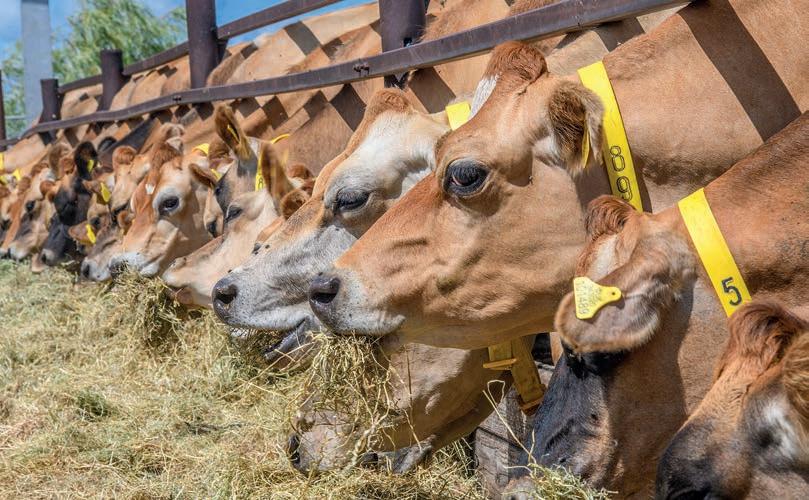
of sand and clay, but is free-draining on the whole with a good network of tracks.
In terms of breeding, sexed semen is used to produce replacements and heifers run with a young Aberdeen-Angus bull.
e rest of the herd is inseminated with a mixture of Aberdeen-Angus and British Blue genetics. Calves are usually sold young through Frome Market, which is only a couple of miles away, although Darren is exploring the possibility of selling calves direct to another farmer as market returns are typically variable.
As they do not sell much adult stock, the Bowles family took the decision to drop their pedigree status ve years ago, a decision they say they do not regret.
However, genetics are showing a marked improvement from the past, with milk in rst lactation up to 25 litres a day. Longevity is also a bene t of using Jerseys. e culling rate is 15% and the oldest cow in the herd is 12 years old.
Despite being in a bovine TB hotspot, the farm has been free for a number of years, helped by the busy roads which surround
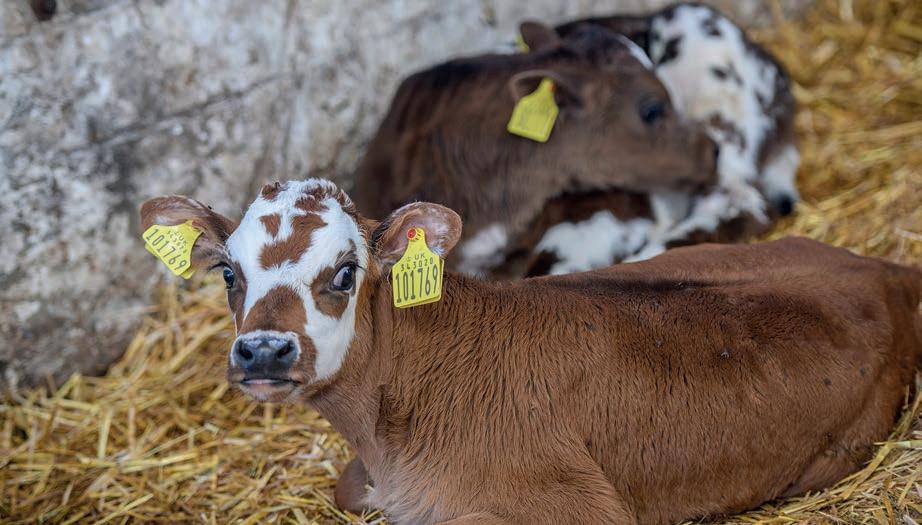
the farm boundary. However, with a number of inconclusive reactors at the moment, it is unclear how long this luck will last.
Opportunities
Looking ahead, Geo and Darren are conscious that there could be further opportunities engaging with the local community.
As part of this, they grow 1.5 hectares (four acres) of organic pickyour-own pumpkins on elds which need to be reseeded, undersowing the pumpkins with grass.
Darren says: “People love it. You have got to tap into the public. We do li le tractor rides and take a couple of friendly cows down.” e dedication of the Bowles family to their farming and their customers is impressive. ere will not be many farms which can boast both the calibre of customer and length of relationships the Bowles family have managed to sustain, while still remaining true to their family farming values.
Ivy House Farm product range
rFour types of milk
rFive types of cream
rFour types of butter
rOne type of buttermilk
SEPTEMBER 2023 36
Calves are usually sold young through Frome Market, which is only a couple of miles away.
The smaller stature of the Jersey means housing can be kept to a minimum.


Rethinking dock control this autumn
If your default is to address docks in the spring it may be time to rethink.
Dry conditions earlier in the year led many farmers to hold o grassland sprays due to grass being stressed. Now normal growing conditions have returned, docks are in abundance and should be treated. Left unchecked until next spring, dock infestations could really take hold, having already set seed and started to take over an increasingly large area than before.
A 10% dock infestation means 10% reduction in grass dry matter yield so set up your pastures now to reap the rewards of unhindered grass growth at the start of the new season.
The Must-dos of e ective dock control
Right product
To achieve the best level of weed control use the right product for the job. Using the wrong product will be ine ective and therefore expensive, as well as increasing the likelihood of a follow-up spray.
If docks are your main concern in grazing or silage fields, Doxstar® Pro is the best choice as a high-performing solution for the control of broadleaved and curled docks.
Where docks are found among other problem weeds, Forefront® T is a broad spectrum, grass-safe herbicide, also e ective on thistles, nettles, buttercups and ragwort.
Both deliver long-term control, while at the same time being very safe to grass. Always check the product label carefully for its indications.
Right time
The right time to spray docks is when they are growing actively and the size of dinner plates (approx. 20cm across) with healthy leaves but before they flower.
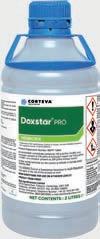

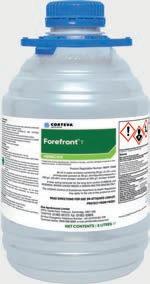


And while a headache in so many ways, the mild and wet conditions seen in recent weeks, mean docks are still growing actively and storing nutrients ready for winter.
This makes it an ideal time to apply herbicide as it will be taken down into the roots with the nutrients, resulting in good root kill.
High-quality homegrown forage is central to a sustainable production system, and e ective, timely weed control is a major consideration in support of that.
For e ective dock control this autumn and the best return on your investment, use the right product at the right time in the right way.
Applying herbicides when docks are small only results in top kill and short-term relief. Similarly, if they are too large or have flowered, less of the herbicide is taken down into the roots and once again only top kill is achieved.
If docks are too large to spray, cut or top first and spray the subsequent regrowth after 2-3 weeks when they have reached the correct size.
Right way
Avoid the temptation to choose a tank mix rather than a formulated product. Formulated products are tested rigorously in the lab and field, containing everything you need in one pack. They are also easier to handle, mix and apply.
Our product labels reflect the investment made in them so you can be more confident of their e ect in the field and the support from us to help you maximise it.
To find out more about products and the timing of applications, use the Corteva Forage app.
For more information, go to www.corteva.co.uk/forage






ADVERTORIAL
USE PLANT PROTECTION PRODUCTS SAFELY. Always read the label and product information before use. For further information including warning phrases and symbols refer to label. Corteva Agriscience UK Limited, CPC2 Capital Park, Fulbourn, Cambridge CB21 5XE. Tel: 01462 457272. ®, ™ Trademarks of Corteva Agriscience and its a liated companies. © 2023 Corteva. Doxstar® Pro contains fluroxypyr and triclopyr. Forefront® T contains aminopyralid and triclopyr. Technical Hotline: 0800 689 8899 E-mail: ukhotline@corteva.com
Ideal size for treatment






MEET OUR 2023 FINALISTS
Following a challenging task to whittle down entries and nominations, our 2023 shortlist reflects the resilience, creativity and astuteness of British farmers within their businesses and respective sectors.
AGRICULTURAL STUDENT OF THE YEAR
XStephen Evans, Harper Adams University
XDaisy Haigh, Nottingham Trent University
XNaomi Ramsay, Scotland’s Rural College
XIsla Soutter, Harper Adams University
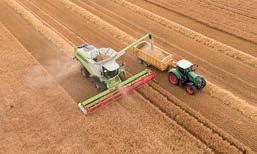

XColin Chappell, Chappell Farms, Lincolnshire
XEd Horton, S.S. Horton and Sons, Gloucestershire
XNick Padwick, Ken Hill Farms and Estate, Norfolk
XOliver Scott, Woodlands Farm, Shropshire
X James Dodson, VineWorks, Sussex
X George and Jonathan Fraser, A. and R. Fraser, Wiltshire
X Kevin Heywood, A.J. Heywood and Sons, Cornwall
X Bruce Wilson, B.C. Wilson, Yorkshire

X Ally Hunter-Blair, Born Mucky: Life on the Farm, Herefordshire
X Stephanie Powell, Farming Facebook Fireside Chat, Monmouthshire
X Matt Slack, E.V. Slack and Sons Master Butchers, Yorkshire
X Tom Ware, Just Talk Agriculture, Lincolnshire

XJames Duke, A.D.F Milking, Sussex
XTale Hagelsteen, Saga Robotics/ Thorvald, Lincolnshire
XThe I.A.G. Team, Innovation Agritech Group, Berkshire
XDr Vincent Martinez, Dyneval –Semen Quality Analysis, Midlothian


X Richard Beck, J.S. and S.M. Beck and Son, Cheshire
X Katherine Jenkinson, Katherines Jersey Milk, Cumbria
X Patrick Morris-Eyton, MorrisEyton and Son, Cumbria
X Nathan Utting, D-Agri-S, Suffolk

X Paul Coates, P. Coates, Cumbria
X Neil Davies, Cefnllan Livestock, Powys
X Helen Parr and Daniel Fabb, D.R.A. Fabb Contractors, Cambridgeshire
X Greg and Rowan Pickstock, G. and D. Pickstock, Powys
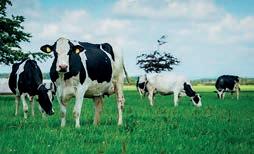
X Tamara and Tracey Alexander, Stable Stays at The Friesian Experience, Cumbria
X Amy Bateman, Amy Bateman Photography, Cumbria
X Charlie Bowling, Farmer Strong, Greater Manchester
X Holly Brooks, Popell Barns Mobile Farm, Hampshire
britishfarmingawards.co.uk Vox Conference Centre, Birmingham
October 19, 2023 SEPTEMBER 2023 38
Thursday,
Sponsored by AGCO CONTRACTOR OF THE YEAR
THE YEAR
by
FARMER
THE YEAR
FARMER OF THE YEAR
by ABP
OF THE YEAR (Small-Medium) Sponsored by NFU Mutual
Sponsored by Kuhn DAIRY FARMER OF THE YEAR Sponsored by KW DIGITAL INNOVATOR OF
Sponsored
Ecosyl ARABLE
OF
Sponsored by Kramp BEEF
Sponsored
DIVERSIFICATION
AGRITECH INNOVATOR OF THE YEAR
Sponsored by


XThis award will be announced during the awards evening.

Last year’s winners celebrating after winning their awards.
XChris, Sue and Thomas Heseltine, J.G.E. Heseltine and Son, Yorkshire
XRoger, Robert and David Nicholson, Cannon Hall Farm, Yorkshire
XDavid Rawlings, D.A. and S. Rawlings, Yorkshire
XEmily and Charlie Woodall, The Barn KT9, London



XHolly Atkinson, Carswell Farms, Devon
XJack Marlow, Moulton College, Northamptonshire
XSam Mosford, G.A. Glassford and A. Stones, Cheshire
XNick Tucker, Wastenage Farms, Devon
XAndrew Baird, J.P. Baird, Lanarkshire
XJohn Fare, Fare Farms, Lancashire
XChris and Bella Mossman, Mossman Farming, Ceredigion
XGraham Parks, G. Parks, Cheshire
XThis award will be announced during the awards evening.
XThe Beaumont family, Gowbarrow Hall Farm, Cumbria
XThe Billings family, Manby Grange, Lincolnshire
XThe Brown family, Bluebell Dairy, Derbyshire
XThe Pemberton family, Pemberton’s Farm Shop and Dairies, Lancashire

XDamian Barson, Tessleymoor Farm, Yorkshire
XAlex Crawley, Grazing Management, Gloucestershire
XJason and Amelia Greenway, Springwater Farm, Devon
XAdam and Lucy Johnstone, J.B. Countryside Services, Hampshire


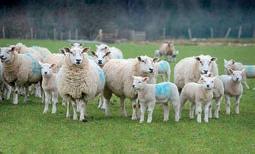
X Alwyn Phillips, Penygelli, Gwynedd
X Robert and Becca Rennie, Rennie Livestock, Roxburghshire
X Matthew and David Roberts, D.W. and A. Roberts and Son,
X Andrew Smith, T.H. and
X
X
X
39 SEPTEMBER 2023
Flintshire
Case, Somerset
J.P.
Cumbria
XPaul Coates, P. Coates,
Cambridgeshire
Martin, Juliette and Matt Lines, M.T. Lines and Partners,
Guy Prudom, P. Prudom and Son, Yorkshire
GRASSLAND FARMER OF THE YEAR Sponsored by Germinal NEW ENTRANTS: AGAINST THE ODDS Sponsored by Massey Ferguson FAMILY FARMING BUSINESS OF THE YEAR Sponsored by Goodyear FARM WORKER OF THE YEAR Sponsored by Isuzu SHEEP FARMER OF THE YEAR Sponsored by SAI Global SUSTAINABLE FARMER OF THE YEAR Sponsored by Lloyds Bank
David Shelton, Shoby Priory Agricultural, Leicestershire DIVERSIFICATION OF THE YEAR (Large)
OUTSTANDING CONTRIBUTION
FLYING THE FLAG FOR BRITISH AGRICULTURE Sponsored by Eternit
celebrate with the shortlist at the British Farming Awards, go to britishfarmingawards.co.uk to buy your tickets
TO BRITISH AGRICULTURE Sponsored by NSF
To
This year marks 15 years since the Bacon family purchased Gleadthorpe Grange Farm near Mans eld, No inghamshire, where a focus on several areas has led to impressive performance gures for all aspects of cow health on-farm today.
In 2015, the focus was on the herd moving to three-times-a-day milking. It was a ‘steep learning curve’, David Bacon admits, and one which meant they had to concentrate particularly on the management of the transition cow, but it has since resulted in 10% more milk and an increase in yield from the herd.
“Making sure the cows have a positive energy balance has made us stricter about what we put in front of them to manage intakes,” says Mr Bacon.
“We nd that if we get the transition period right, we have less metabolic disease and the cows have a be er chance of ge ing back in-calf.
“We have given the transition cows, especially the freshly calved ones, more space – this has made a big di erence. Our displaced abomasum rate is down below 1% now. We rarely see a retained foetal membrane, except occasionally with twins, and we have a very low incidence of ketosis.
Seeking the best possible cow welfare outcomes from every aspect of herd management is the ongoing goal for the Bacon family.
Chloe Palmer finds out more.
Careful herd management lifts dairy enterprise
“We no longer feed any grass silage to the dry cows as it is high in potassium. We feed maize and chopped, dampened straw. We are also more consistent with chop length, ensuring it is less than a muzzle width long, and this has improved intakes.
“As a consequence, the cows are now pu ing on condition during the dry period and fertility has improved. We are now at 25% fertility e ciency and days in milk have come down, resulting in be er yields.”
Reducing lameness across the herd has been another long-term goal for the family, so regular mobility scoring, hoof trimming and the use


If we get the transition period right, we have less metabolic disease

DAVID BACON

of a footbath have been part of the management regime for many years.
NSAID trial
Recently, the farm took part in a trial studying the impact of the routine use of non-steroidal anti-in ammatory drugs (NSAIDs) in heifers at rst and subsequent calvings.
Impressed by the results, Mr Bacon says: “We were surprised with the outcome of the study, especially the long-term positive e ects on the heifers.
“By administering a three-day course of a single dose of NSAID routinely at 24 to 36 hours a er calving, in conjunction with a thera-
peutic hoof trim and hoof block, we have dramatically reduced lameness and increased life expectancy.
“We now mobility score fortnightly. If we identify a lesion, we treat as soon as possible so the cows do not lose out on time spent feeding and lying down. We give the cows NSAIDs and use blocks, even for very mild lameness.
“We carry out three therapeutic trims a year for the cows; the heifers are trimmed at 60 days in milk, cows at 90 days and everything is trimmed at 200 days and at drying o .
“ is means we keep on top of any overgrowth, the hoof angle is kept neater and the sole is well
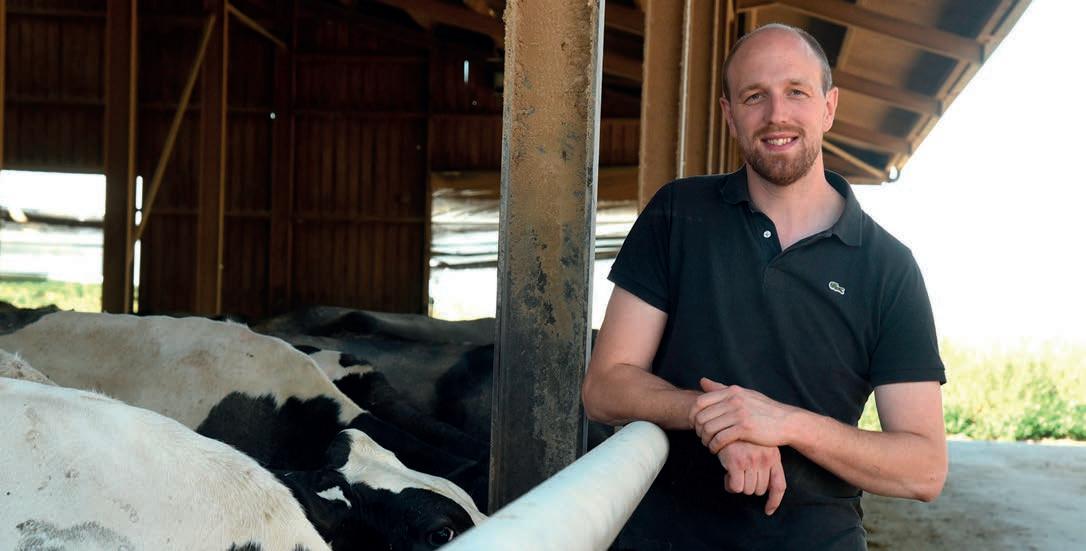
SEPTEMBER 2023 40 MANAGEMENT
PICTURES : Adrian Legge


modelled out so there is less strain on any lesions present.”
e Bacon family work very closely with their vet, Katie Fitzgerald of Bishopton Vets. She is similarly positive about the results of the trial.
Ms Fitzgerald says: “First calving is a very stressful time for heifers as they are going through physiological
changes and there are also signicant changes to their environment.
“We are very keen to promote the use of NSAIDs, so it is great to have some evidence that their use is not only bene cial from a welfare perspective, but that they are also cost-e ective to use.”
Mr Bacon is also looking at other


Scours has serious on-farm implications
Scours is the greatest single cause of death in young calves, but a new survey has revealed the emotional and financial toll it takes on dairy farmers and why vaccination can be key to managing that disease risk.
For more information about scours, scan the QR code.


changes to housing and management which may further reduce lameness in the herd, including regrooving the loa ng area, collecting yard and passageways.
Cows are also milked as two separate groups now, so they spend less time waiting, and there are plans to invest in new ma resses for the
cubicles to improve lying times. e next aspect the family want to tackle is footbathing.
“Currently, the milking herd just walk through [the footbath] to and from the parlour, but we think they need to spend more time in it,” says Mr Bacon.
“We also need to work out a way

SEPTEMBER 2023 41
Bovigen Scour emulsion for injection for cattle contains inactivated antigens: Bovine rotavirus strain TM-91, serotype G6P1, Bovine coronavirus strain C-19, Escherichia coli strain EC/17 (F5 / K99 antigens). UK: POM-VPS IE: POM Advice on the use of this medicine, or alternatives, must be sought from your Veterinary Surgeon. Further information available from the package lea et, SPC or from Virbac Ltd, Woolpit Business Park, Windmill Avenue, Woolpit, Bury St Edmunds, Su olk, IP30 9UP, UK. Tel: +44 (0) 1359 243243 UK: Email enquiries@virbac.co.uk https://uk.virbac.com IE: Email enquiries@virbac.ie www.virbac.ie Use medicines responsibly. www.noah.co.uk/responsible www.apha.ie
SCAN ME
David Bacon is hoping to reduce lameness in the herd by making changes to housing, such as regrooving the loafing area, collecting yard and passageways.
MANAGEMENT
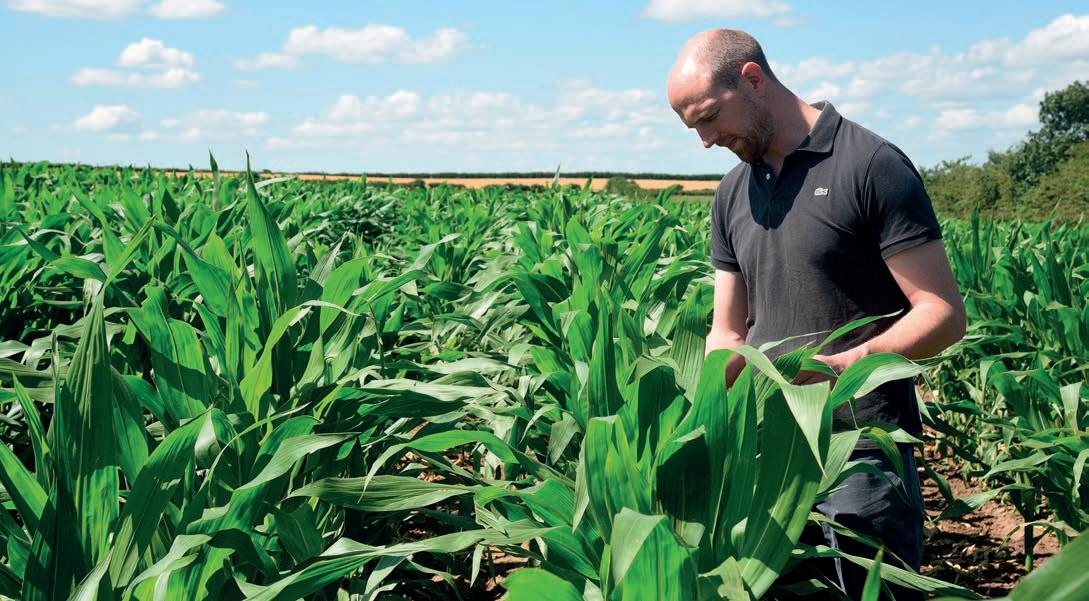
Farm facts
r182 hectares (450 acres) of workable land, 20ha (50 acres) permanent grassland, and the remainder is arable: 90ha (222 acres) of maize and 20ha (48 acres) of lucerne
r500-cow milking herd and 50 dry cows housed all year round and milked through a 36-point rotary parlour three times a day
rMilking herd fed a homegrown total mixed daily ration of 27kg of maize, 11kg of grass silage and 6kg of lucerne (all fresh weights)
rThe location of the unit on the sand lands, where rainfall is below 700mm, means grazing is not feasible
rFamily farm is managed and staffed by the Bacon family who all work full-time at Gleadthorpe, alongside six members of part- and full-time staff as night shift workers and milkers
rBrothers Robert and Richard Bacon are directors alongside Richard’s sons, David and Will. Richard’s daughter Martha is responsible for calf rearing
of incorporating the footbath into the routine for the dry cows.”
Reducing the use of antibiotics on-farm has been another priority and, since they began monitoring, use has fallen from 14mg population corrected unit (pcu) to 9pcu.
Ms Fitzgerald believes the focus on transition cow health has had a signi cant in uence on the marked reduction in use of antibiotics.
She also points to other impressive statistics for the farm, re ecting the continual emphasis on improvement.

She says: “ e mortality rate for the calves is below 2%, and this has also contributed to the fall in antibiotic use here. e rate for cows leaving the herd before 30 days in milk is almost down to zero.”
e family have invested considerable e ort in eliminating Johnes across the herd through a programme of rigorous testing, coupled with separating high-risk animals from the rest of the herd at calving.
Colostrum management has led to an increased daily weight gain for
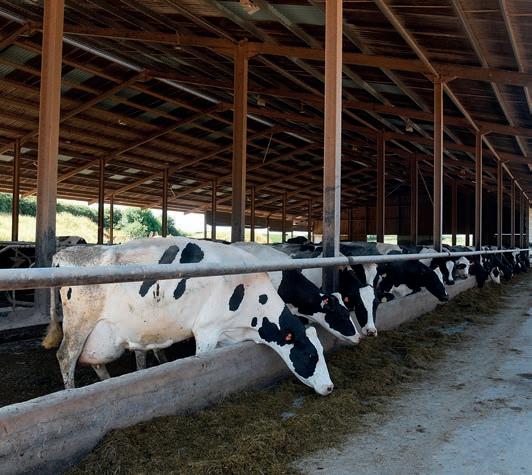
the calves, and Mr Bacon hopes this will allow them to reduce the age at rst calving.
Colostrum
“We give four litres of colostrum as soon as possible, and then two to four litres at the next feed. We blood sample the calves every week to check the total proteins, and the good results suggest our approach is working.
“We have gradually increased the amount of milk replacer we are feeding to the calves, and this is
rGrass silage is taken from the permanent pasture on-farm, but due to the dry climate and free draining soils, grass growth slows after the second cut
rGrass receives slurry and a small quantity of bagged nitrogen
rMaize is drilled in early May and is top dressed with slurry when it is growing
rLucerne performs well in the dry, warm conditions at Gleadthorpe Grange and responds well to irrigation in drought years. The lucerne is

There is 90 hectares (222 acres) of maize on the farm, which is drilled in early May.
currently eight litres per day with 150g of powder per litre,” he says.
By introducing genomic testing to the herd, the family is harnessing the power of genetic improvement alongside the many management changes they have made. Mr Bacon says concentrating on fertility and lifespan traits alongside yield should play into be er feet and legs.
He says: “We are not looking for an extreme cow; we want to see a good chest and rump width to give us a cow which will last.”
Home-grown feed
now clamped between two layers of grass silage to aid consolidation and fermentation
rThe Bacon family hire contractors for all their silage making. The contractors use mergers to harvest the lucerne because the machine’s gentle action of lifting the crop into a cross belt delivers the crop to a swath. This is ideal for lucerne because it is a delicate leafy crop, and much of the feed value is in these easily lost leaves. It also prevents stones being picked up into the crop
SEPTEMBER 2023 42
Milking three times a day has resulted in 10% more milk from the herd.
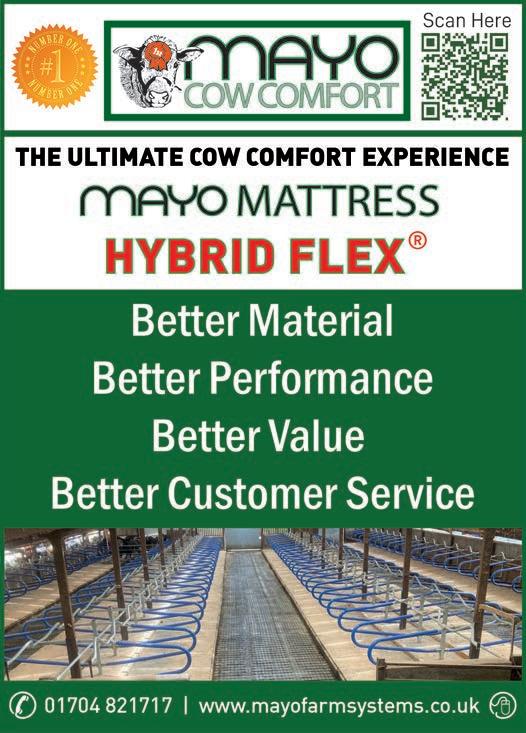

• Starting 13th September 2023
Next online course:
• Starting 6th November 2023

43
SEPTEMBER 2023
MOVING FROM BEEF
It was unsurprising that Gwyn Roberts wanted to carve out his own agricultural career path a er growing up on a family farm. He ran a beef and sheep enterprise while pu ing in an eightyear stint in ca le reproduction at Genus ABS; he enjoyed his work, but was keen to get back to farming on a full-time basis.
An opportunity arose for him to do just that in 2017, when he successfully applied for a tenancy on a 79-hectare (195-acre) David Hughes Charity Farm in his home region of Anglesey.
He started out his tenancy rearing Friesian steers and selling them at 21 months old through the market and to a local nishing unit. He also ran a 750-head ock of sheep comprising 500 Welsh Mountain ewes and 250 cross-bred ewes.
However, four years into taking on the tenancy, Mr Roberts could see that things needed to change, and he went on to invest in the region of £300,000 to £400,000 to convert the farm into a dairy out t.
Today, Bodfeddan Farm in Ty Croes is a grass-based dairy operation run by Mr Roberts and his wife Rhian. It is home to 210 New Zealand Friesian cross New Zealand Jersey maiden heifers, just six months into their rst milking.
“My grandfather milked, my dad milked, and my brother milks,” he says. “I have always enjoyed milking, and I think dairy has always been in my heart.”
However, his main driver was the future of the farm and what that meant for his family – he needed to consider how else they could achieve a productive and pro table farm business.
“I could see that there was not much money le in the sheep a er selling lambs, and with all the hard work that goes into it, there just wasn’t the return we wanted.
“Rearing the dairy steers was working well and we were able to get them to around 600kg by 21 months and had reliable buyers. But I could still see that the future of a dairy farm was more secure.”
Looking at the prospects for dairy,
Switching from meat to milk production is a significant undertaking, and there are multiple factors of transition to consider. But for one Welshman, getting into the business of dairy adds up. Natalie Noble reports.
Managing the transition from beef to dairy


Mr Roberts viewed it as three sources of production: milk, calves and replacement heifers. Each of these have their own income opportunity.
“I know there have been ups and downs in milk, but that has been happening for the past 20 years,” he says.
“In comparison to the beef and sheep, I felt I would be in a be er position where we could plan ahead, receive income from a monthly milk cheque as well as additional income from secondary production.”
Mr Roberts wanted a simple parlour and system that could be adapted as the herd and business progressed. A er doing some
research, he spoke with three parlour manufacturers and was put in touch with Emrys John, an area sales manager from GEA. Meanwhile, he had also approached his bank for lending and, with the go-ahead from the bank, work began in the la er part of 2022. Mr Roberts was able to utilise existing infrastructure in the dairy unit; two old agricultural sheds, one of which was an under-roof silage pit.
“We built a 60-foot by 30 extension on the front of the silage shed; those buildings now house the parlour and the roofed collecting yard,” he says.
He also converted one part of the existing loose housing to cubicles.
Delayed in transit from New Zealand, the parlour nally arrived on January 4, 2023. A er was quickly mobilised and installation was completed in about four weeks.
Parlour
Mr Roberts says: “We have installed a Milfos 20:40 swing-over parlour with swing arms. It has got automatic cluster removal but everything else is manual; basic hoppers with pull cord feeders, and manual gates.
“It is typical for a grazing spring-calving herd; if we were all-year-round calving, we would want the auto ID and yield measurements. Looking ahead, we can record milk if we want to through installing milk meters. But it has everything we need in a parlour at the moment.”
Bought in last year as in-calf heifers from two Anglesey dairies, 80% of the spring block-calving herd calved in February, with the rest calving in March – just shy of their estimated mature body weight of 500-520kg. Only six months into their rst milking, the herd is producing average daily yields of 15.5 litres at 3.76% protein and 4.95% bu erfat, with milk supplied on a solids contract to Yew Tree Dairy.
e herd predominantly milks o grass on a rotational paddock system, with a 21- to 23-day rotation.
SEPTEMBER 2023 44
Gwyn Roberts
As it is a very dry farm, Mr Roberts also bu ers feeds with silage bales to take the pressure o grazing and compensate for forage shortages caused by dry conditions.
e herd was served in late spring, with 75% of the herd inseminated in the rst four weeks of bulling with conventional British and Irish Friesian bulls, and the remaining 25% inseminated with conventional Hereford. He then hired two KiwiCross bulls to run with the herd for four weeks.
e plan is to operate a replacement rate of 30-40 heifers per year, with surplus stock sold. Tapping into an additional income stream, bull and beef calves will be reared and sold as stores at 21 months to local nishing units.
Mr Roberts is looking to grow the herd to 240 milkers. However, there is a caveat.
“We want to stock the farm in an e cient way that takes into consideration drought impact on forage availability.”
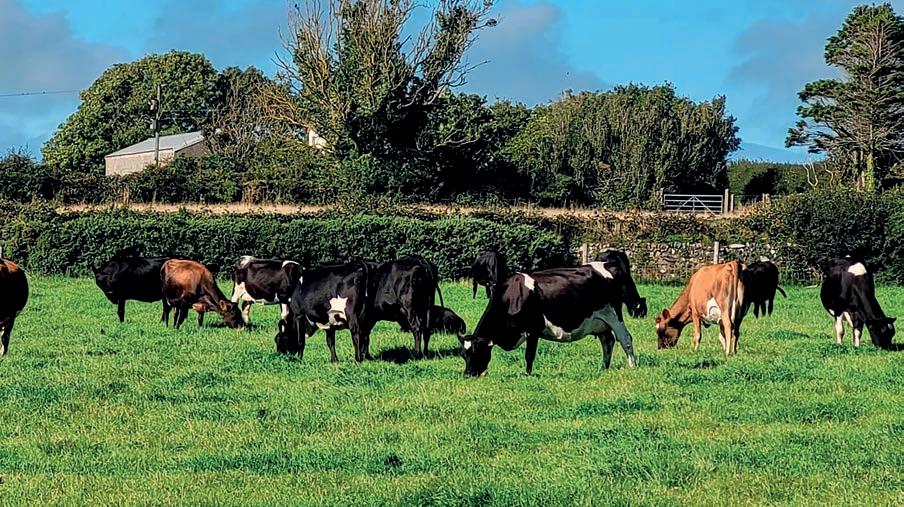

His focus is now on making the most of his forage. To that end, in early May, he reseeded 1.6ha (4 acres) to a permanent grass mixture with plantain and red clover. To Mr Roberts’ delight, the ley was t to graze by the end of June and is now heading into its third round of a 21-day rotational grazing system.
“We saw up to two litres in additional milk and an increase in protein and bu erfat,” he says. “I will be reseeding another 3ha this autumn.”
He has also put 16ha (40 acres)
aside for silage production to aid winter forage stocks.
Planning ahead
Positively, and even though it is his rst summer milking, he has already found that they are in a better position, and able to plan ahead.
He says: “We are much more in control of costs and pro ts, as well as what comes in and out of the farm. It is still early days and I am sure there will be plenty of challenges, but we want to stay positive.”


Farm facts
rHerd is vaccinated against bovine viral diarrhoea, IBR and leptospirosis
rThe most exposed fields will be sown this autumn with a multi-species herbal ley, specifically designed for dry ground
rA 16% crude protein dairy nut is fed in the parlour at a rate of 3-3.5kg per head per day from February to mid-May, reduced thereafter to 2kg
SEPTEMBER 2023 45 Key Features: Flying insects stay away Birds stay out Energy efficient Reduces ground moisture High Volume Low Speed 100ft by 100ft effective working area HVLS - Fans Fora no obligationquote or moreinformation Cowcare SYSTEMS Innovators in Dairy Farming Wales/Midlands/S. England Fred - 07762800149 N.Ireland/ R.O.I John - 07732348225 Scotland/N. England
Andrew - 07803124235 info@cowcaresystems.com
07591833853
Gwyn Roberts operates a 21-day rotational grazing system.
Salt and vinegar are not normally associated with dairy cows, but supplementing diets with them can bring benefits. Ruth Wills reports.
Salt and vinegar supplements can offer benefits in cows’ diets
Salt is an essential for many bodily functions in livestock, but as it cannot be made or stored in the body, regular intake is necessary.
Dr Graham Shepherd, founder of G. Shepherd Animal Health, says: “When we are talking about salt in this context, we mean sodium chloride which comprises 40% sodium and 60% chloride.
“A common source of sodium chloride is rock salt.”
He explains that too li le salt in dairy diets can result in reduced production, poor appetite, lower growth and less milk yield, while too much can cause gut problems and, in rare cases, salt poisoning.
“Severe de ciencies in salt can cause seizures and death,” says Dr

Shepherd. “So it is important to ensure enough salt is fed, that it is mixed throughout the feed and that drinking water is good and freely available.”
Animals will o en seek out salt if they feel they need it and a de ciency presents itself as cows licking objects, other animals or drinking urine, he says.
Usually, farmers supplement cows with salt because forage and grains do not generally provide enough, even though salt is present in the soil.
Brewers’ grains, fodder beet, kale and turnips can have decent salt levels, for example.
Rain
“A coastal farm will have more salt in the soil due to higher levels in rain coming from clouds which absorb it from the sea, whereas an inland farm is more likely to be sodium de cient.
“Areas with high rainfall may be more prone to sodium leaching from soils,” Dr Shepherd says.
Salt, he adds, is also usually added to concentrates and to the total mixed ration (TMR).
“ e e ect of salt in the TMR will increase food intake, which is vital in high yielding animals.
“But by providing access to lump rock salt, the animal can do the ne tuning itself.
“Free-access salt should be placed away from water, as a repetitive salt and water habit can form.”
In dry cow diets, salt in uences the dietary cation-anion di erence status adversely and increases the risk of milk fever and related problems.
Excess salt can also result in problems with udder oedema around calving.
Vinegar
Cider vinegar has grown in popularity for inclusion in dairy cow diets, with bene ts said to include cell count reduction, less lameness and be er fertility.
Dr Shepherd says: “A good example is feeding cider vinegar to ca le. It is a fairly widespread
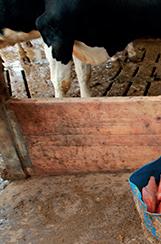
practice and I can remember dad adding it in the troughs of our old abreast milking parlour.
“He was using it to li bu erfat when cows were on spring grass.
“Other examples include farmers feeding cows 60 to 80ml of apple cider vinegar per day in the TMR, through a dosing pump into drinking water or as a top-dressing on feed.
“I have no evidence of the bene ts concerning cell count, lameness or fertility being a direct e ect from feeding the vinegar, but it may be from be er digestion, vitamins and trace elements.
“Being a vet and scientist, I like to see strong evidence, but I keep a very open mind to what farmers are doing that might seem a li le less proven,” says Dr Shepherd.
Processes linked to salt in metabolism
rBalancing pH or acid base in the rumen
rSodium and chloride are important electrolytes which can become out of balance when there is diarrhoea, water deprivation, excessive exercise and heat stress
rMaintains blood pressure and blood volume
SOURCE
rNeeded for nerve and muscle function
rStomach hydrochloric acid production – which is important for post-rumen digestion
rSaliva needs sodium from salt – which is important for buffering the rumen, looking after rumen bugs and avoiding acidosis
rSalt availability can also lower the risk of grass staggers
SEPTEMBER 2023 46 NUTRITION
Dr Graham Shepherd
: Dr Graham Shepherd, G. Shepherd Animal Health

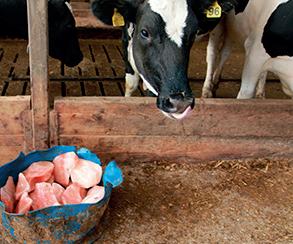
Common salt supplements
rLump rock salt can be red or white, but the red may contain more minerals. It is more rain resistant than manufactured blocks, but should be stored in a dry place
rPure dried vacuum salt is commonly added to concentrates and total mixed rations
rUsing sodium bicarbonate in dairy rations will supplement sodium, but not chloride, so there is an
Raw, traditionally made, unpasteurised apple cider vinegar is made up of acetic acid, vitamins and minerals.
“When bu ering the rumen, the pH stabilises due to a mix of weak acid and salts from the weak acid.
“Both of these are present in natural cider vinegar as acetic acid and acetate salts,” says Dr Shepherd Buffers
“ is mix of bu ers, vitamins and minerals encourages the rumen bacteria to digest bre.
“ is improves digestion speed and encourages food intake.
“And increased energy, together with extra micronutrients,
upper level for its inclusion and salt may still be needed – consult a nutritionist
rBagged minerals, depending on their formulation
rMineralised salt blocks
rLick buckets
rSalt can be spread on the pasture to improve palatability and sometimes the soil chemistry. It is also included in some natural and manufactured fertilisers
can bring health bene ts.”
For calves, with the aim of reducing scours, 20ml of cider vinegar can be added to the milk at the point of feeding,
“ ere are products available like Kryptic-Pro, which aids digestion of milk and RehydroGEL liquid electrolyte, which uses acids that convert to bicarbonate in the liver.
“ e acid in both these products is similar to the acid in cider vinegar, which improves milk clo ing in the abomasum,” he says.
“So, when thinking about salt and vinegar, salt has lots of concrete evidence while vinegar may be a bit o -piste, but it could be worth trying out.”

Our range of self-propelled and single, twin or triple auger trailed feeders with capacities from 5m3 up to 46m3, all available with a wide range of specications and options, makes BvL the ideal solution for all your livestock TMR needs.
FREE Auger Magnet upgrade on all new BvL V-Mix trailed feeders
ordered by 31st August
Avoid the risk of your livestock ingesting wire or other metal objects in their feed.

Until 31st August 2023, we are offering a free Auger Magnet upgrade worth over 1200 Euro on all BvL
single, twin and triple auger trailed mixers, ranging in capacity from 3.5m3 up to 46m3, ordered by that date. *

The livestock feeding experts
For more information on this offer, please contact either: Scotland, Northern England and Northern Ireland: Paul McUrich - 07810 040100 / paulmcurich@gmail.com
Central/Southern England annd Wales: John Molton - 07947 719985 / john.molton@bvl-group.de
www.bvl-farmtechnology.com
* Terms and conditions
SEPTEMBER 2023 47 NUTRITION Innovation. Experience. Strength.
apply
Aut 23 auger offer half page vertical.qxp_Layout 1 24/07/2023 11:58 Page 1
Salt lick buckets are one way of adding sodium and chloride to cows’ diet.
SOURCE : Dr Graham Shepherd, G. Shepherd Animal Health
Key to getting best from silage is precise supplementation
Following the disruptive weather conditions so far this summer, results from this year’s silage samples have been variable. As a result, supplementation will be key in feed rations and farmers are being advised to take more frequent silage samples, to understand exactly what is in the clamp.
A er analysing more than 1,800 rst cut samples and 500 second cut samples at the company’s laboratory, Trouw Nutrition’s GB ruminant technical development manager and sustainability lead, Dr Liz Homer, said it was quality not quantity which will be the issue with this year’s silage cuts.
She explained poor quality silage could potentially a ect dry ma er intakes, meaning supplementation may be required to help maintain margins.
While results show that overall dry ma er content is good for both rst and second cuts said Dr Homer, with metabolisable energy averaging over 11 megajoules (MJ) per kg of dry ma er (MJ/kg DM) and crude protein over 14% DM, the neutral detergent ber (NDF)
The only way to account for variability is to analyse clamps on a regular basis, at least monthly

Following
and lignin content remains high. As a result, the digestibility of the silage will be a ected and consequently so will dry ma er intakes.
With lignin levels as high as 40g/kg DM, this will impact how the silage will feed out and ferment in the rumen.
Digestibility
Dr Homer said: “A proportion of NDF is digestible, and a proportion is not. Lignin is the proportion which is not digestible and the more lignin, the more of the plant is less digestible.”
“Although the headline gures are good overall, we are looking at more brous and less digestible forages with lower rumen fermentable carbohydrate and protein.”
She explained this meant silage will need to be carefully balanced to keep the rumen red up enough to digest the higher bre content, increase forage intakes and make the most of silage stocks.
Dr Homer advised nutritionists will need to concentrate on
ensuring diets will balance rumen fermentable carbohydrate and protein, to optimise microbial protein and rumen energy supply. She said it will be a case of providing supplements that will perform optimally in the rumen, rather than buying on headline analysis and price.
As results show lower energy will be available from silages, Dr Homer said adding cereals and bypass energy such as maize into rations may be required.
However, the weather is also a ecting maize crops, and while standing crops may look strong the lack of sunshine could have implications on cob development and starch content. erefore, Dr Homer said understanding forage quality was going to be key this year.
Analysis
She advised ge ing all silage clamps analysed regularly throughout the season will be vital this year, as it is important to recognise that averages only provide a guide and diets will
need to be tailored and ne-tuned to the silage analysis.
Farmers should take at least one more sample than they usually would, due to potential variety throughout the clamp, in the form of di erent cuts and swards, as well as being harvested at di erent times and in varying conditions.
“ e only way to account for variability is to analyse clamps on a regular basis, at least monthly.
“ is will allow for more informed decisions to be made about supplementation, to optimise the contribution from forage and income over feed costs.”
Looking ahead to third cut, Dr Homer said mid-season growth has remained high due to the wet weather in July which should be re ected in larger third cuts and subsequent cuts to help increase total silage stocks.
She added: “Hopefully farmers will have good forage stocks and with regular analysis will be able to make the most of their investment in forage.”
SEPTEMBER 2023 48 NUTRITION
the disruptive weather conditions this summer, results from silage samples have been variable.
DR LIZ HOMER




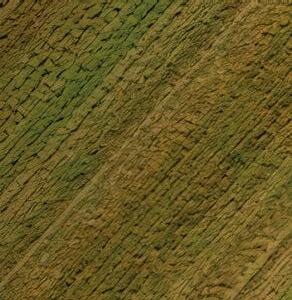

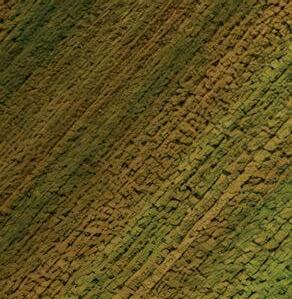

























Maximum crop inta

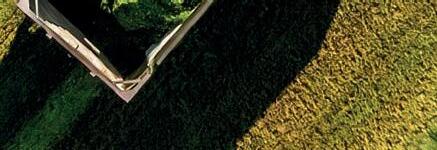




Enhanced nitrogen utilisation
Optimised spread p





Contains recognisable orange granules





ww w.oci-nutramon.com atterns .oci-nutramon.com





EFFICIEN T NUT R IEN T US E FO R MAXIMU M YIEL
• • • •
D
Throughout Mark and Sue Nutsford’s dairy farming journey there has been continual evolution and change and recently this has been evident in the significant investment in automation and technology and a milestone on-farm sale sale. Katie Jones reports.
Describing themselves as ‘cow mad’, Mark and Sue Nutsford’s interest in pedigree Holstein cows started well before they bought Ravenscro Hall Farm in Middlewich, Cheshire, from where they established the well-known and highly regarded Riverdane herd.
Prior to July 1999, when they moved to the farm, they owned and part-owned a number of cows which were housed within various herds around the UK and beyond.
Initially they thought they would like to take on a smallholding to house their small herd of elite pedigrees, but encouraged and supported by Mrs Nutsford’s father, Bill Nadin of the Sterndale herd, they took on the entirety of Ravenscro Hall Farm, starting o with a herd of 40 cows.
Fast-forward 24 years, and the Nutsfords, along with daughter Jodie, are milking 200 cows and have recently invested in two GEA robots, which work alongside a 20:20 GEA parlour, and a robotic slurry collector and feed pusher.
All this, says Mr Nutsford, has
Investment in tech helps future-proof dairy business
been done with a view to bringing the farm into the 21st century.
“In 2019 we started thinking about what we were going to do, the dairy industry was facing challenging times and we had really decided it was time to give up.”
Continue
However, a er much soul searching, and fuelled by Jodie’s passion for cows and the farm, they decided to continue milking.
Mr Nutsford says: “We decided that if we were going to stay in the industry, we were going to have to invest.
“We expanded our existing cubicle shed, which we had built
in 2010, and built a new shed alongside this, all of which accommodates the deep sand bedded cubicles, robots and parlour.
“
e only way we were going to pay for all this was by doubling the size of the herd.”
e high yielders are milked through the robots three or four times a day, and once they get to 140-160 days in-milk and PD’d back in-calf, they are moved over to twicea-day milking through the parlour.
By using the same make of parlour and robot, cows only need to be ed with one set of collars, so can easily move between the two.
Mr Nutsford adds the transition from the old parlour to the new


setup in October last year was smooth, partly helped by the fact the cows were already being milked three times a day in the old parlour.
Yields have remained consistent throughout, with an average of more than 11,000 litres.
ere is a yield drop of about 10% when the cows move from the robot to parlour, but Mr Nutsford says the cows do not seem phased by the move and are overall much more content in their new environment.
Loose housing
e shed also includes loose housing for the dry cows, calving cows and fresh calvers.
Mr Nutsford says: “ e setup
Farm facts
rMilk is sold to Muller on a Sainsbury’s contract
rCows go through an automatic footbath when exiting the robots
rCalves are fed their mother’s milk for the first five days before going onto an automatic calf feeder
rThe Nutsfords are farming 182 hectares (450 acres), of which 48ha (120 acres) are owned and the rest rented
r30ha (75 acres) of maize and 14ha (35 acres) of wholecrop are grown
rYoungstock are kept at a nearby farm
SEPTEMBER 2023 50 FUTURE-PROOFING
From left: Sue and Mark Nutsford with full-time staff members Katy Richardson, Emily Shorthouse, Joe Lewis and Oliver Greenhalgh.
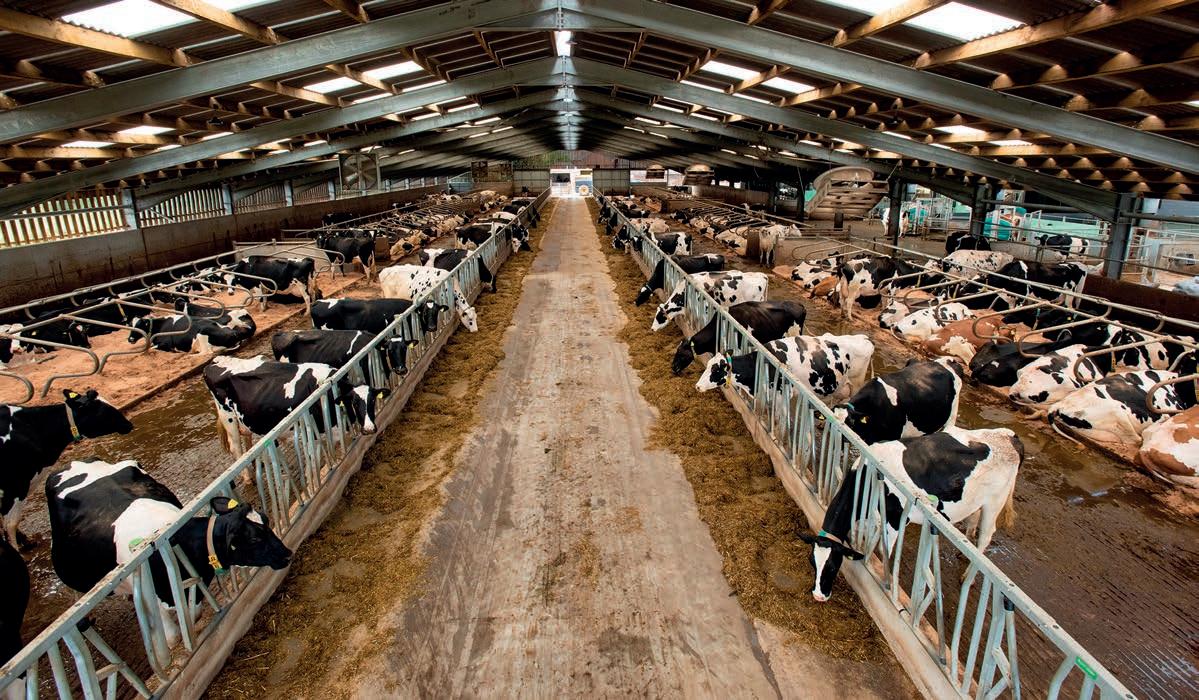

of the pens is sequential. e dry cows move into the calving pen three weeks before calving, and once calved they are moved a short distance to the fresh pen which is close to the robots, before they join the main herd.”
The shed also includes a pen for the ‘show cows’, and the herd has seen considerable success over the years in the showring.
He adds the biggest change since milking through the robots
and parlour has been to the working day for all the team at Riverdane. Prior to this Mr Nutsford was largely responsible for the night-time milking, which then allowed him to continue with his embryo transfer work with Cell-
tech which he runs in partnership with Tom Lomas, and sees him work with herds all over the UK.
“ e robots and parlour have changed my life. I was milking from 10pm to 2am, ve nights a week.
“Now I just have to collect a few






No major upfront costs







Open phone camera & scan






Tailored re-payment options
Potential tax benefits
Same day finance decisions
Scan the QR code to watch the video.
Discuss agricultural finance solutions for livestock, machinery, vehicles and more.
51 SEPTEMBER 2023
Credit Act
by the Financial Services
Markets Act 2000.
www.financeforfarms.co.uk
Finance for business use customers only. All finance is subject to credit status, approval, terms and conditions. Finance for Farms is a trading name of Shire Leasing PLC who is authorised and regulated by the Financial Conduct Authority for certain types of consumer credit lending and credit related activities that are regulated under the Consumer
1974 and
and
01827 300 333 farmers@shireleasing.co.uk
The existing cubicle shed was expanded and a new shed built to accommodate the robots and new parlour.
PICTURES : John Eveson
cows in an evening, which will take no longer than an hour.
“In the past the team were spending all day milking, feeding and scraping. We wanted to automate these jobs as much as possible, so we could free up time to do more stock tasks.”
With Celltech work taking up most of Mr Nutsford’s time, the day-to-day running of the herd is handled by Mrs Nutsford along with herdsman Oliver Greenhalgh and three other full-time members of sta ; Katy Richardson, Emily Shorthouse and Joe Lewis. Jodie also works on-farm at weekends and in between her veterinary medicine studies at Liverpool University.
Another investment, which Mr Nutsford says has been vital to the success of the new setup, has been in-shed ventilation.
“Because the high yielders are housed we had to invest in fans. e velocity of the VES fans increases as the temperature in the shed goes up, and I would say they will probably

be running for 11 months of the year and are important even in winter to help move air around the sheds.”
e low yielders have free access to grazing during the summer months and are o ered a total mixed ration based on home-grown maize and grass silage, and wholecrop, back in the cubicle shed.
Breeding is done via arti cial insemintation, with sexed semen and conventional semen used on most of the herd along with some Aberdeen-Angus beef semen as set out by their milk contract.
Mr Nutsford says while travelling for his Celltech work he always has his eye out for potential new

genetics to bring back to his herd. He says: “We are always looking to invest in new families and new genetic lines that are going to improve what we have.”
And to celebrate the progress that has been made over the last 24 years, and to keep up with their desire to evolve and develop, a sale of 150
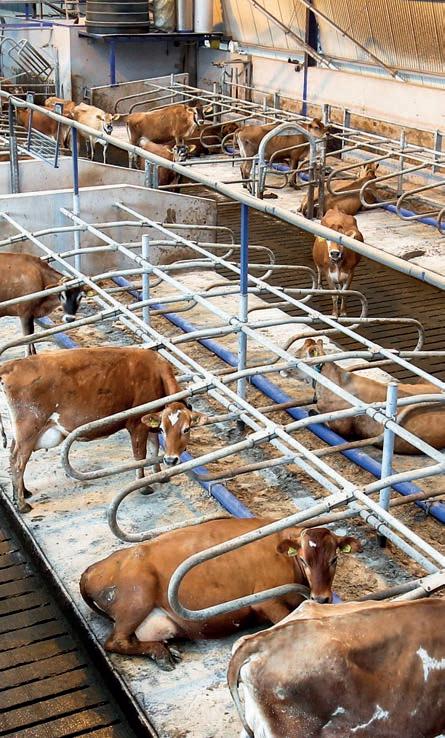
SEPTEMBER 2023 52
Tel: 028 6774 8377 (NI/UK) / 048 6774 8377 (IRE) www.teemoreengineering.com › Gates › Cubicles
Mats & Mattresses
Drinkers › Feeders › Crushes & Handling
Calf Equipment and more ... TEEMORE ENGINEERING INNOVATIVE LEADER IN LIVESTOCK HOUSING AND HANDLING EQUIPMENT
FUTURE-PROOFING
›
›
›
High-yielders are milked through the farm’s two robots, before moving to twice-a-day milking through the new parlour.
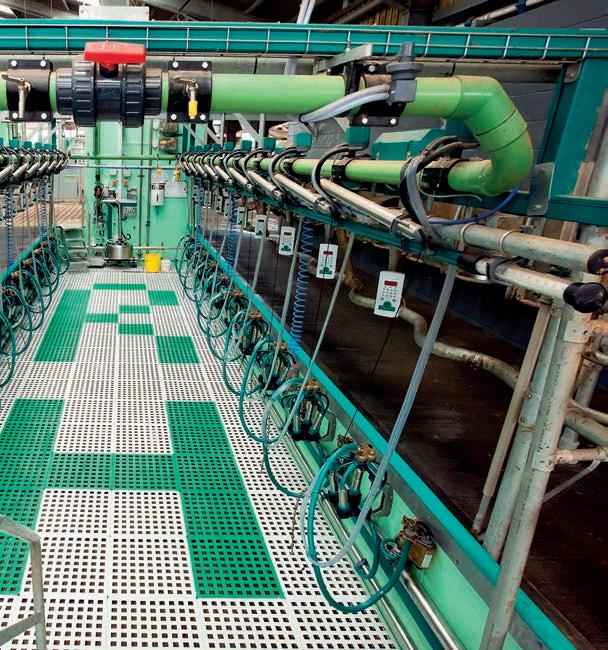
head, including 60 milkers, will take place on-farm in mid-August.
e Nutsfords say this sale has been in the planning for several years, and has been the focus since they started building numbers back up a er selling 200 milking cows to the Willsbro herd in 2008.
Mrs Nutsford says: “We have always wanted an on-farm sale. In the past we have o en sold batches of cows privately, o en between 50 and 90 at a time. at has kept our business going.
“Without that extra income from selling our cow families there is no way we could have invested in the new setup.”
e herd has several proli c and successful cow families, and when pushed Mr and Mrs Nutsford

pick out the Springsteins, Ashlyns, Atlees and Sharons as having a particular impact on the make-up of the herd.
And in the spirit of constant evolution, the Nutsfords’ plans for the future include investment in solar energy.
Electricity
Mr Nutsford says: “Everything on-farm is run by electricity, so the focus going forward is investment in our own green energy.”
And with 50 heifers due to calve in September and October, the Nutsfords say it will be business as usual again a er the sale, with milking cow numbers quickly back up to the optimum level for the robots and parlour.



SEPTEMBER 2023 53 Dairy Feeds For Your Herd www.nwfagriculture.co.uk NWF Agriculture is the largest British owned supplier of high quality, competitively priced dairy compounds, blends and associated products.
your dairy farming system, NWF works with you to provide first class service and expert advice to improve herd performance and profitability. Associated products available include minerals, milk replacers, supplements, straights, molasses, rumen paks, silage additives, fertiliser, grass and forage seed. Sponsor of UK Dairy Day Visit us on Wed 13 Sept Stand H217 Get in touch for feed and expertise 0800 756 2787
Whatever
Cows are fitted with collars which are compatible with both the parlour and robots.
The feed pusher ensures cows can always access food at the feed fence.
Good cow health, fertility and quality forage are contributing to increased levels of milk for one high output herd. Dairy Farmer reports.
Targeting high levels of milk from forage
Meticulous forage management from eld-to-cow is helping Mark Lova produce 5,329 litres from forage.
e 180-cow herd is averaging 13,000 litres at 3.95% fat and 3.26% protein, with a feed conversion eciency of 1.57kg of energy-corrected milk per kilo of dry ma er fed.
Mark farms in partnership with his father Edwin and wife Sa ron at Oak Lodge Farm, Stoney Stanton, Leicester. He a ributes this success to an unwavering focus on quality forage both in and out of the clamp.
He operates a multi-cut silage system with grass cut every ve weeks. One third of the farm is reseeded annually, with top varieties of three-year perennial grass leys grown as a break crop a er wheat.
e dairy has a slurry separator which allows targeted use of nutrients; dirty water, high in nitrogen, is targeted at grassland, and solids that contain higher levels of phosphorus and potassium are spread on arable crops.
Two cuts of similar quality are clamped together to improve the consistency of the diet for longer periods. Last year, rst and second


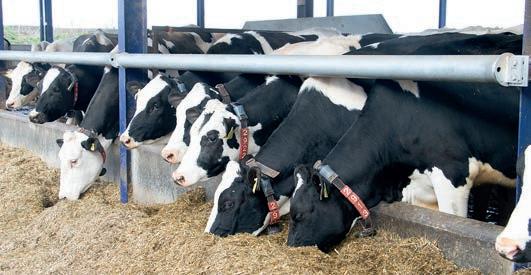
cut averaged 16% protein and 12.1MJ/kg of metabolisable energy.
Last year, soya was removed from the ration with the help of the herd’s nutritionist David Howard, from Wynnstay. is has been replaced with more protected rape alongside the amino acids lysine and methionine, and total crude protein has been reduced to 15%.
e dairy ration is made up of 60% forage and 40% concentrate; comprising 27kg of maize, 16kg of grass silage, 5.25kg of blend (protected rape, rape meal, wheat distillers and ground maize) alongside yeasts, straw, fats, and amino acids.
High daily dry ma er intakes of 27.2kg are being achieved with diets recalculated daily and feed out adjusted to reduce waste.
Mark says: “If cows have not



grooving concrete oors, alongside improving the lighting and ventilation of sheds by installing LED lights and fans, has helped drive feed intakes.
In the milking group, cows are given more than 1.2mm of feed space and are not stocked at more than 90%.
eaten it, we will hold them or cut it back. Or if they have eaten it all, we will increase it.”
He is using Lely’s feed optimiser app which ne-tunes the amount of concentrate fed in the robot based on milk yield to nd the most ecient balance. Since he started using this, the amount of cake fed inside the robot has fallen from 7.3kg a head per day to 5.25kg (0.32kg/ litres), on average.
When the three Lely robots were retro ed into older buildings in 2019, a huge amount of time was spent ge ing the set up right to optimise cow ow and comfort.
“We removed old indoor feed bunks to improve passage space and added a canopy to give cows an outdoor loa ng area,” says Mark.
O ering plenty of space and
Farm facts
rA 275-hectare (680-acre) mixed farm, owned and tenanted
rMilking 180 Holsteins through four Lely A5 robots, increasing to 220 cows
rSupplying Arla and Tesco Dairy Group
Although making quality forage sets the foundation for high feed e ciency, animal health and good fertility play important roles too, says Mr Howard.
“High feed e ciency is built on forage quality, but you need a healthy cow to eat it. Mark has very low cases of clinical disease around calving.”
Key to this is ensuring good dry cow and transition management.
Cows are dry for 60 days with far o dry cows housed in cubicles. ese are stocked at no more than 68% to ensure cows have plenty of space. ey receive grass-silage, maize, chopped straw, blend and a dry cow mineral.
Close-up calvers move to spacious straw yards two weeks before calving and are fed a 70% dry cow total mixed ration (TMR) and 30% milking TMR, alongside 500g of Xzelit calcium binder to prevent milk fever.
rAveraging 13,000 litres at 3.95% fat and 3.26% protein
rProducing 5,329 litres from forage
rFeed rate of 0.32kg a head per day
rCalving heifers at 22-23 months
SEPTEMBER 2023 54 MILK FROM FORAGE
The dairy ration is made up of 60% forage and 40% concentrate.
Mark Lovatt
David Howard


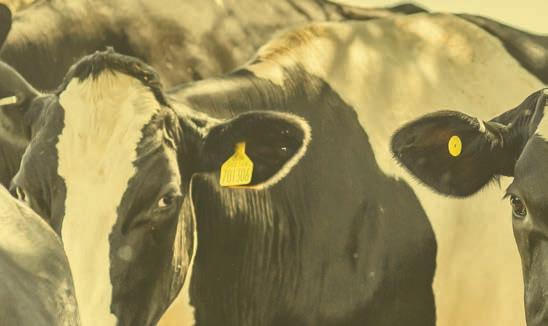

REDUCE YOUR COST ON THE ENVIRONMENT WITH DUYNIE


*Kg Co²e figures are based on a % inclusion of the dry matter intake. Kg Co²e figures used have been sourced from the GFLI. The calculation methodology is following the AIC GFLI calculator
For more info: 01977 516540 info@duynie.co.uk
Milk / h / d 30 Litres - Without Co-products 30 Litres - With Co-products Cost / h / d £4.47 £4.43 Feeds Global Warming inc LUC (kg Co²e/ton Inclusion Kg Inclusion Kg DM Kg Co2e/t product Inclusion Kg Inclusion Kg DM Kg Co2e/t product Grass Silage 330.24 22.00 6.75 112.00 20.00 6.14 102.25 Maize Silage 210.86 16.00 5.44 57.60 14.50 4.93 52.42 Barley 402.52 2.25 1.94 39.11 2.25 1.94 39.28 SBP 159.46 2.00 1.84 14.70 2.00 1.84 14.76 Soya Hipro (BR) 5326.56 1.25 1.10 294.21 0.75 0.66 177.27 Rapemeal 497.87 1.25 1.10 27.50 0.75 0.66 16.57 18% Compound 1187.88 2.00 1.75 104.38 2.00 1.75 104.83 Brewers Grains 5.20 0.00 0.00 0.00 8.00 1.92 0.50 Total 46.75 19.92 649.50 50.25 19.83 507.88 20% reduction in Co²e/t fresh TMR Nutrient Analysis Dry Matter (%) 42.6 37.9 M/D (MJ/kgDM) 11.9 11.9 NDF (%DM) 37.8 38.1 CP (% DM) 16.4 16.1 Starch & Sugar (%DM) 23.4 23.9 Oil (% DM) 3.17 3.62
www.duynie.co.uk
DAY PREVIEW
UK Dairy Day takes place on Wednesday, September 13, 2023, in Telford. In this special preview, Dairy Farmer takes a look at what is in store at this year’s event.
58
60
64
68
Countdown is on to UK Dairy Day
Now in its ninth year, UK Dairy Day will once again take place at Telford’s International Centre, where visitors will be able to visit trade stands, network, learn and take in all the showring action.
is free-to-a end dairy trade event has internal and external trade stand exhibitors, which include feed manufacturers, animal health suppliers, vets, milk buyers, dairy and farm equipment suppliers, plus professional service providers and charities.
A leading line-up of judges will cast their professional eye over the showring for the six dairy breeds competing under the spotlight.
In addition to the ca le classes, judged throughout the day from 9am, Holstein UK banners will be presented to the Premier Breeder and Premier Exhibitor of the show.
One of the a ernoon’s highlights in the ring is always the
presentation of the Holstein UK Premier Herd Awards, with the 2023 winner being announced, judged by last year’s winner Brian Moorhouse.
e full ca le show will be livestreamed throughout the day, with commentary for those unable to a end.
e rst oor of the venue features the Sharing Knowledge Zone, with industry panels and seminars.
Panels
ere will be four industry panels with leading industry representatives. e hour-long panels will run alongside four seminar presentations, with speakers covering key dairy industry subjects which inform the audience and create topical discussion.
e external areas at the International Centre will feature practical demonstrations on calf anatomy painting, as well as foot trimming and knife sharpening.
Cattle show judges
rNational Holstein Show: Iwan Morgan, Carmarthen
rNational Ayrshire Show: Colin Christophers, Cornwall
rNational Brown Swiss Show: Brian Weatherup Jnr, Fife
rDairy Shorthorn classes: Gwyndaf James, Ceredigion
rGuernsey classes: Colin Christophers, Cornwall
rJersey classes: John Waller, Cumbria
Scarsdale Vets, from Derbyshire, will present their demonstration using paint to visualise and understand calf anatomy. roughout the day there will be the ‘Beneath the Black and White’ calf painting and the Scarsdale Vets team will use paint to assist in the understanding of calf health and welfare.
Tim Carter returns with practical demonstrations on foot trimming, blocking and knife sharpening.
e quali ed team of independent foot trimmers will demonstrate that the key to the success of any task is having the right tools for the job.
e team will also highlight e Ca le Hoof Care Standards Board, a self-funding non-pro t organisation aimed at improving the health, welfare and mobility of the national herd by ensuring its members promote, achieve and maintain a recognised and
UK Dairy Day
rWhen: Wednesday, September 13, 2023
rWhere: The International Centre, Telford, Shropshire, TF3 4JH
rTickets: Entry and car parking are free; pre-registration is not required
validated standard of cattle hoof care.
Internally, by the Hall 3 ca le stalls, will be the National Bovine Data Centre (NBDC) Breed Village, where members of the NBDC classi cation team will run type classi cation and linear scoring demonstrations for the Ayrshire, Jersey and Holstein breeds.
In the concourse of the venue will be a showcase of new products exhibitors have launched in the past 12 months.
Finalists
ese products are the nalists for the UK Dairy Day New Product Competition, sponsored by IDEXX. e competition looks for the most innovative or in uential new products on the market and the shortlisted entries will be judged during the morning of the event by representatives from IDEXX, with awards presented during the a ernoon.
rPoints: UK Dairy Day is an accredited event with Dairy Pro for three CPD points and BASIS for two CPD points
rMore information: For additional details and to access the livestream, visit ukdairyday.co.uk

SEPTEMBER 2023 56 UK DAIRY
year’s speakers
SEMINARS This
NEW PRODUCTS Competition line-up
ENTHUSIASTIC Colin Christophers
JUDGES
will be centre ring?
Who
































PREVIEW UK DAIRY DAY
Cattle judging at last year’s UK Dairy Day.
UK DAIRY DAY PREVIEW
The UK Dairy Day industry panels and seminars will be held on the first floor within the ‘Sharing Knowledge Zone’, sponsored by Harper Adams University.
Timetable
10am - Seminar presentation
one: TBC
10.30am - Industry panel one: The Future of the Dairy Cow
11.30am - Seminar
presentation two:
NWF Agriculture
12pm - Industry panel two: The Future of Milk Pricing and Processing
1pm - Seminar presentation
three: AHDB
1.30pm - Industry panel
three: The Future of
Industry panels
10.30-11.30am
Industry panel one: The Future of the Dairy Cow, chaired by Grant Hartman, Tredersed Farms
Panellists:
rOwain Harries, general manager, Semex UK
rDan Humphries, director, Dairy Insight
rJohn Torrance, dairy farmer
rMeurig James, head of breed development, NBDC
rMarco Winters, head of animal genetics, AHDB
12pm-1pm
Industry panel two: The Future of Milk Pricing and Processing, chaired by Andrew Williamson, farmer and CIS chair
Panellists:
rChris Walkland, milk analyst/consultant
rPaul Savage, UK director of member and agri-commercial operations, Arla
rDiarmaid Mac Colgáin,
Dairy Day Sharing Knowledge Zone
the Dairy Industry
2.20pm - Seminar
presentation four: Lely
2.45pm - Industry panel
four: The Future of Your Dairy Business

founder and chief executive, Concept Dairy
rMatt Sheehan, principal consultant, Promar International
1.30-2.30pm
Industry panel three: The Future of the Dairy Industry
Panellists:
rJohn Powell, Defra
rRob Burgess, head of product, Mag of Ag
rMichael Smale, dairy farmer
rAmy Eggleston, dairy farmer
2.45-3.45pm
Industry panel four: The Future of Your Dairy Business, chaired by Roy Jackson, WR Partners
Panellists:
rHugh Pocock, director, Cultura Connect
rAdam White, head of agriculture, Barclays Bank
rJohn Allen, director, Kite Consulting
rMichael Oakes, NFU dairy chair
Type classification and linear scoring
JDuring the day, in the breed village by Hall 2, members of the NBDC Classification team will run Type Classification
and Linear Scoring demonstrations for the Ayrshire, Jersey and Holstein breeds, at 12.30pm and 2.30pm.
There will be four industry panels held on the future of dairy.
Grass clinic
JGrass breeding specialist
Barenbrug UK will run a drop-in ‘grass clinic’ at UK Dairy Day, encouraging farmers to be more ambitious about getting more from their grass.
The clinic will be located in the Newport Suite on the ground floor. It is open for anyone with a query about their grass to speak to Barenbrug’s grassland experts for insight and advice.
GB Calf Week 2023
JThis year’s GB Calf Week will be launched at UK Dairy Day with a series of on-farm and virtual events focusing on dairy-beef genetics and bovine TB set to take place.
The initiative, now in its third year, is part of the GB Dairy Calf Strategy, a cross-industry campaign spearheaded by AHDB and the NFU, and aims to ensure all dairy-bred calves are reared with care and for a purpose as part of either the dairy or beef supply chains.
Dr Jenny Gibbons, AHDB’s senior animal health and welfare scientist, said “This year’s GB Calf Week continues to champion progress being made in the dairy industry,
while providing farmers and their vets and advisors with the most up-to-date information that they can apply to their businesses.
“Sometimes, challenging the status quo is all that is needed to ignite a conversation, and often, this can lead on to significant changes.
“I believe that GB Calf Week can help everyone work together to come up with solutions.”
The week’s activities will kick off with a breakfast launch on Wednesday, September 13, at NFU’s stand, H119, on UK Dairy Day at 9am.
rFor the full programme of events visit ahdb.org.uk/ gb-calf-week-23.
SEPTEMBER 2023 58
PICTURE : Tim Scrivener

Five tips for maintaining maize quality from harvest to feed-out

To preserve as much quality in your maize silage as possible, Lientjie Colahan, technical sales support at Lallemand Animal Nutrition, recommends taking ve key steps.
Ensile correctly
1
When the plant reaches an average dry matter (DM) of 3035% it’s ready for harvesting: use the milk line on the kernel, and the leaves at the base of the plant as a guide. Consider the maize variety when looking at the leaves –stay-green varieties will do exactly that.
The milk line should be 1/3 down the kernel.




Create a barrier
2
Using a non-porous oxygen barrier lm under the top sheet instead of highly porous black plastic will help eliminate air pockets.
Use an inoculant


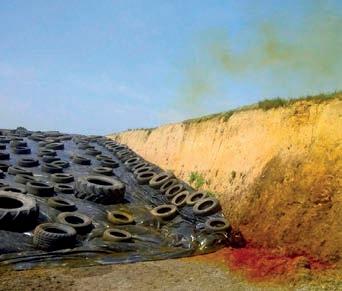
4
Keep an eye on the clamp
A good fermentation process can cause the silage sheet to blow up like a balloon.
3

The bottom leaves will start drying o / browning (except in stay-green varieties).


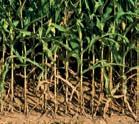








Using a maize-speci c inoculant, such as Magniva Platinum Maize, will optimise fermentation and help maintain stability throughout storage and feed-out, resulting in less heating and therefore increased feed value for the cow. It o ers a good return on investment, with estimates showing the cost of treating a 1,000-tonne clamp is the equivalent to the cost of growing 43 tonnes – this equates to 4% of the total amount of silage, which is less than a 10cm strip across a typical 2.2m x 50m x 100m clamp.
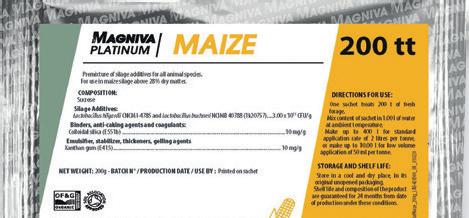
Once the sheet has settled, re-check any gravel bags, tyres or other weights to ensure everything is securely in place.
If a brown or orange gas seeps from the silage, don’t approach the clamp until this has disappeared – it may be highly toxic nitrogen dioxide gas.
5 Avoid losses at feeding
At feed-out, best practice is to remove one metre per week, crossing the entire face, to keep up with oxygen in ux into the silage.
In instances where getting across the face takes longer, taking half-shear grab depths will result in a more consistent feed.









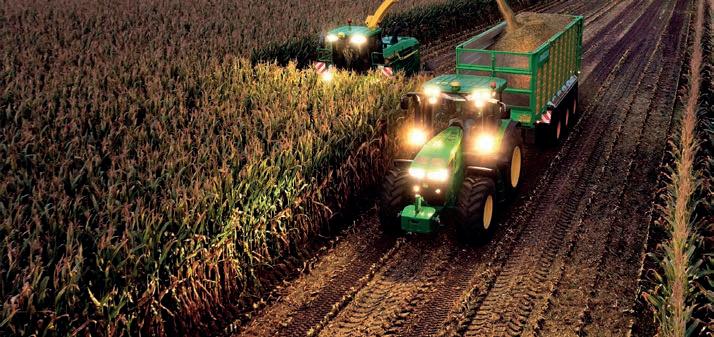

Scan the QR code to nd out more or call our friendly team on 07884 312 382 for further help and advice




Use a barrier lm
Beware of toxic
Compacting the clamp
gas
CONTROL OF QUALITY
Clamp the maize in tight, even layers and apply as much weight as possible when compacting the clamp.
TAKE
LALLEMAND ANIMAL NUTRITION n SPECIFIC FOR YOUR SUCCESS www.lallemandanimalnutrition.com +44 (0) 1684 580022
ADVERTORIAL
The UK Dairy Day new product competition is open to products which have been launched in the past 12 months. Dairy Farmer reports.
New products competition
The new product competition aims to highlight the most innovative or in uential new products on the market. e shortlisted entries will be showcased in the concourse of the venue and judged on the morning of the event by representatives of the competition sponsor IDEXX. e awards will be presented in the a ernoon.
Abbi-Apex 36-AXP-21 from Abbi-Aerotech B.V.
JThe Abbi-Apex 36-AXP-21 fan is designed explicitly for barns with lower ceilings. This is a smaller model of the XP fan family and uses only 5W/0.2A at its lowest speed setting (100rpm).
The fan is equipped with the same direct drive motor and controller technology as
the Abbifan 140-XXP-21. The orifice panel and the propeller are also manufactured using the same principles. The electronic converter comes with a two-plug contact connection for fast and easy installation of the supplied power and control cables.
rFor more details, visit Ludlow – Stand L24.
GEA F4500 from GEA Farm Technologies UK
JThe GEA F4500 automatic feeding system operates with bunkers and a robotic feeding machine. It uses navigation sensors to map the farm buildings to work out the ideal routes for distributing feed, and delivers feed directly to animals.

Tru-Test Dairy Walk Over Weigh 4000 from Datamars Livestock
JThe Tru-Test Dairy Walk
Over Weigher 4000 can be positioned in the parlour, for example, to take automatic weight records for cows on exit without the need to stop the animals on the platform.
The EID reader scans tags from one direction, ensuring readings are only taken when the cow walks over the platform, with weights sent automatically to
Datamars’ livestock software. The system operates via 4G, satellite or Wi-Fi and is transferred via mobile phone or through a PC running Microsoft Windows.
While it can be plugged into an external power source, it also has a battery which has a 15-hour run time for continuous use.
rFor more details, visit Hall 1 – Stand H153.
Dairymaster DM 3X+ from Dairymaster UK
JThe Dairymaster 3X+ parlour has been developed to meet the needs of large-scale dairy farms and its features have been designed to deliver equipment reliability, speed of operation and cow flow.
The new design of the low-profile bail divider on the DM 3X+ follows minimalistic design to expose only the
essential functions at the point of operation.
The bail incorporates Smart Switch, a traffic light-like system, where colours indicate various demands, which allows the operator to quickly select the action they need.
rFor more details, visit Hall 2 – Stand H236.
It can run for 18 hours a day and uses a docking station for recharging. The software synchronises feeding and milking data, allowing the farmer total control of all operations.
rFor more details, visit Hall 2 – Stand H222.
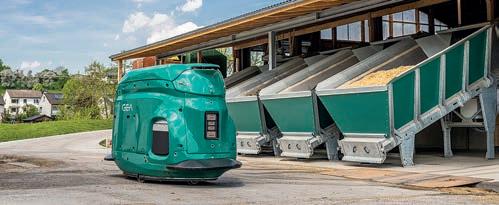
Dairymaster DairyVue360 from Dairymaster UK
JDairyVue360 is a farm management platform for recording, analysing and displaying milking data. It combines milk production data with herd fertility and health and third-party data to provide a holistic 360-degree view of farm operations. The DairyVue360 app allows the farmer to see real-time milking metrics, such as letdown
time, yield deviation, flow rates and incidence of bimodal flow. The personalised milking settings can be adjusted to optimise the milking process. It is equipped with the Dairymaster LiveVue touch-screen device which gives the farmer a picture of everything that is happening live in the parlour.
rFor more details, visit Hall 2 – Stand H236.
Continues over the page...
SEPTEMBER 2023 60
DAIRY
UK
DAY PREVIEW
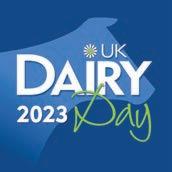
Come and talk to our expert nutritionists & play games to win fabulous prizes
® Come visit us at Dairy Day 2023 on 13th September
JOIN US FOR FRESHLY GROUND COFFEE & BISCUITS ON STAND H136
UK DAIRY DAY PREVIEW
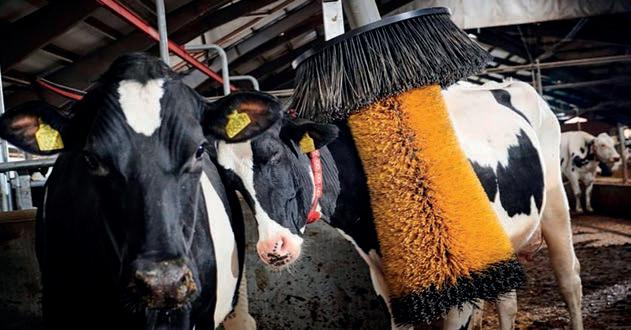
KVIA Molly Cow Brush from Tim Gibson
JThe Molly Cow Brush has been designed to groom intensively and in-depth. The round cone shape of the brush grooms each side and back of the cow, while the top brush grooms the head, back and tail area. The intensive brushing reduces the risk of skin conditions and produces a clean and shiny coat.
The brush is attached to a universal joint. It can groom more than one cow at a time and, after each start-up, the
brush changes rotational direction, which designers say will extend the wear and tear of the brush elements. Overload protection ensures the brush stops automatically if a cow tail becomes entangled in the brush. Made of stainless steel, it features a helical gear which drives the brush with 98% efficiency, resulting in a reduction in energy consumption.
rFor more details, visit Ludlow – Stand F2.
Hoofshield Advance from Neogen
JThe latest addition to Neogen’s hoof care products, Hoofshield Advance contains a combination of broad action disinfectant, surfactants and conditioners and a blue dye to clearly identify hooves which have had the product applied. It does not contain
formaldehyde, copper, glutaraldehyde or quaternary ammonium compounds, and it can be used to help reduce the risk of disease-causing organisms and the spread of bacteria in dairy herds.
rFor more details, see page 91, or visit Ludlow – Stand L10.
IDS Verify from Peacock Technology
JIDS Verify is an advanced vision-based system which integrates with radio frequency identification (RFID) systems to ensure accurate cow identification.
Using advanced machine learning technology, it cross-
Octaklean System from Kersia UK
JThe Octaklean System is a new comprehensive chlorine-free cleaning wash system suitable for any type of milking machine and bulk tank.
It is based on the use of a new chlorine-free caustic liquid, a BPR-registered acid
product and a final rinse of peracetic acid.
The system ensures a clean and disinfected milking machine and bulk tank, without issues relating to chlorates in milk.
rFor more details, visit Hall 1 – Stand H156.
Methane Efficiency Index from Semex UK
JThe Methane Efficiency Index can allow dairy farmers to factor methane into their breeding policy and move much faster to a lower methane herd.
Semex, in partnership with Lactanet in Canada, discovered the DNA profile associated with individual Holstein cow methane emissions.
As a result, an estimated breeding value for methane efficiency is produced for all females tested via Elevate, and farmers can select and use bulls to reduce future generations’ methane emissions.
rFor more details, visit Hall 2 – Stand H225.
SlurryForSoil from Sylgen Animal Health

references visual data and RFID tags, instantly correcting errors for reliable data.
It can also perform body condition scoring on individual cows.
rFor more details, visit Concourse – Stand F20.
JThe slurry inoculant SlurryForSoil contains a complex blend of 18 different plant growth promoting rhizobacteria and fungi and is the only slurry inoculant specifically formulated for soil and plant health. As well as all the usual benefits – making storing and applying slurry easier, quicker and cheaper – the microbes in the inoculant have been proven to retain and mobilise nutrients, improve plants’ stress tolerance, control pests and disease and bioremediation.
Last year, Duchy College
ran an independent trial comparing treated and untreated slurry.
Nutrient analysis of the slurry demonstrated that SlurryForSoil increased the retention of key nutrients, such as ammonium nitrogen, phosphorus, potassium and sulphur, as well as magnesium, copper, zinc and calcium.
Dry matter yields increased by 24.3% and quality indicators were also higher where slurry was pre-treated with the inoculant.
rFor more details, visit Foyer – Stand F14.
SEPTEMBER 2023 62


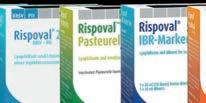









With you every breath of the way. Find out more Rispoval® RS+PI3 IntraNasal contains modified live Bovine PI3 virus, ts strain RLB103 and modified live BRSV, strain 375. POM-V • Rispoval® 2 contains attenuated BRSV strain 375 and PI3V ts strain RLB103 with an adjuvanted liquid fraction. POM-V • Rispoval® 3 contains modified live PI3 virus, strain RLB103 and BRSV strain 375 with inactivated adjuvanted BVDV type 1, strains 5960 (cytopathic) and 6309 (non-cytopathic). POM-V • Rispoval® 4 contains attenuated BRSV strain 375 and PI3V ts strain RLB103 with inactivated, adjuvanted IBR strain Cooper and BVDv Type 1 viruses cytopathic strain 5960 and non-cytopathic strain 6309 minimum. POM-V • Rispoval® IBR-Marker Inactivated contains inactivated gE negative BHV-1 strain Difivac. POM-V • Rispoval® IBR-Marker Live contains attenuated gE negative BHV-1 strain Difivac. POM-V • Rispoval® Pasteurella contains Pasteurella haemolytica biotype A, serotype 1 strain NL1009, together with an oil-in-water adjuvant. POM-V For further information please see the products’ SPC or contact Zoetis UK Ltd, First Floor, Birchwood Building, Springfield Dr, Leatherhead, KT22 7LP • www.zoetis.co.uk Customer Support: 0345 300 8034 or customersupportUK@zoetis.com • Use medicines responsibly (www.noah.co.uk/responsible). Date of preparation: July 2023. MM-27107 *The Rispoval range contains products for all life stages LIFELONG PROTECTION *
The Rispoval vaccine range from Zoetis offers immunity against the major causes of respiratory disease in dairy and beef cattle. So breathe easy, knowing you are helping your herd to be healthy and productive all the way to the finish line.
Judging the Ayrshire and Guernsey lines this year is Colin Christophers, whose Rosehill prefix is widely known among Ayrshire cattle breeders. Wendy Short caught up with him ahead of the show.
Milk from the 170-cow
Rosehill Ayrshire herd run by Colin Christophers and his family is turned into the internationally-renowned Rodda’s Cornish clo ed cream. ere is all-yearround calving on the farm, and turnout is usually from April until October on the 330-hectare (134-acre) Trenerry farm, near Truro. e cows spend the winter in the cubicle housing, receiving a simple mixed ration comprising grass silage and 2kg of a 25% protein blend across all groups, plus an 18% concentrate fed to yield in the herringbone parlour. e family relies mainly on selective breeding and high quality grass production to achieve the minimum bu erfat speci cation of 4%, with the actual gure currently standing at 4.43%. e average yield is 7,400kg, with protein at 3.47%.
Rosehill herd
e Rosehill herd was founded in 1962 with purchases from the dispersal of the Trevarno Ayrshires in nearby Helston. It is managed solely by family members; Colin, his wife Jenny, and their son David work full-time, while daughter Debbie and granddaughter Megan work part-time. ere is a long line of show champions in the herd history, but sadly the circuit had been out of bounds for about a decade due to bovine TB restrictions. at has all changed for this season, and by mid-July there were no less than four prestigious awards to add to the collection.
“We took a team to this year’s Royal Cornwall and came away with the Ayrshire champion and the breed reserve,” says Colin.
“Our champion was Rosehill
‘The Ayrshire breed has looked after our family’
Premier Very Light, a sixth lactation cow with an EX95 classi cation by our own bull, Rosehill Premier.
“Our reserve champion was Rosehill Panache Whisky, an in-milk heifer by Haresfoot Panache. He was a son out of Haresfoot Enigma Pamela; a female we purchased a decade ago and has served us well. Pamela is still in the herd at age 17 and we hope to be able to ush her again as we have in the past.
“Showing has always been a shop window for our ca le and a signi cant element of the business. It is also an important part of family life and everyone enjoys helping out.
“Nevertheless, show days are long days. As we have no sta , we get up very early and milk before se ing o , starting the second milking as soon as we arrive back home.”
Rosehill cows clinched the same titles at the Liskeard
Showing has always been [...] a significant element of the business
COLIN CHRISTOPHERS
Show this year, with top position awarded to Rhos Vicking Matilda, an EX94 fourth calver by De La Plaine Vicking. Meanwhile, the in-milk heifer, Rosehill Pink Indiana sired by Rosehill Pink Floyd, took the blue ribbon.
Genetics
Genomic testing has helped to increase the herd’s genetic progress and the gures for two young home-bred bulls are ‘equal to anything available on the open market’, says Colin.
ey are destined to enter an AI programme in the future, but 12 months bTB-clear status is required before their semen can be harvested. Natural service is used at intervals on the farm, which is rented on a council tenancy, in cases where a suitable match has been identi ed.
One of the young bulls is Rosehill Buckleup, a Whitecro Panell son out of Rosehill McCoy Bouquet. e other is Rosehill Valedictorian, a Haresfoot Panache son. Valedictorian’s dam is Rosehill Magic Oh Velour.

SEPTEMBER 2023 64 UK DAIRY DAY PREVIEW
PICTURES : Farlap Photography
Colin (left) and David Christophers.
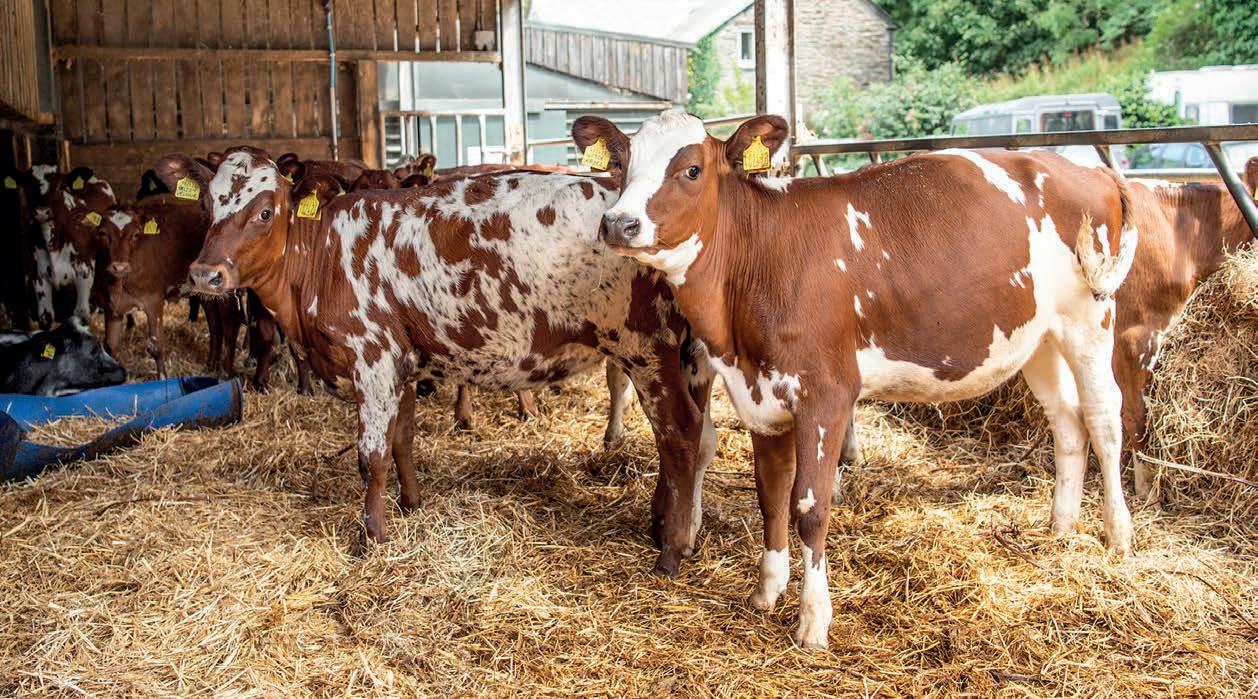

“Haresfoot Panache is the number one bull for bu erfat percentage within the breed,” says Colin.
“Like all livestock producers, we do not just breed for one trait, and although bu erfat is


important to meet the demands of our milk contract, we are also looking for sound conformation and high production potential.
“A sire’s country of origin is not as relevant as its suitability for our type of cow, but British
bulls seem to give us the best results. However, we have used semen from Scandinavia, Canada and the USA.
“ e biggest in uence on the herd to date is a bull that we bred at home. He is Rosehill
Blackthorn, who did a great job on the farm and produced 24 EX-classi ed daughters.
Blackthorn’s pedigree can be found in most of the ca le on the unit and he stood at stud.
“Prior to the herd losing its
TAKE CONTROL OF MAIZE SILAGE QUALITY



MAGNIVA PLATINUM MAIZE inoculants contain a unique combination of proven bacteria and enzymes providing complete exibility on clamp opening times, plus:


250
UP TO mj/t MORE energy
UP TO % MORE DM

Find
15 % LESS YEAST & MOULD 99
out more about MAGNIVA Platinum Maize
LALLEMAND ANIMAL NUTRITION SPECIFIC FOR YOUR SUCCESS www.lallemandanimalnutrition.com + 44 (0) 1684 580022
Inoculants
Most of the females in the herd are bred pure, with a small number bred to a beef sire.
UK DAIRY DAY PREVIEW
bTB-free status, a number of cows were ushed, with several of our bulls going into AI programmes.”
Milk targets
Many years ago, Colin set a target to breed cows which would give 100,000kg of milk from the standard diet over 10 lactations. is goal has been achieved on two occasions, and the successful cows have multiple progeny in the herd. Although, bTB has inevitably had a negative e ect on longevity.
“I felt that I was being extremely ambitious with my target for the cows, but these two animals have shown us it is within our capabilities and that is very encouraging.
“When it comes to bulls, a PLI of £150 is a minimum, with plus gures for milk, bu erfat and protein. AI sires must also be ‘type improvers.’
“ e genomic data for the
Ayrshire is a ected by the relatively low numbers within the breed, but registrations are holding their own and several new breeders have come on board in recent years. ere is also a growing interest in milking multibreed herds, and the Ayrshire has bene ted from the trend.”
e vast majority of females are bred pure, but a small number will go to either the British Blue or the Aberdeen-Angus. eir calves would historically be sold at about four weeks and this policy has been reintroduced now that bTB restrictions have been li ed.
Ca le judging is a ‘thoroughly enjoyable pastime’, says Colin, who has o ciated at many events including the Royal Highland and the Royal Welsh, as well as at Balmoral Show, Agri-Scot and numerous county-level events.
He is also familiar with the Jersey and there are a few
examples of the breed at Trenerry, while his father, Redvers Christophers, kept Guernseys alongside the family’s Ayrshire cows.
Stockjudging
“My interest began at the age of 12, when I joined the dairy stock judging training classes at my local Young Farmers Club. Nowadays, the roles have been reversed and I am the coach for the same training sessions.
“Stockjudging has taken me all over the country and I derive great pleasure from my appreciation of cows, regardless
of breed. Judging is one of the few occasions when the only person I have to please is myself.”
Asked whether he would consider switching breeds, Colin’s answer is emphatic.
“De nitely not. I was brought up with Ayrshires; the breed has excellent conformation when it comes to udder, legs and feet and it is also easily managed, with bags of style and plenty of ‘get up and go.’
“ e Ayrshire has looked a er our family and we enjoy looking a er our cows,” he says.
Methane production from slurry
JA 2021 project at Trenerry saw the installation of equipment which converts methane from the covered slurry tank into electricity to power the milking parlour. The council tenancy has also led to a link between the organisation and the farm, with methane refined and collected on a weekly basis. It is used to run 13 council-run, road service vans, as well as heating tarmac for road surfacing.

When asked if he would consider switching breeds, Colin Christophers says ‘Definitely not – I was brought up with Ayrshires’.

SEPTEMBER 2023 66
MILK IT OmyaFeed C MgO
and make the most of the rumen buffer that gets the job done
Maximise milk yield without the risk of SARA with OmyaFeed C MgO, a palatable rumen buffer made from nely ground natural minerals. It can be used as a preventative or curative solution for SARA in high-yielding dairy cows fed a high starch, low bre diet.
Just 130g of OmyaFeed C MgO per cow per day is required for effective rumen health, compared with more than double the amount of sodium bicarbonate/calcium carbonate mix. This saves money and creates space in the ration for further feed materials. OmyaFeed C MgO is very cost effective at just 7p/cow/day.
To nd out how you can milk the advantages of OmyaFeed C MgO, contact: David Bonsall on 07773 180664 or email david.bonsall@omya.com.

MAXIMUM MILK YIELDS WITH NO RISK OF SARA MORE SPACE IN THE RATION JUST 7p PER DAY, PER COW.


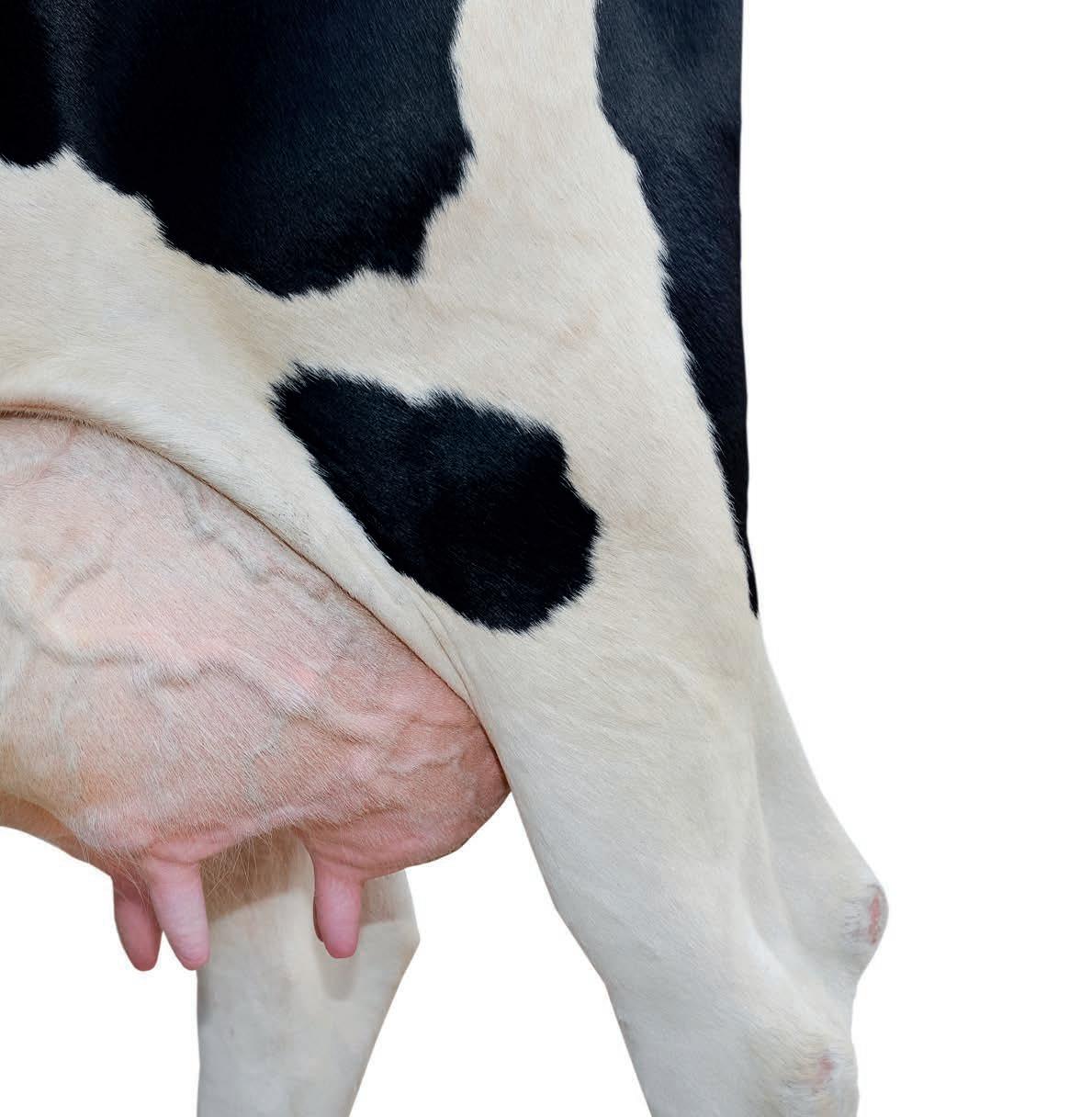

MAINTAINING HERD HEALTH FOR A MORE PRODUCTIVE WORLD
This year’s UK Dairy Day will see five cattle breeds take to the ring, with three of these breeds hosting their national show at the event. Dairy Farmer looks at the profiles of the cattle show judges.
Meet the cattle judges
The National Brown Swiss Show
Brian Weatherup Jnr
J UK Dairy Day will welcome Brian Weatherup Jnr as the judge chosen by the Brown Swiss Cattle Society for its National Show.
Brian, of the Parkend herd, Fife, runs the family farm with his parents and wife Gillian. They milk 220 pedigree cattle with a focus on proven genetics, aiming for exceptional udders and feet and legs, always pushing for high-yielding, long-lasting cows. The herd won back-to-back Scottish herd competitions in 2020/2021.

Dairy Shorthorn classes
Gwyndaf James
JGwyndaf James has been involved with agriculture since leaving school and getting involved in his family farm with a herd of Dairy Shorthorns and Holstein Friesians.
The family started showing Shorthorns in 1973, winning

at the Royal Welsh Show on numerous occasions, breed champion at the Royal Show in 1980 and reserve in 1987, as well as many county and local shows.
Being a member of the Shorthorn Society, on the breed council for more than 25 years and on its judges panel since 1993, Gwyndaf has judged many local and county shows.
He has judged the All Breeds All Britain Calf Show, the World Conference Show at the Royal Highland Show, the National Dairy Show at Cheshire County Show and the National Show held at the Great Yorkshire.
The National Holstein Show
Iwan Morgan
JSouth Wales dairy farmer Iwan Morgan has been appointed as the judge of The National Holstein Show. Iwan and his father Edward run the Erie herd of 150 Holsteins and 30 Jerseys.
The grazing herd, based near Carmarthen, is well known nationally, with prominent cow families such as the Lustres, Supreme Maudes, Roxy Reds and Gold Barbaras.
The Morgan family has had great success over the years, twice winning Holstein UK Master Breeder Award and achieving more than 20 wins in the Holstein UK All Britain Awards.
Jersey classes
John Waller
JJohn Waller farms in partnership with his father Robert on a pedigree dairy and sheep farm of 162 hectares (400 acres) in Killington, down the Lune Valley, between Sedbergh and Kirkby Lonsdale.
On their family-run farm they have 100 Holsteins and 60 Jerseys under the Killington prefix and 400 commercial sheep.
John’s wife Kate and daughters, Sophie and Natalie, have been the main driving force behind the Jersey herd, first founded in 2002.
The Waller family has enjoyed successes at local


shows and John has judged Jerseys at shows across England, including the Great Yorkshire Show.
He is the current secretary and a previous chair of the Lakes Counties Jersey Club.
For a feature on the National Ayrshire Show and Guernsey judge, Colin Christophers, see pages 64-66.
SEPTEMBER 2023 68 UK DAIRY DAY PREVIEW










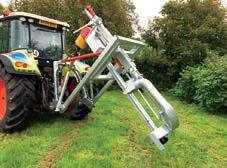










SEPTEMBER 2023 69 PREVIEW UK DAIRY DAY Electric 2 & 3Point Linkage Static Our pump range mainly consist of our Superjet pumps, which are all designed to pump/agitate slurry in underground tanks/lagoons offering high fluid transfer rates. We offer static electric pumps, PTO-driven static along with 2-point and 3-point linkage pumps Spread-a-Bale ® Tube You VISIT OUR WEBSITE FOR MORE INFO WWW.SPREAD-A-BALE.COM GET IN TOUCH T: 01244 394258 - Office M: Dave Bull - 07904 899289 E: sales@spread-a-bale.com FOLLOW US MADE IN GREAT BRITAIN • No chopping, saves straw and lowers dust levels • Spreads any bale in under one minute
Self-loading, requires only one tractor / loader
Improves both efficiency and profitability Come and have a chat to us about our range of machines Optional HD available providing 70% more torque to manage this season’s high density, hard and difficult bales Wed 13 Sep Stand no H103 We’ll be exhibiting at
•
•
A leading line-up of judges will cast their professional eye over the showring for the six dairy breeds competing under the spotlights at this year’s event.
SHOW PREVIEW
Dairy producers will be making their way to UK’s dairy heartland as The Dairy Show returns to the Bath and West Showground in Somerset on Wednesday, October 4, 2023.


The Dairy Show’s theme this year will be carbon, with the focus not only on how producers can reduce their carbon footprint, but also how they can capitalise on this natural resource.
Farm Carbon Toolkit, Trinity Ag-Tech, Mole Valley Farmers and Bennaman will be joining producers in the seminar tent.
Remaining at the show’s heart are the dairy ca le, with exhibitors travelling from all over the country to compete in a variety of breed
Dairy Show
rWhen: Wednesday, October 4, 2023
rWhere: The Bath and West Showground, Shepton Mallet, Somerset, BA4 6QN; gates open at 8.30am
rTickets: Advance tickets are available at £17 per adult,
Important fixture on dairy farming calendar
classes, before respective champions go head-to-head for the sought a er supreme champion title.
e Dairy Show will also be hosting the Jersey Ca le Society of the UK and the English Guernsey Ca le Society’s National Shows.
Jess Chiplen, head of shows
increasing to £20 on the gate; students, with proof, will have discounted entry at £15 and children under 15 years old will have free entry; parking is free.
rMore information: For additional details, visit bathandwest.com
for the Royal Bath and West Society, says the event is as important to the dairy calendar as ever.
She says: “Dairy farmers continue to experience the e ects of global events, and are certainly being challenged by the disparity between input costs and a falling milk price.
“
ere remains a lot of pressure on producers and it does require more robust action from Government and industry.
“But it is also clear that the sector is resilient and determined; it continues to develop pioneering solutions to tackle climate change and biodiversity loss, and importantly, the solutions can support our worldclass farmers in being productive, pro table farm businesses.
“It is a privilege to be able to bring together like-minded producers and allied industries.”
e society is very pleased to be welcoming everyone back to the show, adds Ms Chiplen.
She says: “We are equally looking forward to celebrating the best in British dairying at the Dairy Industry Dinner, taking place on the evening before [October 3].”
Jack Cordery, chief executive of headline sponsor Mole Valley Farmers, says: “We are delighted to continue our long-standing association with e Dairy Show as headline sponsor.
“For more than 40 years the event has showcased the dairy industry and championed the sector.”
DAIRY
70 SEPTEMBER 2023
Last year’s Dairy Show drew impressive crowds.







71 Providing Farmers With Peace of Mind EASYFIX provide an extensive range of Dairy Housing Solutions Flexible Cow Cubicles Cow Mattresses Parlour Matting Slurry Treatment & Management Systems Feed Rail Our Solutions are Grant Approved & We provide Dairy Housing Design Call us for a Free Quotation Stop by and say hello at UK DAIRY DAY 07985 602767 www.easyfix.com SEPTEMBER 2023
The Dairy Show is a popular event with the Bennett family who have exhibited their Lilylane herd there over the years and are anxiously waiting for a clear TB test before this year’s show. Marianne Curtis reports.
Lilylane success at Dairy Show
The Dairy Show is right on the doorstep for the Benne family, who farm at Slade’s Farm, Templecombe, Somerset.
is is just one of the reasons why the event is one of their favourite shows to a end, says Karen Benne , who farms with her husband, Les, and son and daughter, Michael and Alison.
Karen says: “ e organisers always make us feel so welcome and, as it is a one-day show, we can go the night before and then go home the next day, meaning there is less pressure on the people at home doing the work.”
e family, who run a milking herd of 153 cows, comprising mainly Holsteins plus 19 Brown Swiss and 14 Ayrshires, have had good results at the show.
Last year they exhibited the
Farm facts
r153 cows in the milking herd, plus 108 followers
r85 hectares (210 acres) owned, plus 47ha (116 acres) rented
rThe milking herd is mainly Holsteins, plus 19 Brown Swiss and 14 Ayrshires
Ayrshire heifer, Lilylane Magic Hawaii, which came second in the in-milk Ayrshire heifer class. It had previously taken the reserve champion ticket at the Royal Bath and West Show earlier in the year.
Cancourt Welk
And they won the any other breed senior cow class with the Brown Swiss h calver, Cancourt Welk, at last year’s Dairy Show. e make-up of the herd is a

rHerd averages 9,000 litres at 3.4% protein and 4.3% fat
rThe herd calves all year round, with a calving index of 405 days
rMilk is sold to cheesemaker A.J. and R.G. Barbers
re ection of the interests of the family members – Les has always favoured Holsteins, with notable purchases being Aquila E e and Vanessa, as well as Springfarm Kelly; Alison likes Ayrshires; and Michael the Brown Swiss.
e Benne s bought the herd’s Brown Swiss element from Michael and Jennifer Hussey’s Cancourt dispersal sale in August 2018 at Cirencester Market.
Karen says: “We bought Shelby, Sheila, Samba, Silk and Solitaire, which are all descendants from Cancourt Sadie.
“We were lucky enough to privately buy a further nine Brown Swiss – two from the Priscilla family; Pepperpot and maternal sister Peppermint.
“Peppermint won the third calved class, any other dairy breed champion and reserve inter-breed champion at the Royal Bath and West Show last year. We also purchased a Jasmine and a Bracken from the Jade family.”
Cancourt Solitaire VG86, a heifer purchased at the dispersal sale, calved a bull calf in March 2019.
Michael took her to Gillingham

and Sha esbury Show, where she won her class and reserve champion in 2019.
Karen says: “She also went to e Dairy Show that year, won her class and took breed champion, with Michael Hussey there to see the judging.”
Averages
e herd averages 9,000 litres at 3.4% protein and 4.3% fat, with a somatic cell count of 175,000.
Karen says: “We have been up to 11,000 litres, but when we were pushing them to this level everything was on a knife edge.
“Over the past seven or eight years we have taken the pressure o and it is be er for the cows and us.”
Yield has dropped but fats and proteins have risen. All milk from
Over the past seven or eight years we have taken the pressure off and it is better for the cows and us
KAREN BENNETT
SEPTEMBER 2023 72
DAIRY SHOW PREVIEW
Lilylane Fever Effie 88.

the year-round calving herd goes to cheesemaker A.J. and R.G. Barbers, based in Ditcheat, Somerset.
Karen says: “ ey sell the cheese based on the fact that it is made from milk from grass-fed cows.”

Cows are housed on sand-bedded cubicles and milked twice a day through a 30:30 Westfalia parlour. ey are vaccinated against BVD. e farm never had a problem with rotovirus until winter 2021; it may have been brought-in with ca le purchased in June 2019, says Karen.
“We now vaccinate with Bovigen Scour at drying o , also giving ca le a trace element bolus and pour-on wormer. Foot trimming is carried out once a month by a local foot trimmer and all heifers coming into the herd usually have their feet trimmed about 60 days a er calving.”
e Benne s grow three-year

SEPTEMBER 2023 73
The Lilylane herd is mainly Holstein, but also contains some elements of Brown Swiss and Ayrshire.
DAIRY SHOW PREVIEW
grass/red clover leys, 23.5 hectares (58 acres) of maize and have no permanent pasture.
Karen says: “We do not grow maize on the rented ground because if it was a wet autumn, we would never get it o .
“We have grown wholecrop [barley, peas and vetches], which helps open up compaction on these potentially wet soils. We direct drill ryegrass/red clover leys on wholecrop stubble and always drill grass seed at a higher rate than seed houses recommend, to control weeds.” is year, the cows went out to graze on February 22. However, they were back in by March 9 due to poor weather. ey went out again on April 20.
Paddock grazing
Karen says she hopes the stale group will be able to stay out until October. Grazing is on a paddock-based system.
She says: “We have had enough rain to keep the grass growing this season. Last July and August were so hot that we were keeping cows in during the day and turning them out at night when it was cooler.”
Silage was also exceptionally early last year, with rst cut on March 31. is year it was on May 15.
Karen says: “Cows graze most
of the ground. We take 40ha of silage from the rented ground. Since the rst week of July we have been bu er feeding from 48ha of silage we cut at the end of June. Cows have it before they go out.”
Winter feeding
Winter feeding is aimed at simplicity, says Karen.
“We have not used blends or soya for a few years. We use a 50:50 split of maize and grass silages, wholecrop and molasses from the wagon and feed cake in the parlour.”
Not pushing cows so much has led to fewer sets of twins and be er conception rates, says Karen.
“We have had fewer sets in the past 12 months. When we were pushing the yield we would have 18-20 sets a year. Too many sets make cows more di cult to get back in-calf. However, we have noticed the Brown Swiss seem to get back in-calf quicker than other breeds a er having twins.”
e herd’s calving index is 405 days and the family focuses on breeding functional cows.
Karen says: “We like to breed a cow which is not too big, stays sound and gets back in-calf. Big is not always beautiful. Legs, feet and udders are paramount. “It does not ma er how good


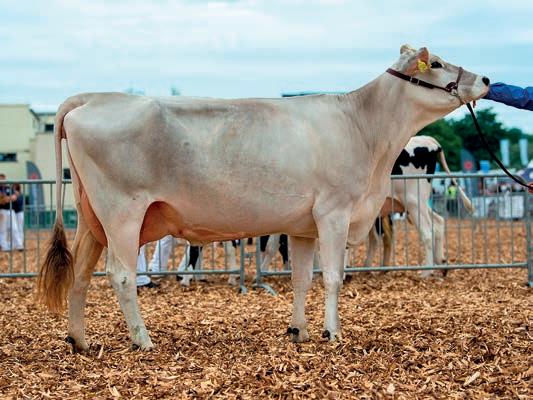
a cow looks – if she cannot walk she will not last.”
Cows and heifers of any of the three breeds on the farm which are scored 88 points or higher are bred pure, with the rest going to a Limousin bull.
Karen says: “We only used sexed semen twice on a cow or heifer. If it does not hold, it goes to beef bulls.”
Ayrshire bulls nding favour on-farm are Marlie Autograph and Bieryside Hail. For Brown Swiss, it is Aldo, Binam and Ronaldo.
Karen says: “Holsteins bulls we are using include Ryder Red, and we will still use Pepper until
It does not matter how good a cow looks – if she cannot walk she will not last KAREN BENNETT
we cannot get him any longer.”
With e Dairy Show set for October, all that remains for the Lilylane herd is to take pride of place.
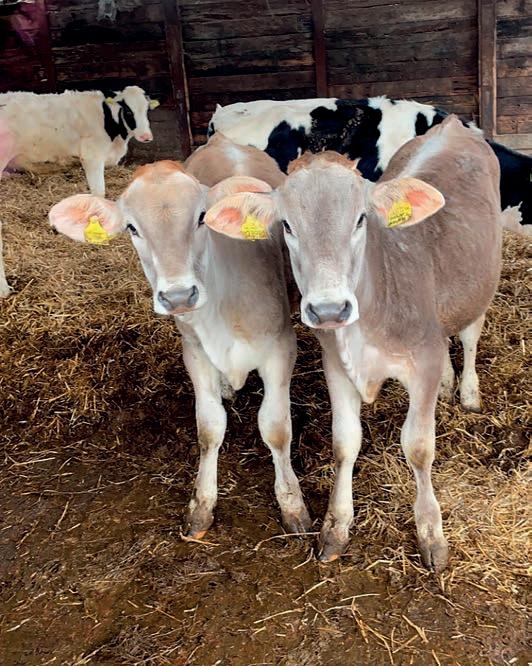

The herd’s calving index is 405 days and the family focuses on breeding functional cows.
SEPTEMBER 2023 74
Reserve inter-breed dairy and Brown Swiss champion at last year’s Royal Bath and West Show, Cancourt Peppermint 3 PI.
Cows are housed on sand-bedded cubicles.
Accelerated genetic progress with the most fertile sexed semen available?

That’s Sexcel®. That’s Genus ABS.
Call us today on 01270 616681 or scan the QR code to discover how to profit from genetic progress
www.absglobal.com/uk
Last year’s Dairy Show Holstein championship was won by Olly Reed. His Beaconhill herd had made a name for itself on the show circuit with cows that perform as well in the commercial herd as they do in the show ring. Natalie Noble reports.
The Beaconhill herd at Frances Farm near Cullompton, Devon, is a 170-cow pedigree Holstein dairy operation averaging daily yields of 41kg/cow at 3.4% protein and 4% bu erfat.
Olly Reed heads up the dairy operation on the mixed farm, with staunch support from his wife Becca and his mother Wendy, while his father Andrew concentrates on forage management, driving the wagon, and the farm’s pedigree Su olk sheep.
On the dairy front, Olly also has assistance from one full-time member of sta , Poppy, and one student, Daisy, who works weekends and holidays.
Olly’s interest lies in breeding, using his eye to assess and select individual cows while choosing sires on type. He believes this has been the best strategy for his herd.
It is clearly paying o ; his accolades include breed champion, inter-breed champion, and reserve inter-breed titles across regional and local shows. Last year, the herd took the Holstein breed title at the Dairy Show with Beaconhill Kingpin Paula. Olly has also had a collection of successes with Holstein UK’s herd competitions, as well as being a 2022 BDF Gold Cup nalist.
Beaconhill Holsteins taking the honours in the showring
Olly and Becca have, in a relatively short space of time, built a strong reputation for producing high quality breeding stock. Longevity and performance are as central to their purpose as bloodlines. So – how has the herd evolved?
Olly rst registered cows under the Beaconhill pre x in 2010. is was two years a er returning home to the farm and initiating the transition from a ying herd to a closed herd; an idea driven by a growing interest in breeding and wanting to produce his own replacements. By 2014, Olly had started classifying and monthly milk recording. In 2015, he had his



rst serious outing in a Holstein class with Beaconhill Seagual Zwollenaar at the Devon County Show, winning the breed class. Importantly, it was also the year he met his wife – a pedigree Holstein breeder herself.
Investment
Change was also well underway in terms of infrastructure at Frances Farm. e largest investment was in 2016 when the family invested about £350,000 in switching from a 12:12 herringbone parlour to a
housed robotic system, complete with three A4 Lely robots. Olly says he favours the big, powerful Canadian-style cow. In 2017, Olly purchased his rst pedigree heifer, Dulais Dorman Rae 2, and over the past eight years, the couple have brought in 10 to 15 family lines. ese include Rae, Rachael, Bridget, Ambrosia, Savoirefare, and Ricki. eir focus is mostly on breeding, so purchasing is a means of building on pedigree lines.
Now, they buy one or two


SEPTEMBER 2023 76 DAIRY SHOW PREVIEW
FOR SOLID FLOORS
GROOVES DIAMOND CUT
DEEP GROOVES
SLAT
The Reed family (left to right): Olly, Becca, baby Eloise, Wendy and Andrew.


I am more selective and look at pin height, leg confirmation, chest width, and udders
OLLY REED
animals a year, typically at eight to 12 months old, from trusted breeders with high health herds.
“I want power and strength, chest width and a good underneath – I want stylish calves but I want them wide,” says Olly.

“I do not look at PLI or geonomics - I trust my eye and what I am doing enough to back myself.”
Trust
When it comes to bull selection, he follows a similar line choosing on type and trust rather than geonomics.
“In the early days, I was breeding for frame and for numbers, so my strategy was simple; an extreme bull went on a non-extreme cow, and a non-extreme bull went on an extreme cow.
“Now, I am more selective and look at pin height, leg con rmation, chest width, and udders.”
He serves selected cows to sexed Holstein semen two to three times, with the rest served to triple sire beef (Angus, Wagyu and British Blue). Conception rate to rst service is 38% and pregnancy rate – excluding barren cows – is at 22%.
Cows are dried o at 60 days pre-calving; Olly aims for yields and somatic cell counts to be below 25kg/day and 150,000 respectively.
All calves are le with their dam for six hours, given colostrum and reared on milk powder through automatic feeders until 10 weeks old. ey are grazed the following season, with an autoworm bolus covering them over the grazing period.
e Reeds select and breed replacement heifers at 13 to 15 months old, with age at rst calving about 24 months. e
































SEPTEMBER 2023 77
e icacy against specific organisms responsible for digital dermatitis
hoof conditioning
from formaldehyde, copper, glutaraldehyde and quaternary ammonium compounds NEW field-proven and cost-e ective foot bath formula Come and Visit Neogen® at UK Dairy Day 2023
13th September Ludlow | Stand No. L10
up for your FREE bandage sample and learn more today Join Neogen EMEA – Animal Safety & Genomics
PREVIEW DAIRY SHOW Stay a Step Ahead with Hoofshield Advance Proven
Excellent
Free
Wednesday
Sign
Beaconhill Kingpin Paula 2 was Holstein champion at last year’s Dairy Show.
DAIRY SHOW PREVIEW
replacement rate currently sits at 16%, with surplus heifers sold and beef calves reared as stores and sold at market.
Herd health
Herd health is impressive, with lameness si ing at about 15 cases across the herd over the past year, and mastitis at 4.5 cases per 100 cows.
e couple use conductivity and rumination data for early detection, and respond with uddermint and an anti-in ammatory in the rst instance.
A herd health plan sees all stock vaccinated against Infectious Bovine Rhinotracheitis and Bovine Viral Diarrhoea (BVD) with Johne’s tested quarterly, and stock are BVD tag and tested.
Antibiotic usage is now 10mg/PCU, which is down from 19mg/PCU in 2018. Olly credits early detection, a stringent health plan, and a ention to detail for this decrease.
Reaching a point where the animals are achieving very good (VG) and excellent (EX) at classi cation, the couple want to continue to develop a wider market for their pedigree herd, using shows and ‘spotlight’ pedigree sales to advertise and build on their reputation.
Olly says: “Last October, we sold 18 bulling heifers, with 12 more sold a couple of weeks ago, solely to the commercial breeding market. We are a commercial pedigree herd selling predominantly to the commercial breeding
Beaconhill herd competition highlights
2015
rReserve interbreed champion heifer with Beaconhill Seagual Zwollenaar at Devon Country Show
2017
rExhibitor-bred heifer champion at Devon County Show
rReserve champion and junior champion at Mid-Devon Show with Beaconhill Windbrake Annie
2018
rInter-breed champion at Devon County Show, and reserve inter-breed champion at Mid-Devon show with Beaconhill Daryl Corrie
rInter-breed champion at Honiton Show with Beaconhill Windbrake Annie
2019
rAll Britain nomination with Beaconhill Daryl Corrie, and exhibitor-bred champion with Beaconhill Windbrake Annie in Devon herds competition
2021
rExhibitor-bred cow with Beaconhill Solomon Foxy
and first place in small herd categories for inspection, inspection and production, and genetic merit, in Devon herds competition. Qualified for regional round
2022
rAll Britain Nomination with Beaconhill Solomon Foxy and Beaconhill Kingpin Paula
rWon five out of nine classes at the Devon Herds winter competition, including champion exhibit
rWon first place at the summer competition in small herd categories for inspection, and inspection and production, with herd qualifying for the regional round
rInter-breed champion with Dulais Dorman Rae 2 and honourable mention for Beaconhill Fitz Harriet at Devon County Show
rReserve inter-breed champion with Dulais Dorman Rae 2 at Royal Cornwall show
rInter-breed champion with Beaconhill Fitz Harriet, and reserve inter-breed heifer champion with Beaconhill
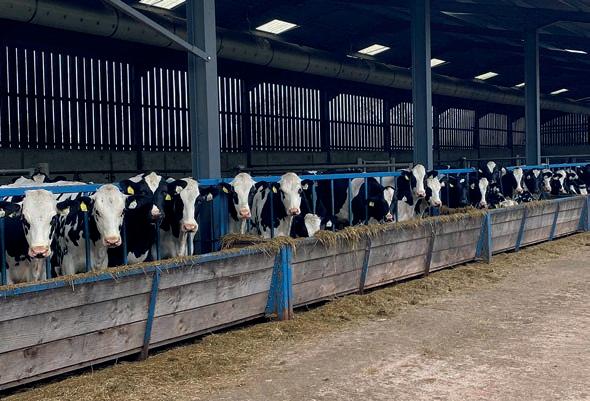

market – and that is limiting.
“I am selling really good cows, but I cannot sell my best; to me, they are worth more than the commercial value.
Sidekick Vouge at Honiton Show
rBreed champion with Beaconhill Kingpin Paula and first place milking heifer with Beaconhill Sidekick Vouge at Dairy Show
rRABDF Gold Cup finalists
2023
rAll Britain nomination with Beaconhill Kingpin Paula
rWon five out of nine classes at Devon Herds winter competition, including champion exhibit with Beaconhill Victor Laurel
rWon first place at the summer competition in small herd categories for inspection, inspection and genetic merit, and inspection and production, with herd qualifying for the regional round
rBreed champion with Beaconhill Solomon Foxy at Mid-Devon show
rInter-breed heifer champion with Beaconhill Crown Royal Janet, reserve breed champion with Beaconhill Sidekick Rae and honourable mention with Beaconhill Victor Laurel at Honiton Show
“Going to the shows and sales, it is just about ge ing our name out, and hopefully people can realise that we have got some decent stock about.”
TMR and grazing
rFed a Partial Mixed Ration, cows consume 48kg (freshweight) which contains 5.5kg of concentrate and covers the first 31 litres of milk yield
rCows are also fed concentrate in the robots; up to 9.5kg for cows giving over 55 litres
rAll milk is supplied to Crediton Dairy on a straight liquid contract
rMilking cows: 60:40 ratio of grass and maize silage plus 0.5kg straw, 3.75kg blend (27% CP), 2.5kg caustic (soda) wheat, 0.35kg palm oil free fat supplement, 0.15kg dairy mineral, 0.1kg urea, and 0.05kg (50g) of yeast
rDry cows: 10kg maize silage, 5kg grass silage, 5kg straw, 2kg blend, 0.15kg dry cow mineral, 0.15kg magnesium
rAt drying off, cows are given a trace element bolus
rDry cows and in-calf heifers are grazed over the summer before being transitioned onto the dry cow diet 3-4 weeks pre-calving
SEPTEMBER 2023 78
Olly and Becca Reed have built a strong reputation for producing high quality breeding stock.
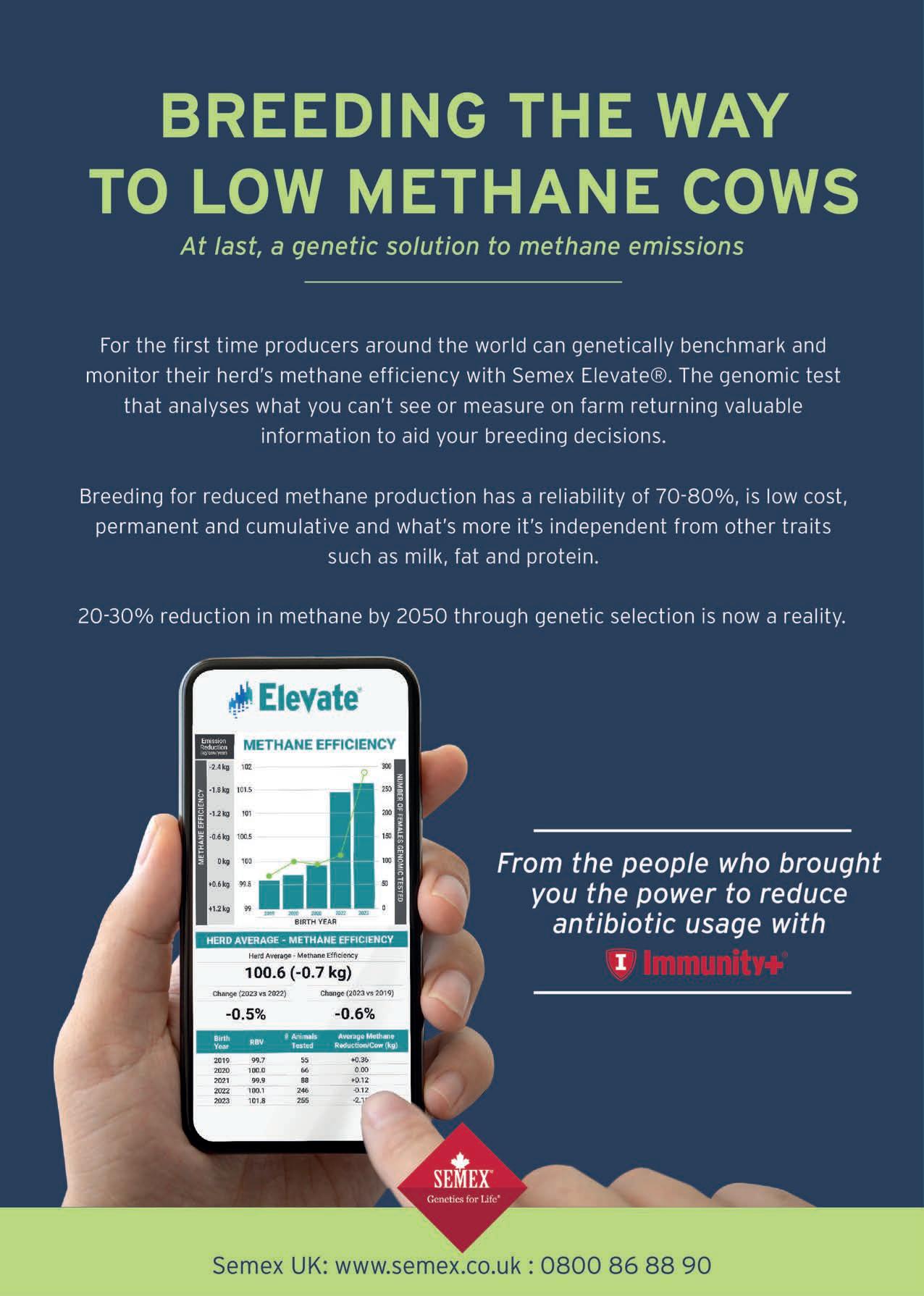
Mixing and relocating feed closer to the barrier to improve feed uptake and increase milk yield are the objectives of DeLaval’s OptiDuo. Toby Whatley visited a dairy running two units delivering feed for its 110 cows.
Remix and refresh
Home Farm at Lackham College, near Chippenham, Wiltshire, operates a fully automated 110cow dairy, using two DeLaval V300 robotic milkers, a robotic scraper and two OptiDuo feed pushers, alongside a separate 80-cow conventional 16:16 herringbone parlour.
Set up and installed by T.H. White Dairy in 2020, the robotic unit o ers a practical education resource for students alongside manufacturer training, with a dedicated classroom for automated milking machinery.
Launched in 2018, the OptiDuo feed-pushing robot from Swedish manufacturer DeLaval has been developed to mix and move feed towards the feed barrier.
e approach di ers from other designs which sweep the fodder, with DeLaval claiming these designs
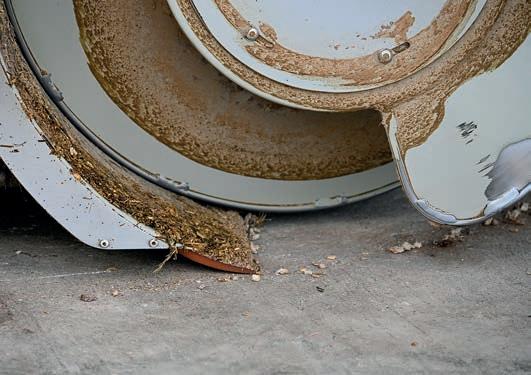
do not remix any dried material, making it less palatable to cows, and do not account for any losses in the mix through browsing.
e ba ery-powered unit follows a tracer wire buried in the building oor and uses a twin-spiral front auger which collects the feed and transfers it across the working



width before depositing it against the feed fence.
e feed pushers were installed at Lackham in mid-2021 to operate on either side of the cubicle building, with each unit covering about 175km/year on each of the 54-metre feed fences.
Herd manager Richard Ingram says: “ e robotic feed-pushing system matches the ethos of the building and gives cows consistent access to the feed 24 hours a day.”
A fairly diverse total mixed
ration, consisting of crimped maize, soyameal, rapemeal, straw, grass and maize silage, is delivered daily on either side of the building with each robot pushing up six times per day. e operation of two pushers for the feed area at Lackham would be possible with a single machine. However, the building has been established with the capacity for expansion of the unit or utilising the robots on other parts of the site.
During each pass, the robot moves incrementally closer to the fence across four di erent positions to deliver a uniform feed quantity and reduce browsing through the ration.
Fewer runs
Mr Ingram says: “When they were rst installed, the units had fewer runs per day, but we have increased the number of passes to improve cow movement and encourage them to visit the parlour more frequently.”
Currently, cows are visiting an average of 2.7 times per day, yielding an average of 33 litres over a 200-day


SEPTEMBER 2023 80 MACHINERY
A wearing edge scrapes the floor and forces material into the auger.
Automatic charging is provided from a wall-mounted station.
Wires buried under the concrete guide the OptiDuo around the yard.


During the last two years at Home Farm, the business has not seen a marked increase in milk yield.

However, the introduction of a signi cant quantity of heifers into the herd has varied the productivity and the subsequent data they are collecting, says Mr Ingram.
Installation of the robots requires the tment of a tracer wire under the concrete for the full route from the charging port to the feed barrier.
e tracer operates in a similar manner to an electric fence, with an impulse sent along the circuit which is detected by a sensor bar mounted under the full width of the unit.
To reduce power consumption from the ba eries, the auger only operates when travelling against the material, with the start and stop positions determined by transponder tags also installed on the oor.
Power is supplied from a pair of 24-volt lead gel ba eries which are charged from a wall-mounted power supply, with the unit returning between each pass.
Programming and operation direction is controlled using a handheld console stored inside the unit, with the option to create bespoke working routes for individual machines.
A forward speed of 5m/minute is typical, unless the unit encounters a larger quantity of feed. During this





SEPTEMBER 2023 81 MACHINERY Rope Scraper Key features of the Control System
Future proof expandable up to 3 individual systems (6 winch)
Individual time clock and switching for each winch system
Selectable shunt program for robotic milking
Inbuilt bedding cycle Benefits of the Rope System Ideal for sand laden slurry Lowest cost replacement parts Rope replacement cost £3 per metre Easy touch screen control 5 years extended warranty available Manufacturing and installing rope scrapers for over 20 years Feature rich control Time control Winch control Cowcare SYSTEMS Innovators in Dairy Farming Wales/Midlands/S. England Fred - 07762800149 N.Ireland/ R.O.I John - 07732348225 Scotland/N. England 07591833853 Andrew - 07803124235 info@cowcaresystems.com
✓
✓
✓
✓
period. Milk is sold to Cadbury’s through the farm’s membership of the Selkley Vale group. DeLaval says the introduction of a robot can increase milk yields and feed intake can be increased by up to 10%.
The OptiDuo uses an auger to mix and relocate feed closer to the barrier, which is designed to improve food palatability and uptake.
MACHINERY
situation, the robot reduces to 3m/minute to allow more material to be passed through the auger. is feature can be useful in situations where the original feed delivery was inconsistent or has been topped up with additional material, particularly with zero-grazing systems.
For operator safety, surrounding the auger and at the lower edge of the chassis, a rubber bumper is used to detect an obstruction and stop the machine if depressed.
Unlike other automated pushes, the OptiDuo does not use an audible warning when moving throughout the building. e cost for a full installation for a new machine is about £18,000. However, the manufacturer advises this will vary based on the size of the farm and length of the route.
Costs may also be reduced if work to prepare the building, including cu ing the concrete channels, can be carried out onfarm prior to the tment of the unit.
Operation costs will also vary depending on the operational route, power consumption and unit cost of the energy purchased by the business.
Feed uptake
DeLaval says a return on investment of 12 months is possible through the reduction in feed wastage, an increase in feed uptake and an increase in milk yield through increased parlour visits.
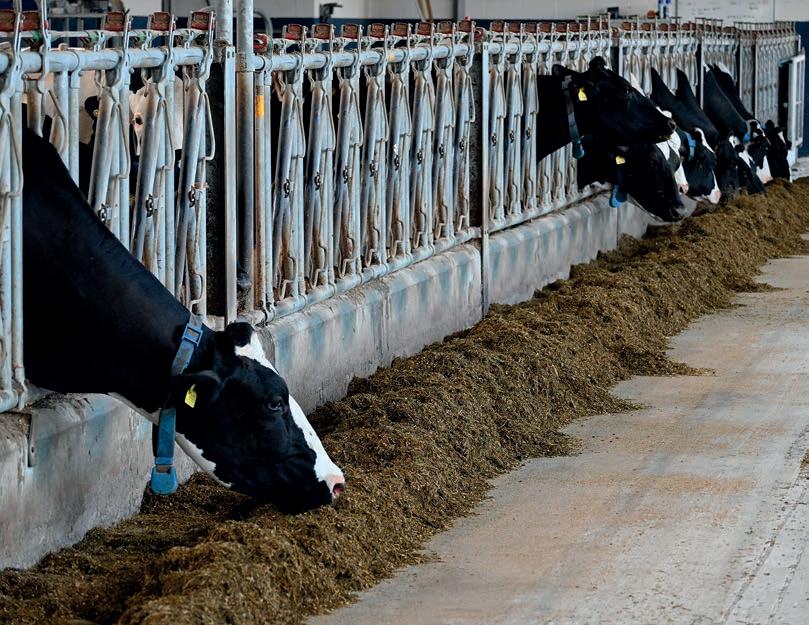
e consistent availability of feed at the base of the fence has had a bene t for foot welfare at Home Farm, as cows are not pushing through the feed fence to reach fodder.
Mr Ingram says: “ e robots have de nitely reduced front-foot lameness due to a reduction in over-reaching for fresh feed.”
is bene t was not initially expected, but does represent a cost saving to the business in terms of time and animal treatment.

e longer term service life of a unit should be about 10 years, according to DeLaval, with wearing parts, including the scraper edge and drive tyres, requiring replacement typically on an annual basis.

Up to four passes are made, each incrementally closer to the barrier to provide consistent feed access.
is service life, however, can be reduced by the quality of the concrete nish the unit is working on, how o en the units operate each day, the volume and type of feed being pushed.


SEPTEMBER 2023 82
Rubber safety edges surround the machine, and will stop the unit if pressed. Routes and machine scheduling
are operated though the handheld controller kept inside the unit.
Albutt introduces upgraded range of shear grabs
Aachment manufacturer Albu has released an upgraded range of shear grabs, including a new 2.5-metre-wide option.
Spanning working widths of 1.3 to 2.5 metres and capacities from 0.7 to 1.3cu.m, the new models include a redesigned grab geometry, which is claimed to o er a wider opening allowing larger volume blocks to be cut, alongside improved cu ing of bales.
Following customer demand for a wider model to match the track width of the handler, the

2.5m version has been developed to allow material cu ing parallel to the pit wall. All models are ed with additional spill protection at the rear of the unit to reduce feed spillage when travelling and wastage on the clamp oor.
Tines
e new range is o ered with either KV or Hardox tines and replaces the existing standard shear grabs models designed for skid steers, tractor loaders and telehandlers.
Using several design features taken from the larger Shear King loading shovel range, the smaller


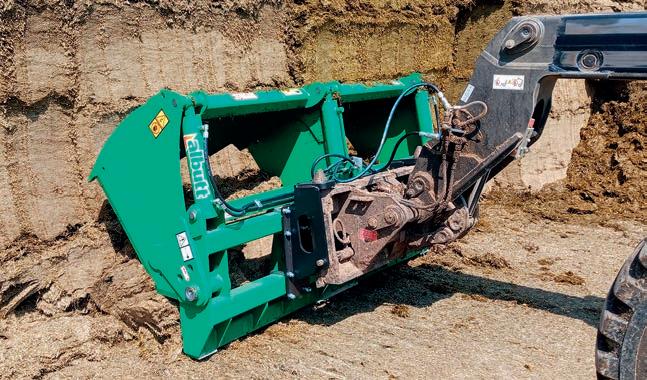
Albutt’s range of shear grabs includes a new 2.5-metre
models are now ed with increased material protection to the pivots, which is claimed to improve the a achment strength and minimise material ingress into the blade pivots.
Material cu ing is achieved with the same Hardox blades as the previous version, with a revised tine layout and cu ing geometry
surrounding the centre blade, which the manufacturer says improves the centre cut and fully divides the material held inside the a achment.
For blade sharpening and maintenance, an additional locking bolt position has been added to secure the blade in an open position, improving operator safety when accessing the blades.






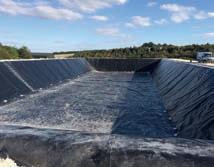
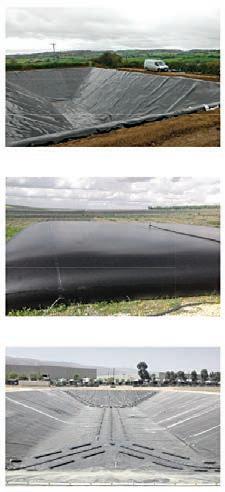


SEPTEMBER 2023 83 MACHINERY YOUR DEPENDABLE PARTNER FOR SLURRY STORAGE SOLUTIONS enquiries@enviroseal.co.uk t: 01695 228626 www.enviroseal.co.uk SLURRY LAGOON FLOATING COVERS Keeps rainwater out of slurry Reduces odour from lagoons Covers comply with EA and SSAFO legislation SLURRY LAGOON LINERS Comprehensive 25 year warranty Materials meet EA and SEPA requirements Installed and tested by certified technicians Enviroseal provide a complete range of products for slurry storage INNOVATION EFFICIENCY RELIABILITY EXPERTS IN SLURRY HANDLING & BIOGAS SOLUTIONS ABOUT US SEPCOM® and CHIOR® offer advanced solutions through a comprehensive range of machines and accessories for livestock manure treatment and for effluents in biogas production WHY CHOOSE US ? Saveco offer innovat ve & reliable products suitable for heavy duty operation at a fair price 0 1 6 8 4 2 9 9 1 0 4 0 7 8 5 1 2 5 2 6 2 7 Owen-Bond@Saveco-Water co uk www saveco-water co uk SUBMERSIBLE CHOPPER PUMPS SUBMERSIBLE MIXERS EXTERNAL CHOPPER PUMPS SCREW PRESS SEPARATORS MICRO FILTRATION UNITS SCREW CONVEYORS GRIT TREATMENT HANDLING PACKAGING WASTE
model and revised cutting geometry.


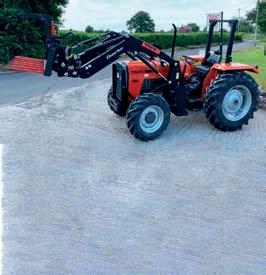



MILKprices

•
•
•







Most milk prices look to hold for now

Tub Grinders
- Exclusive UK Distributor of Haybuster
& Rotogrind Grinders.
- Range of models from 5t - 25t / hour output.
- New, used & refurbished machines available.
- Ideal for straw, hay, green waste, roots, biogas feeds etc
Root Choppers & Cleaners
- Loader, 3 point linkage, free standing PTO and electric drive available
- UK Distributor of VDW range of choppers, cleaners & feed dispensing equipment
- Output from 10t/hour to over 120t/hour available
JMost milk buyers, in line with the UK’s major players (notably Arla Foods and Muller Direct) are holding their prices for September, against a backdrop of low returns from dairy commodity markets, which are now back to late summer/ autumn of 2021 levels.
hurdle is that by the end of August, when decisions for October milk pricing will be made, signals from the market may not be any clearer and therefore signs of any fresh positivity may be hard to nd.
Repositioning
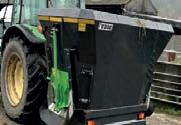

Diet Feeders
- Largest stock of mixers in the UK - over 50 ma chines in current stock
- Refurbished, used & nearly new units available
- New Mini Mixer available
- Diet feeder parts available- Blades, Conveyor belts, gearboxes, weigh cells.
- All feeders undergo 30 point service
- Finance available subject to terms
is, coupled with milk production on-farm still running above this time last year and how market demand levels respond a er the summer break through September and early October, will be crucial in se ing the tone for the remainder of the year, possibly even through to spring next year.
Of course one potential
Away from those which have held their milk price for September, others have taken the opportunity to either reposition their prices, either from a tweaking perspective or, in most cases, those a li le closer to the commodity market coal face, have had to re ect the persistently increasing pressures in the marketplace.
SDDG price down 0.21ppl for September



- Na onwide delivery available
Current Used Stock:
- Trioliet 20 x 2
- Strautmann 10, 20m
- Bvl 10, 12, 15, 20m
- Kuhn 12, 14, 27
- Siloking 14 x 2, 14 duo, 18m
- Shelbourne Reynolds 13, 19
- Hi Spec 12, 16, 20
- JF 18, 22m
- Redrock 14,16
- Rotogrind 760 x 4
- Farmhand Tub grinder
- Enegis Mul chop 4
- VdW 2.4m root chopper bucket
- VdW 2.4m mixing bucket
- VdW Duo Compact loader straw blower on pin & cone
Please visit www.enegis.co.uk for more photos or call 01789 205132 or 07721 442979
JSainsbury’s has reduced its Sainsbury’s Dairy Development Group (SDDG)
milk price by a further 0.21ppl from September.
The decrease follows the 0.57ppl cut from August, taking the retailer’s total price reduction for the year to date to 6.95ppl and our liquid standard to 40.55ppl. Our Arla SDDG supplier
receives the same level of decrease to 40.43ppl, after including the company’s 0.12ppl haulage charge. Both prices including an average bonus of 0.62ppl for herd health and efficiency.
The price of 40.43ppl for our Muller supplier compares with 47ppl paid for September last year.
84
SEPTEMBER 2023
Feed Processing Specialists
- Profi root Chopper x 2 Used Diet Feeders always wanted
Cow kennels
•
Perfect Shelter
Designed for
Animal Health
Excellent Ventilation
from
&
• Shelter
Wind
Rain
the Sun
Plenty of Fresh Air
• Shade from
•
• Ample Space
• Minimum Draught
01772 785252 www.farmplus.co.uk RECRUITING REPS See website for details Call us on 01258 817372 email: info@tractorsuk.co.uk TRACTORS UK SOLE UK IMPORTER OF TAFE TRACTORS FROM THE BEST PEDIGREE BASIC, SIMPLE & RELIABLE TRIED & TESTED FOR GENERATIONS 08R04B Drum or oil immersed brakes Roll bar or cab 2wd or 4wd 2 Years’ warranty Comprehensive parts backup www.tractorsuk.co.uk ✆ 01258 817372 ✉ info@tractorsuk.co.uk BASIC, SIMPLE & RELIABLE www.tractorsuk.co.uk • • 2 Years’ warranty Comprehensive parts backup • • Oil immersed brakes 2WD or 4WD
• Many options available Telephone:
Milk price analyst Stephen Bradley on the latest milk industry developments.
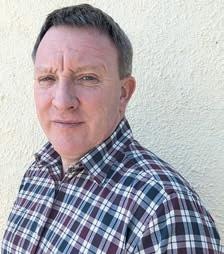
Cheesemakers make price cuts
JMore milk prices for cheese are starting to show the strain, with some cheesemakers which have held their price for the last few months now having to adjust.
Following its price hold for June and July, Belton Farm has reduced its milk price by 1ppl from September, taking the company’s total reduction for the year to date to 12.5ppl.
Our manufacturing standard litre reduces to 36.05ppl and compares with 42.05ppl paid for the same month last year.
With the reduction being flat rate from its base price, our liquid standard reduces to 35.3ppl.
South Caernarfon
Creameries has decreased by a further 0.75ppl from September. Following the penny reduction from August, this latest cut puts the company’s total reduction at 15.25ppl for the year to date, as well as taking our manufacturing standard litre down to 34.75ppl.


Muller CDG price down 0.07ppl
JThe Muller Co-operative Dairy Group (CDG) milk price, which tracks the three prices of Muller Tesco Sustainable Dairy Group, Sainsbury’s Dairy Development Group and Muller Milk Group Direct, including the 1ppl Muller Direct premium, decreases by 0.07ppl from September.
This price includes the company’s annual member bonus of 0.4ppl paid monthly. Comparing with 48ppl paid for the same month last year, our liquid standard decreases by 0.73ppl to 33.57ppl, which also includes the monthly annual bonus and represents a decrease for the year to date of 14.71ppl. The decrease comes on the back of the Sainsbury’s cut of 0.21ppl and takes the retailer’s reduction for the year to date to 8.04ppl, with our liquid standard litre moving down to 39.79ppl and compares with 47ppl paid for the same month last year.
* Our Liquid standard litre is 4%b/f & 3.3% protein, for our Manufacturing 4.2%b/f & 3.4% protein and in both cases Bactoscans of 30,000/ml & SCCs of 200,000/ml, with Thermodurics of 500/ml, 1mltrs/yr on EODC (max vehicle accessibility) based on level supply and therefore, before seasonality, (but includes the winter premiums paid in NI) as well as monthly profile adjustments, balancing charges, capital deductions or annual/part annual growth incentive schemes or supplements not directly linked to dairy market price movement.






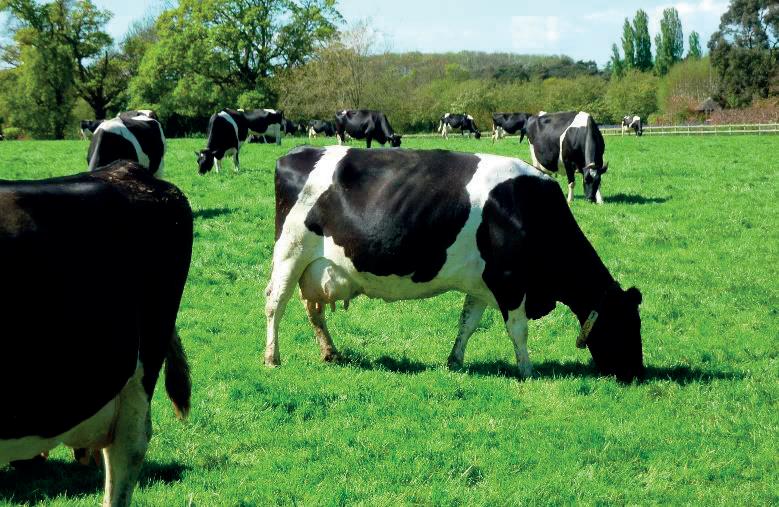



85
SEPTEMBER 2023 Ensure your Future with British Friesians Gain 15.7 Fertility Points 55 Days of Lifespan Male Calf Value & Heifers to sell Lower Vet & AI Costs, all without the use of expensive Sexed Semen AHDB Dec ‘22 The Only Outcross for Pedigree Breeders * * HAVE YOU HERD? THE DAIRY SHOW RETURNS ON WEDNESDAY 4 OCTOBER 2023 VISIT WWW.BATHANDWEST.COM/TICKETS TO BOOK MEDIA PARTNER HEADLINE SPONSOR
Latest milk prices from
Notes to table
Prices for both Liquid & Manufacturing tables paid for a producer sending 1mltrs/yr on EODC (max vehicle size accessibility) with Bactoscans of 30,000/ml and SCC’s of 200,000/ml with Thermodurics of 500/ml. Excludes capital retentions or AHDB levies, profile adjustments from level supply, seasonality, balancing and A&B price schemes (includes the winter premiums paid in NI). Excludes annual / part annual growth incentive schemes or supplements not directly linked to dairy market price movement. Liquid price for milk contains 4% b/f and 3.3% protein. Manufacturing price for milk containing 4.2%/b/f and 3.4% prot. All prices for non-aligned prices are before monthly retail supplements. (i) Apr’23 prices before seasonality or B pricing (ii) May’23 prices before seasonality or B pricing (iii) Table ranked on simple rolling 12mth average of monthly prices Jun’22 to May’23). (i) v (ii) The difference May’23 compared with Apr’23. UK Arla Farmers 5.10ppl decrease from Apr’23 includes forecast 13th payment holding on min 1.23ppkg (1.267ppl) based on our liquid std litre. UK Arla Farmers 5.31ppl decrease for Apr’23 includes forecast 13th payment increasing from 1.28ppkg (1.318ppl) to 1.29ppkg (1.329ppl) based on our manufacturing std litre. UK Arla Farmers 2.54ppl decrease from May’23 includes forecast 13th payment of 1.24ppkg (1.277ppl) based on our liquid std litre. UK Arla Farmers 2.65ppl decrease for
includes forecast 13th payment of
(1.329ppl) based on our manufacturing std litre. First Milk price includes 0.5ppl Member Premium accrued as a 13th payment paid Apr’24. First Milk Haverfordwest Tesco Cheese Group includes 2ppl retailer premium averaged as 1.5ppl based on seasonal profile. Fresh Milk Company price before Morrisons monthly cheese supplement (last payment made in Dec’22 of 0.072ppl for Jul’22 to Dec’22 period). MMG Direct price includes 1ppl Premium paid annually in arrears to Direct/Organic farms meeting specific Müller Direct criteria (Quarterly payments
86
MILK PRICES
+ milk testing.
Ave delivered spot milk net to producer allows 3ppl
haulage + milk testing and margin.
milk price
the
to
1.29ppkg (1.329ppl) based on our manufacturing std litre. UK Arla Farmers 0.09ppl decrease from Jul’23 & hold for Aug includes the new 1.185ppkg Sustainability Incentive and forecast 13th payment of 1.24ppkg (1.277ppl) based on our liquid std litre. UK Arla Farmers 0.09ppl decrease for Jul’23 & hold for Aug includes the new 1.236ppkg Sustainability Incentive and forecast 13th payment of 1.29ppkg (1.329ppl) based on our manufacturing std litre. Arla Direct June decrease of 2.64ppl is from the 5th Jun’23. MMG Direct Premium for Direct/Organic farms meeting specific Müller Direct criteria confirmed as 1ppl for 2023 and paid quarterly, Apr’23, Jul’23, Oct’23 & Jan’24. All prices are before any additional monthly retail supplements. Milkprices.com cannot take any responsibility for losses arising. Copyright: Milkprices.com Apr’23 May’23 12mth Diff Latest 4.0/3.3 4.0/3.3 Ave May’23 Confirmed Before Before Jun’22 v Milk Seas’lty Seas’lty May’23 Apr’23 Price LIQUID PRICES (4% b/f & 3.3% prot) (i) (ii) (iii) (i) v (ii) (iv) Müller Milk Group – M&S 52.44 50.67 50.26 -1.77 47.16 Müller Milk Group – Waitrose 48.30 46.70 48.47 -1.60 45.30 UK Arla Farmers – Morrisons (Grazing) 39.70 37.16 47.65 -2.54 35.36 UK Arla Farmers – Tesco 39.50 36.96 47.44 -2.54 35.16 UK Arla Farmers – Morrisons 39.47 36.93 47.41 -2.54 35.13 UK Arla Farmers 38.08 35.54 46.02 -2.54 33.74 Crediton Dairy 41.50 39.00 45.92 -2.50 37.00 Yew Tree Dairy 42.00 39.00 45.92 -3.00 36.00 Freshways 41.00 41.00 45.83 N/C 36.00 Müller Milk Group – Tesco 42.50 43.51 45.80 1.01 41.83 Dale Farm GB (Kendal) 41.21 38.59 45.76 -2.62 36.43 Müller Milk Group – The Co-op Dairy Group 42.97 42.15 45.63 -0.82 39.79 Müller Milk Group – Sainsbury’s 43.90 42.91 45.60 -0.99 40.55 Arla Foods – Tesco 42.25 43.26 45.55 1.01 41.58 Müller Milk Group – Müller Direct 42.50 40.00 45.50 -2.50 37.00 Blackmore Vale Dairy 42.00 40.00 45.50 -2.00 38.03 Arla Foods – Sainsbury’s 43.78 42.79 45.48 -0.99 40.43 Paynes Farms Dairies 41.00 39.00 45.42 -2.00 36.00 Müller Milk Group – Müller Direct (Scotland) 42.29 39.79 45.29 -2.50 36.79 Dale Farm NI 34.43 33.93 44.55 -0.50 33.43 Meadow Foods Lakes 38.00 35.50 44.35 -2.50 34.00 Meadow Foods 38.00 35.50 44.35 -2.50 34.00 Grahams Dairies 38.00 38.00 43.33 N/C 36.00 Simple Average 41.51 39.91 45.96 -1.61 Simple Average (excl. retail contracts) 40.00 38.07 45.21 -1.94 MANUFACTURING PRICES (4.2% b/f & 3.4% prot) UK Arla Farmers 39.64 36.99 47.88 -2.65 35.12 First Milk – Haverfordwest Tesco Cheese Group 44.19 40.79 47.87 -3.40 38.35 Wensleydale Dairy Products 41.68 38.86 47.61 -2.82 36.84 The Fresh Milk Company – Level Profile ‡ 41.66 39.38 47.23 -2.28 37.51 Barber’s Cheesemakers 42.19 39.10 47.20 -3.09 37.79 Saputo Dairy UK – Davidstow 42.50 40.00 47.04 -2.50 37.50 Wyke Farms 42.34 38.81 47.03 -3.53 37.77 The Fresh Milk Company (Lactalis) 41.09 38.81 46.66 -2.28 36.94 Parkham Farms Tesco 40.90 39.00 46.49 -1.90 37.25 First Milk 42.69 39.29 46.37 -3.40 36.85 Arla Foods – Direct Manufacturing 42.40 37.09 45.91 -5.31 32.67 South Caernarfon 40.00 38.25 45.90 -1.75 34.50 Belton Farm 41.05 39.05 45.74 -2.00 36.05 Dale Farm NI 35.42 34.92 45.45 -0.50 34.42 Glanbia – Llangefni (Constituent) 38.75 34.00 45.25 -4.75 34.00 Simple Average 41.36 38.52 46.76 -2.84 Simple Average (excl. retail contracts) 41.19 38.32 46.70 -2.87 ‘B’ Price Indicators StoneXMilkprices.com UKMFE (gross) 33.22 33.69 45.09 0.47 *StoneXMilkprices.com UKMFE (net) 29.04 29.50 40.23 0.46 **Delivered spot milk (net to the producer) 23.36 23.07 -0.29
May’23
1.29ppkg
from Apr’22).Crediton Dairy price includes FarmMetrics Scheme Bonus of 0.5ppl paid monthly. South Caernarfon price includes flat 0.4ppl annual member bonus paid monthly. ‡ Price includes 12mth average rolling profile fixed at 0.57ppl. * UK Milk Futures Equivalent (UKMFE) net to producer includes 5% processor margin and allowing 2.52ppl ex-farm haulage Apr’23 and 2.5ppl for May’23
**
covering
(iv) Latest confirmed
at
time of going
press. UK Arla Farmers 1.78ppl decrease for Jun’23 includes forecast 13th payment of
SEPTEMBER 2023




GROW YOUR KNOWLEDGE, HARVEST YOUR POTENTIAL.
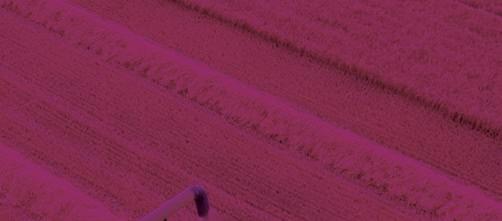

Get ready to witness the groundbreaking technologies and visionary ideas that will shape the future of farming:
• Cutting-edge technology demos
• Network with industry leaders
• Innovation at your fingertips
• Stay ahead of industry trends
• FREE to attend
• Free parking and discounted hotel rooms TO GET YOUR FREE TICKET, SCAN THE QR CODE OR VISIT futurefarmingexpo.com


October 10-11 P&J LIVE ABERDEEN
HEATSTRESS?
The climate in the barn is the key!
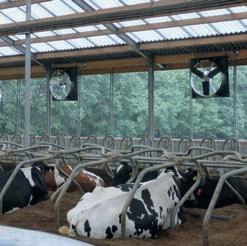

THE SOLUTION:
ABBIFAN 140-XXP-2
The latest motor technology now applied on our fans! Direct drive.
DC-permanent magnetic motor
40-70% energy savings
No frequency control needed
No motor protection switch needed
No special wiring needed
No maintenance
Mains: 230/400V 50Hz


CROSS VENTILATION
blows fresh outside air in your barn!
Simpler installation
Less electric wiring
No obstacles inside
No restlessness when doing maintenance
Shorter suspension of the fans
Lower total investment
Airflow in length of cubicles
Prices weaken on back of slow trade
This has been a desperate summer for dairy sales, a good one for production and thus an awful one for prices.
Demand was already bad to begin with and it always gets worse when schools break up, particularly for liquid milk sales.
e reality is the market is still extremely quiet and even the odd deal is enough to move the market up or down.
Bu er had been on a positive trajectory through June, but slipped badly in July to as low as €4,250-4,350/tonne and £3,700/t in the UK.
Cream ended the month in the low to mid £1.60s at best – it had almost been touching £1.80/kg
Net AMPE price falls to half that of estimated production costs
JNothing shows the general direction of farmgate milk prices quite as well as the AMPE and MCVE indicators.
The latest gross AMPE figure for July is 29.66p, which is down 3p on June.
It has not been as low as this since the end of 2020.
After an allowance for a margin and additional supply chain costs, a reasonable farmgate equivalent would be 25.6-26.6p at best.
The gross MCVE figure is 35.9p, down 1.7p on June.
The farmgate equivalent of this is about 31.92p.
for one week some six to eight weeks ago, for example.
Demand for SMP is extremely weak, with stocks plentiful, and nding buyers a struggle. Arla’s SMP sold for $2,460/t on the GDT, equivalent to €2,220/t (£1,900), and that has, and will, set the tone for the market for a while yet.
Poor prospects
e weakness of bu er and SMP and the relative strength of milk volumes across Europe – with no material reduction in volumes despite milk price reductions and poor prospects for several months hence – has inevitably resulted in busy cheese factories and plentiful supplies.
Edam and gouda prices dropped mid-month to slightly below
Futures prices
JThe futures prices have been declining in line with real market sentiment. But there was a rally in the last week of July, until the disaster of the GDT on August 1 put paid to that.
When converted into a milk price equivalent, butter and SMP convert to a price of just
€3,300/t (£2,850/t) and €3,350/t (£2,893/t), but have li ed back at those thresholds.
Mozzarella has arguably increased proportionally more in euro terms to the same level, with prospects slightly higher for Q4, but not signi cantly so. In the UK it is now at £2,850/t. ere is no shortage of Cheddar on the market, and traders report several parcels being touted around from prices in the low £3,250/t range if sellers are desperate to get rid of it.
Most are not though, and the consensus seems to be that prices are £3,400/t for British and slightly less for Irish. At this level, and with whey prices awful, the MCVE is set to decline even further.
under 30p after transport, a processor margin and additional supply chain costs.
New Zealand futures convert to a price of 28p.
Next quarter prices are better, but not significantly so. EU prices convert to a price of 30.8p and New Zealand prices to just under 29p.
Average future prices for next six months (ppl)
www.abbi-aerotech.com
www.rumitechs.co.uk
Ph: 07714 846987
AHDB says a good guide to farmgate prices is to take 80% of the MCVE price and 20% of the AMPE price, which works out at slightly less than 31p.
SEPTEMBER 2023 88 MILK ANALYSIS
NEW!
NEW!
June 22 June 30 July 8 July 16 July 24 August 1
cost allowance 34 33 32 31 30 29 28 27 26 EU NZ
Note: Including transport, processor margin and

Defra milk price
JThe latest official Defra milk price for June was 36.48ppl at 4.05% fat and 3.34% protein. When corrected for constituents back to a standard 4% fat, 3.3% protein standard litre, the price is about 36ppl.
After further price drops by a few processors for August and September, the estimated
non-aligned average price for September is now just over 35p, which is down from just under 48p in January – a fall of 27% across all processors.
The average retailer aligned pool price is still above 40p, including an allowance for scaleback from the likes of Tesco. It makes the 5p gap the biggest since 2016.
JMilk volumes ideally need to drop, but there are no signs of them doing so at all. UK milk volumes over the last two weeks have averaged 40.18 million litres per day, some 380,000 litres and just under
1% more than last year, but 0.4% lower than the long-term average. GB milk volumes have averaged 33.10m litres per day, up 358,000 litres and 1% more than last year, but 1.7% lower than the long-term average.

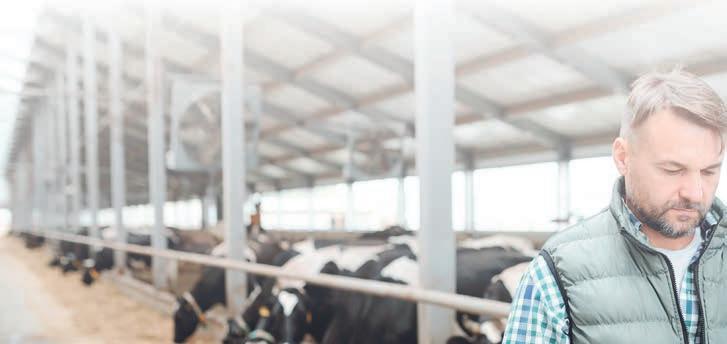

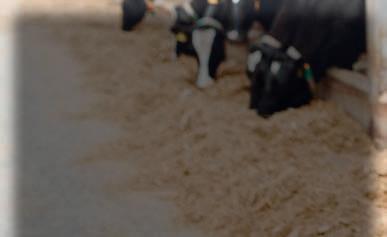



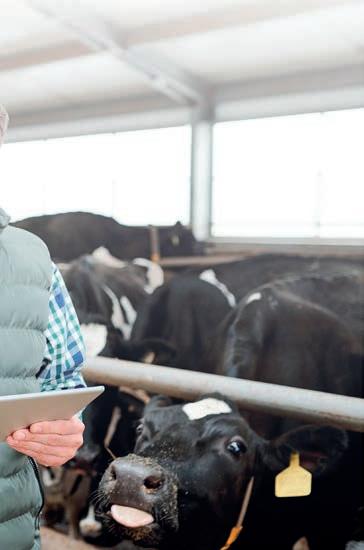
SEPTEMBER 2023 89
MILK ANALYSIS
dairy
milking parlours, calving equipment and everything in between, you’re sure to find what you need on FGBuyandSell.com . Start listing your items FREE today! Browse. Sell. Buy at FGBuyandSell.com
Brought to you by Farmers Guardian, FGBuyandSell is the platform for you to sell your items to a responsive farming community.
From
cattle,
The weakness of butter and SMP and the strength of milk volumes across Europe has resulted in busy cheese factories and plentiful supplies.
Jan 16 Mar May Jul Sep Nov Jan 17 Mar May Jul Sep Nov Jan 18 Mar May Jul Sep Nov Jan 19 Mar May Jul Sep Nov Jan 20 Mar May Jul Sep Nov Jan 21 Mar May Jul Sep Nov Jan 22 Mar May Jul Sep Nov Jan 23 Mar May Jul Sep
51 46 41 36 31 26 21 16 Average non-aligned Average aligned price
UK milk volumes Average aligned vs. non-aligned prices (ppl)
Note: Includes assessment of aligned scaleback
NEWProducts
This month, we feature a new supplement to target physiological impact of heat stress, an early diagnostic system for mastitis, plus a new range of footbathing chemicals.
New slow feed milk bar teat
JA new slow feed milk bar teat is now available from Dairy Spares for use in automatic calf feeders.
Adding to the milk bar range, this new automatic teat is designed to ensure calves have to suckle for the milk and also has ‘side wings’ to help the user position it correctly in the feeder.
The teat is available in a pack of 10 with a recommended retail price of £42 plus VAT.
rMore information from 01948 667 676 or info@dairyspares.co.uk
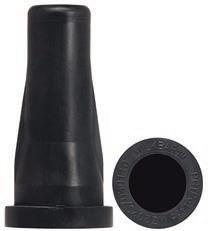
Got a new product?
JNew products are featured in each issue of Dairy Farmer. Please send details and pictures to Hannah Morgan at hannah. morgan@agriconnect.com, or call 01772 799 450.
Heat stress supplement
Premier Nutrition has launched a new supplement designed to target the physiological impact of heat stress for both dry and fresh cows.
VitalChill, a daily supplement added to total mixed rations at a rate of 25g/head per day, is said to contain a combination of heat abatement technologies designed to stimulate heat loss from the skin to lower the internal body temperature.
Developers say the technology protects the rumen so valuable bu ers are not lost through panting and the specialist additives used will also help to increase water intake.
Additives
It is advised that VitalChill’s combination of additives be used in conjunction with good management protocols.
rMore information from premiernutrition.co.uk/ vitalchill
Update to farm carbon calculator
JFarm carbon calculator, Agrecalc, has launched a new version of its platform –Agrecalc Cloud.
The new platform, with all data held in the Cloud, is said to include a streamlined and easy-to-use interface, as well as greater integration and flexibility with a wider list of crops and
inputs, the ability to run more than one livestock enterprise per farm and to apply multiple different organic materials and manures to each crop.
It also includes new greenhouse gas mitigation options, including nitrification, urease and methane inhibitors, and the addition of anaerobic

digestion as a manure management option.
Agrecalc established itself as an independent company in 2022, although it retains its full research ties with SRUC and consultancy input from SAC Consulting.
rMore information from agrecalc.com

90
SEPTEMBER 2023
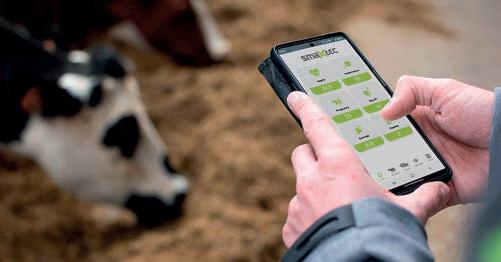
Early diagnostic for mastitis
JA new early standard for mastitis detection, Level Zero, has been launched by the developers behind the smaXtec advanced health system.
Developers say it works via a specific temperature pattern which indicates the early onset of mastitis, identified through analysis of data collected through smaXtec’s continuous monitoring.
Based on the measurements of inner body temperature generated by its health
monitoring boluses, smaXtec has identified three rapid temperature increases over a short period as the trigger for mastitis.
The Level Zero classification, the lowest in severity, is described as inflammation already being present but with a normal-appearing mammary gland and visibly normal milk which could give producers the ability to administer a preventative treatment.
rMore information from smaxtec.com/en
Footbathing with broad benefits
JNeogen has added to its range of footbath chemicals with the launch of Hoofshield Advance, designed to provide a
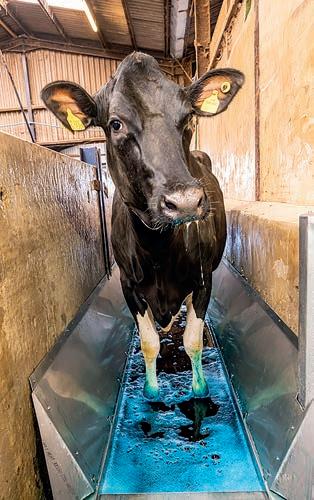




combination of broad action disinfectant, surfactants and conditioners to improve general hoof quality on-farm.
Neogen says the formulation of Hoofshield Advance has been independently evaluated according the European Standard for the evaluation of bacterial activity of disinfectants.
It also says it has been proven to be 99.999% effective against the specific organisms responsible for digital dermatitis.
The distinctive blue dye clearly marks hooves to show dipping has been effective. Neogen is exhibiting at UK Dairy Day at Telford on September 13.
rMore information from 01706 344 797 or info. neogen.com/3O6FkV7









91 NEW
PRODUCTS
SEPTEMBER 2023 SHEEP GROWER BEEF PLANET DAIRY PLANET PLANET PLANET REARING PLANET The first complete range of milking, dry cow and youngstock compounds and blends with ZERO soya and palm kernel Contact Massey Harpers Feeds: Holmes Chapel: 01477 536300 Preston: 01772 206200 Holsworthy: 01409 254300 or scan: Fo cu se d on n utriti on Fo cu se d on n utriti on Reduce your carbon footprint with To find out more visit us at UK Dairy Day, stand L27

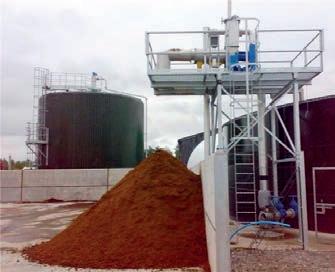
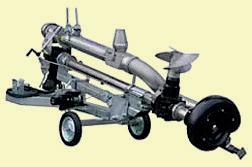
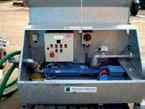








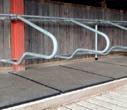



Equipment & Accessories SEPCOM The unique separator Slurry pumps & lagoon mixers 01328 701992 | enquiries@greencrop co.uk | www greencrop co.uk Multicam dirty water irrigator Slurry pump Pump in a box CLASSIFIED TELEPHONE: 01772 799400 1 8m x 1 2m / 6ft x 4ft Each 30kg Per Mat Easy Grip Handles Animal Proof Weather Resistant 100% Rubber Construction R U B B E R S Y S T E M S F O R A G R I C U L T U R E DAIRY MAT ARK www arkmat co uk C a l l o r E m a i l F o r P r i c i n g A n d F u r t h e r D e t a i l s 01392 209 394 info@ark-rubberandresin co uk PARLOUR MATTING HEAVY DUTY SILAGE PIT MATS SUPERSOFT CUBICLE MATS ALLEY MATS 5 YEAR GUARANTEE Delaval mobile milking bale for hire/sale. Delaval Blue Diamond 32/32 fast exit MM25s. Save energy, Ice Builders : Bulk Milk Tanks. Heavy duty replacement troughs for most parlours. Delaval VMS Robots : Milk meters, keypads, feeders etc. Everything for the Dairy Farmer Call Vic/Tracey Brown Tel: 01260 226261 www.milkingequipment.com Milking Equipment Building Services SPRAY FOAM INSULATION To Crop & Livestock Stores, Poultry Sheds, Cattle & Pig Buildings, Workshops & Barns. Frost & Condensation Protection. Temperature Control Energy Saving Tel: 01405 812682 www.webstersinsulation.com info@webstersinsulation.com Livestock SEPTEMBER 2023 92 CLASSIFIED TELEPHONE: 01772 799400




















93 SEPTEMBER 2023 Livestock Services FARM HEALTH SOLUTIONS Ask about Herd Health Analysis T . 01756 749444 W . www.crossgateshealth.co.uk PROBLEMS WITH HIGH SCC /MASTITIS? - WANT TO REDUCE USE OF ANTIBIOTICS? - COST EFFECTIVE PRODUCTS WITH EASY WATER TROUGH ADMINISTRATION - DISCOUNTS - WE CAN HELP WITH SHEEP PROBLEMS TOO - CALL FOR A FREE SAMPLE KIT APPLE CIDER VINEGAR (ACV) Nationwide (01948) 662910/663143 george@greenfieldsrise.f9.co.uk THE UK’S PREMIER EVENT FOR FARMERS AND LANDOWNERS farmbusinessshow.co.uk To find out more about exhibiting, scan the QR code or visit: REASONS WHY YOU SHOULD EXHIBIT Attendance of 15,000 people is across four shows Generate quality sales leads Build awareness of your brand and products Make innovative business connections Speak directly to your target market Connect with major buyers and key decision makers DIVERSIFY AND INNOVATE YOUR BUSINESS Special focus on advice around diseases at turnout, a look at protein crops, the benefits of metabolic profiling and features on farmers from around the country. WWW.SPREAD-A-BALE.COM No chopping, saves straw levels in under one minute Self-loading, requires tractor loader both efficiency and profitability Spread-a-Bale SUPPLEMENT Edited katie.jones@agriconnect.com DAIRY FERTILITY 12 FEVER your qualityleads FUTURE farmer 22 Tips around 26 HEALTH disease Advantages 30 STAFFING MARCELLO DAIRY SUPPLEMENT OUR NEXT DAIRY SUPPLEMENT OUT SEPTEMBER 8, 2023 Speak to Katie Robinson today and start converting our readers to your customers. 01772 799500 | fgclassified@farmersguardian.com Forthcoming Events Dairy Cattle Livestock
GOODEvans
‘We still have the ‘right to roam’ to come, so get your gun out, while you still can’
This month, Roger Evans writes about the problems caused by dogs running free on farmland, and also gives us his thoughts on early mornings.
Iread Farmers Guardian every week. For years now they have been highlighting the issue of dogs worrying livestock. Keep your dog on its lead when in the countryside and there are livestock about is the clear message.
But we, farmers, are not the problem and the message needs to go to a wider audience. If you watch TV there are o en dogs on there, but they are rarely on the lead and are usually running free.
In fact, allowing your dog to run free has become a sort of norm and pu ing it on its lead is the exception. So as a start, why not take this message to the BBC; they are as bad as anyone on this.
I was once involved with a ock of sheep which had been a acked by dogs and it was well over six months before we could take any of the farm dogs anywhere near them. How do you put a price on that? You can’t. ey had such a panic reaction that they could have injured themselves.
Before we had the red card to leave the land we rented, we had a very long public footpath. is footpath was much used; the views were outstanding. But I also knew that the footpath was o en used by a man who had two spaniels, which he allowed to run free.
For months I tried to catch him and then one day he jumped over a style right in front of me, closely followed by his two dogs.
I must have been in a good mood, because I explained patiently to him that he shouldn’t let his dogs run free because there were lapwings, chicks and leverets in the elds he had just crossed, which was true, and his dogs would disturb them or even kill them. I was quite taken aback by his reaction. He was very indignant, suggesting his dogs would never do any harm.
I used to do a fair bit of shooting, so I know what a spaniel looks like when it has been hunting.
He started waving his arms about and for a
moment I thought he was going to hit me. en he put his st close to my face and his arm was inside my truck. Big mistake. In the back I had a particularly nasty sheepdog. He tolerated most people but he idolised me. His teeth clicked shut close to this man’s arm, he nearly had my right ear o . e man suddenly realised he was pushing his luck and disappeared over an adjacent style and I never saw him again.
e Covid-19-driven spike in dog populations will work its way through. It will not last much longer when people realise how much pet food costs and how much vets charge.
If you get injured or dead farm animals, take a photo and put the picture on social media and if you catch dogs chasing your animals get your gun and shoot them and put the dead dogs on social media as well. I suspect that is the only thing which will make any di erence.
Making a difference
Always remember that most people see a pet as a member of their family. ey won’t like it if you get your gun out, but unfortunately that is the only sort of language which will make a di erence and they will understand.
We, as farmers, are blamed for most things. For example, in ation, global warming and we still have the ‘right to roam’ to come, so get your gun out, while you still can.
When we decide to become dairy farmers one of the things we sign up for is a lifetime of early mornings. It goes with the job.
I was okay at ge ing up early. It is surprising how the lure of the rst cup of tea of the day will get you out of bed.
On top of that I always preferred the morning milking to milking in the a ernoons. Going to fetch the cows in the early morning was always a bit of a
94 SEPTEMBER 2023

“I wonder who told carrion crows and wood pigeons they could sing?
treat and if there was someone else in the team who could milk and you had done the morning milking, it put you on the high moral ground. e best device I ever had to get me awake was called a Teasmade. is would switch the light on and boil a ke le and sound an alarm so there was always a cup of tea waiting for you when it was time to get up.
Bedtime
Every night I would take a tray upstairs to bed and on it there would be water, milk, mugs and teabags and sugar. I would ll the ke le, position it over the teapot and plonk the tray on the oor. ere are always mice in an old farmhouse and I had known for some time that they had been visiting the tray in order to drink the milk.
One night my wife awoke and asked: “What was that noise?” It’s surprising how much noise several mice can make when they are lapping milk.
Long story short, I was banned from ever taking a tray upstairs again and the Teasmade ended up in the bin. A er that, my daughter bought me a succession of alarm clocks. I particularly remember a plastic soldier which played a bugle to the tune of Reveille. I hated him. You switched him o by pressing down on his helmet. My st demolished him one morning.
At present there are no cows to milk, so no need to get up early. But I still wake up three hours before my alarm goes.
I don’t go back to real sleep, I doze a bit, I do my best thinking of the day and, for the rst time in my life, I listen to the dawn chorus. I wonder who told carrion crows and wood pigeons they could sing?



JobsInAgriculture Jobs in your field Let us keep you updated by email and never miss another great job JobsInAgriculture.com Find
Receive the latest jobs in your inbox with our free email alert service 95 SEPTEMBER 2023
Jobs Faster
Input costs may have eased, but they are still higher than before the start of 2022 and may never come back to those levels. Cedric Porter reports.
Input costs ease but there is still plenty of volatility
Defra has a long-running series measuring the cost of inputs and the price of outputs.
They are expressed in relation to average values in 2020, which is set at 100. At the beginning of 2020, cattle feed costs were at an index figure of 97.6.
They peaked at 159.3 in December 2022 and have not fallen much since.
The most dramatic changes have been in fertiliser costs. They hovered around 100 for much of the Covid-19 year of 2020. But by the end of the year they started to move.
Higher energy costs meant fertiliser costs were 50% higher than the start of 2021 by the autumn of that year. They jumped again after Russia’s invasion of Ukraine.
By the middle of 2022 they were 220% more than at the beginning of 2021. They have slipped since then, but are still double what they were three years ago.
Other costs have also risen and fallen, but not to pre-war levels.
By May 2022, fuel prices were more than twice where they were in the early part of the pandemic. Electricity is a major cost for many dairy farmers. Power costs have slipped, but remain historically very high.
Milk price index
Unfortunately for dairy producers, most costs have not dropped at the same rate as the milk price. At the beginning of 2020, Defra’s milk price index was at 100. Then 18 months later it was still only 5% higher and prices started to motor. So much so, that the index hit 180 in December 2022. But in the first five months of the year it has plunged to 131, 14% less than a year ago.
Natasha Edwards, livestock inputs procurement manager at buying co-op AF, says: “There has been an easing in protein and cereal prices, but the market remains very volatile
and influenced by changes in the grain market, which continues to be driven by the situation in Ukraine and weather-related events elsewhere.
“In such a volatile market it is important to have an understanding where ingredient prices are going and what you can do to protect your margins.”
She says dairy farmers opt to buy feed through AF in three different ways. Some continue to buy on a spot basis, with others buying on contract, but more are choosing to be part of a buying group.
“ is means that farmers can buy forward and, while they might not buy feed at its lowest price, they do avoid buying when prices are at their highest. In the last year, members of the group have saved an average of £70/tonne.”
Ms Edwards says there has been no significant change in the type of feed dairy farmers have been buying in the last couple of years, although

inevitably they are seeking to make the most of their home-grown forage.
“There has been more interest in alternatives to soya and ingredients that reduce methane emissions as dairy companies put more emphasis on sustainability.”
Other inputs where producers are looking to protect supply include sawdust, which has been in short supply.
“Group buying of something like sawdust means that we are able to secure supplies when availability is tight and at a competitive price.
“Elsewhere we have seen mineral prices come down, which is encouraging for buyers.”
Ms Edwards says that however you buy your inputs, having a planned approach to purchasing which takes into account what you are likely to need over a season and is done in consultation with your nutritionist, business consultant and supplier makes a lot of sense.
The worst of the increase in costs
SEPTEMBER 2023 96 BUSINESS CLINIC
Top 10% Top 25% Average Bottom 25% Top 25% 2021/22 Average 2021/22 Cows in herd 195 203 217 247 198 211 Cows per hectare 2.39 2.3 2.33 2.23 2.15 2.35 Milk/cow (litres) 8,754 8,570 8,458 8,642 8,573 8,456 Milk from forage/cow (litres) 4,357 3,987 2,776 1,429 3,983 2,801 Milk from forage (as % of total) 49.8 46.5 32.8 16.5 46.5 33.1 Milk price (ppl) 46.45 46.51 46.18 45.59 32.33 32.05 Concentrate/cow (kg) 2,191 2,280 2,690 3,197 2,289 2,667 Concentrate use/litre (kg) 0.25 0.27 0.32 0.37 0.27 0.32 Concentrate (£/tonne) 367 364 357 352 277 274 Other purchased feed (£/cow) 47 46 81 141 38 59 Total purchased feed (ppl) 9.72 10.23 12.31 14.65 7.85 9.34 Margin over purchased feed (£/cow) 3,216 3,109 2,865 2,673 2,098 1,920 Margin over purchased feed (ppl) 36.73 36.28 33.87 30.94 24.48 22.71
Kingshay costings results for conventional Holstein/Friesian herds by perfomance in the year ending March 2023

In such a volatile market it is important to have an understanding of where ingredient prices are going and what can be done to protect margins.

does appear to be over, says Kathryn Rowland, senior farm services manager at consultants Kingshay.
She says: “Farmers are signing up to feed contracts now and they are lower than last year, which will be welcomed by many who are still using feed which was contracted at higher prices in 2022.
“Fertiliser prices are also coming down, but it is viewed as an essential investment in delivering more forage
by producers and makes up a smaller proportion of costs than feed.
“There is more uncertainty about other costs. Electricity and fuel costs have come down but remain volatile.
“Meanwhile, labour costs are higher and very unlikely to come down, while the cost of financing has risen because of higher interest rates.
“All in all, total costs have not come down significantly and may never go back to pre-2022 levels.”
REDUCE RATES OF LAMENESS TODAY!
Are you fed up with manual foot bathing? D
Limited extra forage use
JKingshay figures for the 2022/23 milk year show that the margin over purchased feed was at an all time high of 33.9ppl, 50% more than the year before.
Pressure
That margin will be significantly lower this year, says Ms Rowland, as lower milk prices and high feed costs put pressure on returns.
A push for more milk from grass is expected, although between July 2022 and May 2023, the production of compound feeds for dairy cows was up 1.9% to 1.948 million tonnes, according to AHDB figures. May production was 10% more than last year, reflecting the lack of forage after the drought in 2022.
The top 10% performing

herds in the nearly 1,000 herds Kingshay monitors delivered 4,357 litres of milk from forage in 2022/23 or 49.8% of the total milk produced.
The top 25% delivered a similar amount and proportion of milk from forage as in 2021/22, but the average managed only 32.8% of milk from forage, slightly down on the 2021/22 figure.
The bottom 25% had a 16.5% milk from forage score.
Recent update
So what might the cost of production look like this year and next? In its most recent update, consultant Andersons forecast average variable costs will be at 17.7ppl this season with the total cost at 39ppl. That compares to 23.6ppl and 45.3ppl in 2022/23.

you hate working with chemical ? Innovators
SEPTEMBER 2023 97 BUSINESS CLINIC Autoflush Footbath Benefits of the Autoflush Footbath Improved animal health Suitable for all chemicals Increases the herd performance
Minimises contact with chemical
Reduced labour costs
Reduced water consumption Efficient cleaning Cowcare SYSTEMS Features
positions: (left, right or centre) Standard length: 2 or 3 meter Non-slip flooring One Touch system programming Heavy-duty stainless steel construction For a no obligation quote or more information Wales/Midlands/S. England N.Ireland/ R.O.I John - 07732348225 Scotland/N. England 07591833853 Fred - 07762800149Andrew - 07803124235 info@cowcaresystems.com ✓ ✓ ✓ ✓ ✓
Pump
in
Farming
o
Dairy
Finances are significant concern for farmers
Input costs, pro tability and cash ow top the list of factors that are impacting how farmers are running their business, according to a new report. e annual Marketing to Farmers report from Hillsgreen in partnership with England Marketing, surveyed 745 farmers, including 184 dairy farmers. e survey also revealed that climate change and investing in renewable energy remain high on the farming agenda.
When asked to rank the factors which are having the most impact on the way they farm, respondents said pro tability, farm input costs and cash ow were top of the list.
For dairy farmers in particular, sta ng issues also featured highly, while the loss of Basic Payment Scheme payments is having a lower impact on the way they farm compared to other farming sectors.
While money worries continue due to in ation, with energy costs and feed costs eating into potential revenue for many businesses, respondents also cited a lack of communication from the Government on various agri-environmental schemes and grant payments as having a real impact on everyday farm operations.
In the current challenging cli-
Spending online
rOver a quarter (26%) of dairy farmers are willing to spend £1,000-£5000 online. Only 15% would spend £50,000 online (in one single transaction)
rOne in five (21%) would not spend more than £1,000 in a single transaction online

mate, farmers were also asked about their investment plans and it was found that investing in some form of diversi cation (35%) was being most considered by farmers. ey were also actively seeking investment opportunities in machinery (33%) and building (31%).
For dairy farmers, investment in land, as well as in people and training, also featured highly, which re ects the di erent areas of concern the sector has.
Andy Venables, managing director of Hillsgreen, said: “Farmers are actively exploring various investment opportunities to enhance their farm businesses,
Online habits
rDairy farmers are mostly online between 6pm and 9pm (50%)
rTheir main channel use is WhatsApp (66%) and Facebook (58%), and 34% use YouTube
rOf those that do use
increase revenue streams, and improve the overall sustainability of their operations. ey do see potential growth areas within the sector and this emphasises the need for businesses to tailor support and resources to help farmers navigate and capitalise on these opportunities.”
Mental health
With nancial considerations having such a signi cant impact on farming businesses, it is unsurprising that poor mental health in farming is estimated to be 46% higher than in other occupations. In times of need, it is fellow
YouTube, 57% use it several times a week
rDairy farmers’ average time on social media is one to three hours per day (51%), with 8% spending three to five hours on social media per day
farmers and friends that the majority of farmers look to for nancial, mental health and practical support (15%). However, this is closely followed by going online or using social media to nd support (12%).
e report also analysed how farmers communicate with each other, with brands and with partners. More than eight in 10 (83%) of farmers use social media regularly with six in 10 (61%) using it daily; up from 45% last year.
Nearly one quarter (22%) are using TikTok either daily or weekly, but WhatsApp kept top place in the channels most used by farmers. YouTube has seen an signi cant increase in daily use too, with 37% using it every day; up from 14% last year.
While farmers use social media heavily, it is websites they rely on the most to inform their buying decisions; 77% say websites hold the most in uence when they are looking at making a purchase followed by search engines (65%) and farming forums (49%).
SEPTEMBER 2023 98 RESEARCH
Staffing issues are having a big impact on the way dairy farm businesses are run, according to a recent survey.
PICTURE : Getty


OPEN THE GATE TO DIVERSIFICATION
Experience the power of innovation, inspiration and industry expertise at the UK’s premier event for farmers, landowners and agri-professionals.
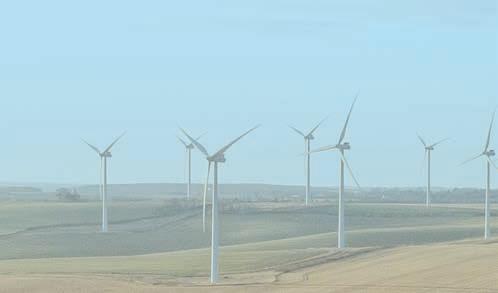

WHY VISIT?

See more than 420 exhibitors across four shows

Whether you are seeking to expand your current rural business or explore diversi cation, Farm Business Innovation is the place to be.
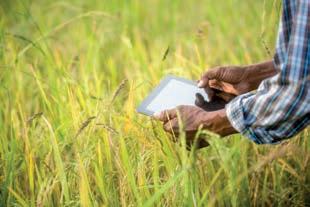

Diversify your income streams







Network with industry professionals
THIS EVENT RUNS ALONGSIDE: farmbusinessshow.co.uk
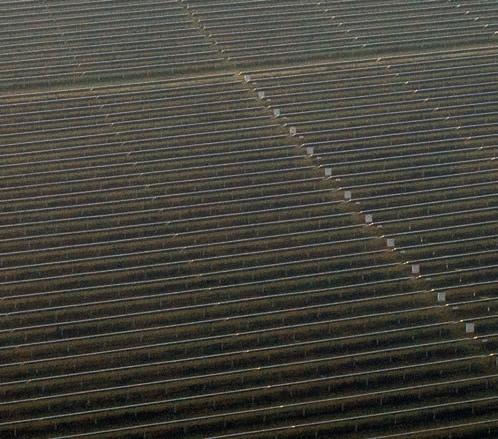

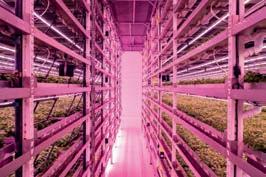



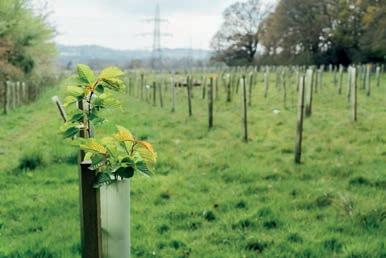
Explore cutting-edge solutions
Get expert industry insights 15-16
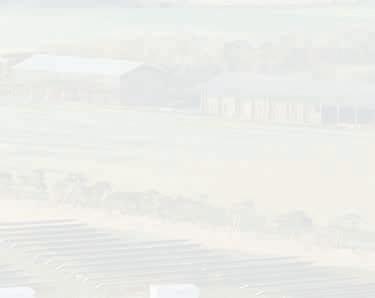
To register for your free ticket, scan the QR code or visit:




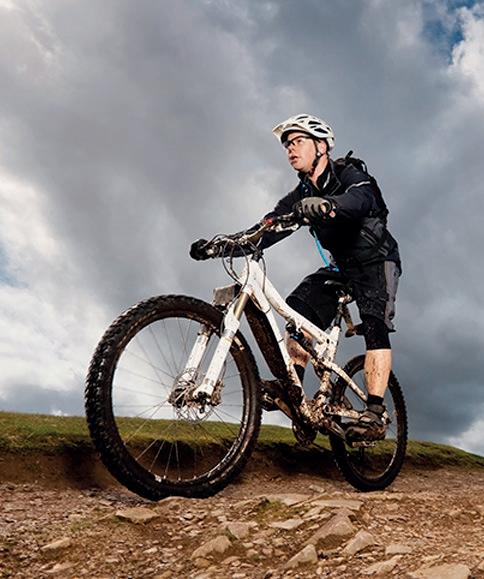
ME
SCAN
NOV 2023 NEC BIRMINGHAM N V REGISTRATION IS OPEN
Lets Think Big Together

Everything we do at DeLaval is about helping dairy farmers sustainably and profitably milk cows. That is why we don’t just have one type of system, but we have all types of systems, which means we can make sure you get the system that is right for you.


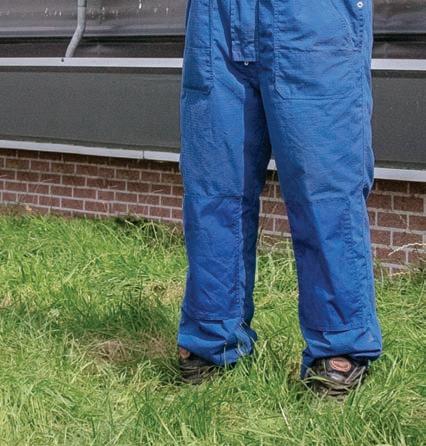



bigger?
up for a free consulation today A System Designed Around You Scan here to find out more
delaval.com Thinking
Sign

















































































































































































































































































































































































































































































































































































































































































































































































































